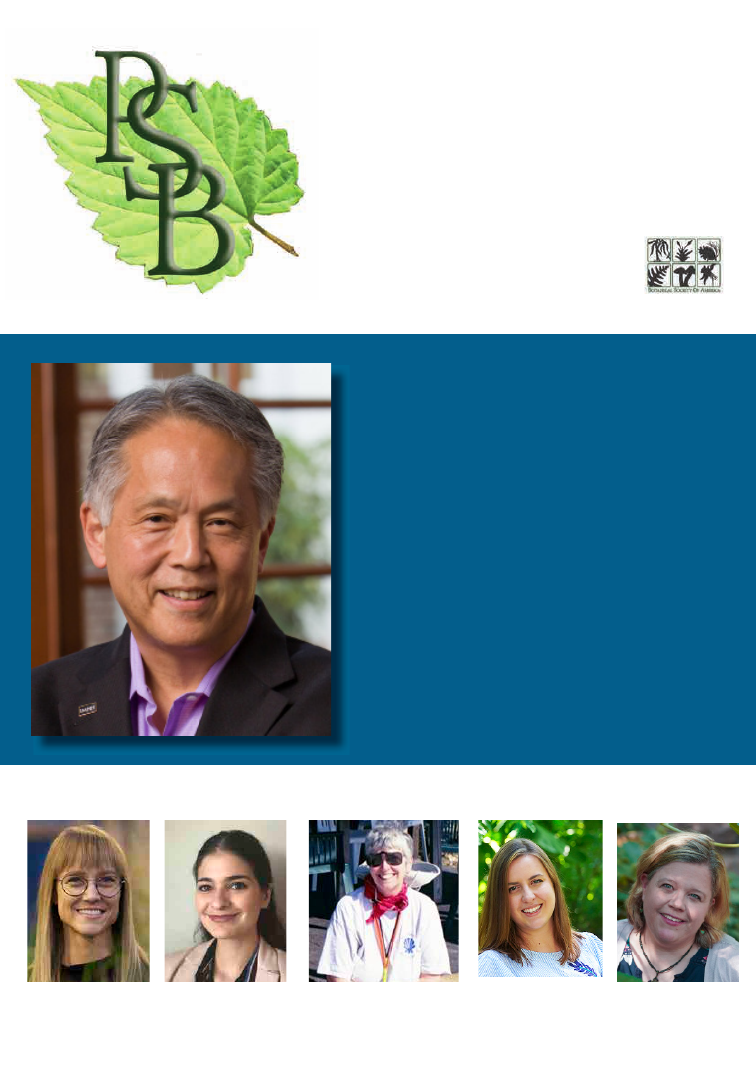
IN THIS ISSUE...
FALL 2021 VOLUME 67 NUMBER 3
PLANT SCIENCE
BULLETIN
A PUBLICATION OF THE BOTANICAL SOCIETY OF AMERICA
Lee Kass: Eliminate standardized tests
for grad school...... p. 181
Welcome to new BSA employees Tricia Jackson
& Jennifer Hartley.... pp. 167/185
Virtual Congressional Days Visit report from
Taylor AuBuchon-Elder & Mary Sagatelova.... p. 160
The Little Red Hen
&
Culture Change
by David Asai
Botany 2021 Speaker
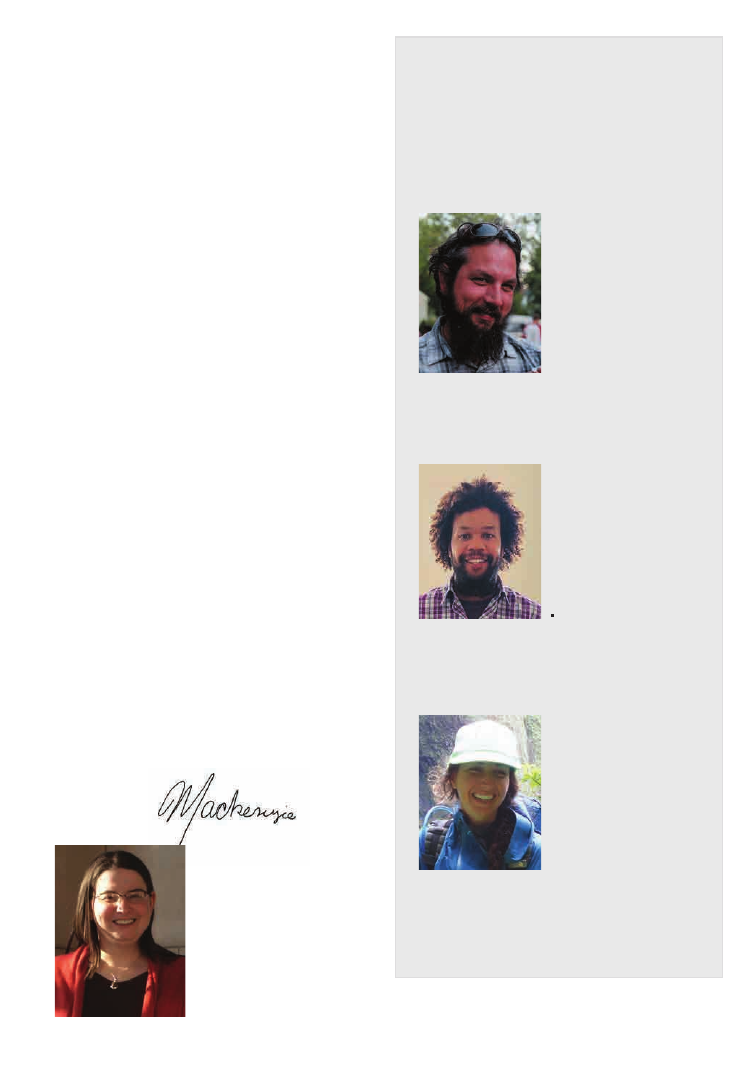
Fall 2021 Volume 67 Number 3
PLANT SCIENCE BULLETIN
Editorial Committee
Volume 67
FROM THE EDITOR
David Tank
(2021)
Department of Biological Sci-
ences
University of Idaho
Moscow, ID 83844
dtank@uidaho.edu
James McDaniel
(2022)
Botany Department
University of Wisconsin
Madison
Madison, WI 53706
jlmcdaniel@wisc.edu
Seana K. Walsh
(2023)
National Tropical Botanical
Garden
Kalāheo, HI 96741
swalsh@ntbg.org
Greetings,
In this issue of PSB, we present the BSA’s
new strategic plan and, as always, highlight
many society efforts that fall into each of
the four strategic priorities.
These topics are echoed in the report from
the International Affairs Committee, an
opinion piece on standardized admission
exams, and in our feature article by David
Asai, which I am particularly excited to
share.
We celebrate the research and scholarly
excellence of our Botany 2021 award
winners, as well as the ongoing success of the
BSA’s science education programs. We are
also delighted to feature many of our science
communicators who enthusiastically
educate the public about plants and plant
science and present the reports from our
Public Policy Award winners who attended
this year’s congressional visit day.
One of the highlights of being PSB editor
is hearing from BSA members about their
endeavors to promote and support botany
and botanists. Stay tuned to the PSB for
more in 2022!
Sincerely,
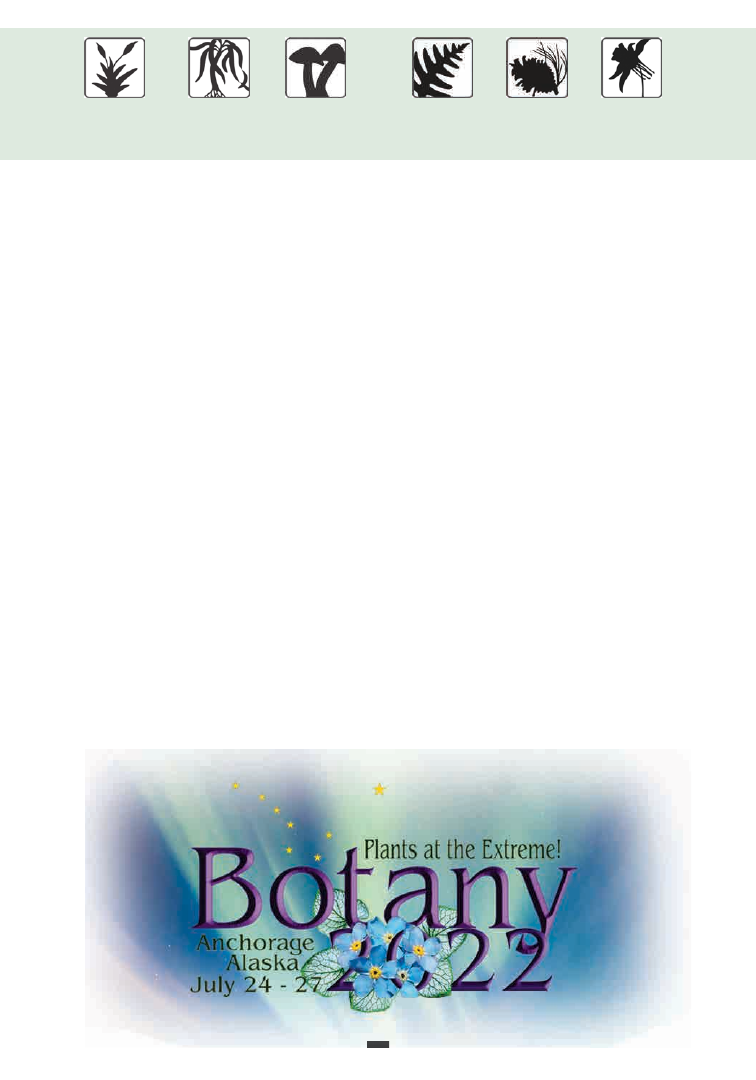
151
TABLE OF CONTENTS
SOCIETY NEWS
BSA Announces New Strategic Plan..............................................................................................................152
Report from the BSA’s International Affairs Committee......................................................................157
National Botanical and Natural History Societies and Organizations............................................158
Report from Virtual Congressional Visits Day.............................................................................................160
A SciComm Celebration.........................................................................................................................................164
BSA Welcomes New Accounting Manager, Tricia Jackson..............................................................167
Botanical Society of America’s Award Winners (Part 2) ......................................................................168
SPECIAL FEATURES
The Little Red Hen and Culture Change.......................................................................................................174
Opinion: It’s Time to Eliminate Standardized Tests for Graduate School Admissions ......181
SCIENCE EDUCATION
Welcome to Jennifer A. B. Hartley! BSA’s New Education Programs Supervisor.................185
Farewell to Jodi Creasap Gee.............................................................................................................................186
Update on PlantingScience and Master Plant Science Team...........................................................187
PlantingScience Mentors still needed for Fall 2021 Teams...............................................................188
PlantingScience incorporated in Science Outreach Course at Syracuse University ...........188
STUDENT SECTION
Advice from the Careers in Botany Luncheon ..........................................................................................192
Papers to Read for Future Leaders ..................................................................................................................194
MEMBERSHIP NEWS
Renewal Season Has Started! .............................................................................................................................195
Introducing the 2021-2022 BSA Student Social Media Liaison Teressa Alexander...........196
Thank you Sonal!.........................................................................................................................................................196
BOOK REVIEWS
............................................................................................................................................................197
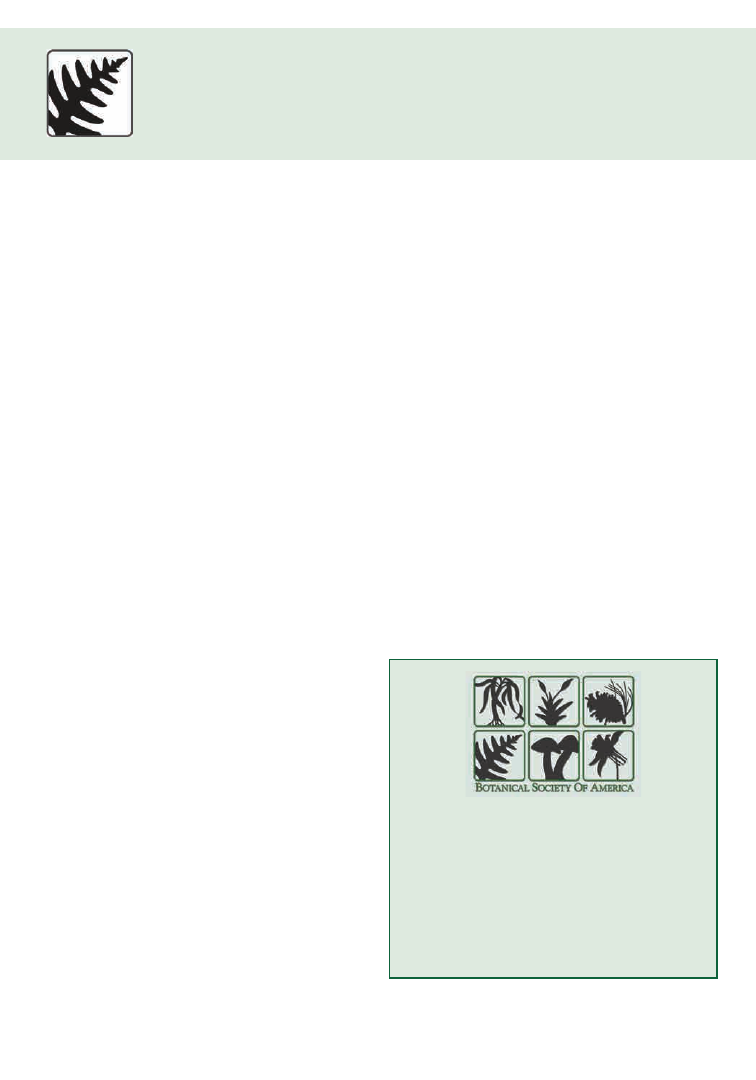
152
SOCIETY NEWS
STRATEGIC PRIORITIES
To ensure that we set forth a path that will
build a stronger botanical community and
serve our mission, the Botanical Society of
America embarked on the process of creating
a new 5-year strategic plan in 2020. BSA
membership was surveyed and a diverse
and broad coalition of members debated
and discussed current and future needs.
The resulting priorities, goals, and strategies
were finalized and approved at the 2021 BSA
Members’ Business Meeting on July 22, 2021.
The strategic plan is a culmination of a very
intentional multi-step process in which we
prioritized inclusion, transparency, and BSA
community involvement. The BSA officers,
committees, and staff will take the plan,
outlined below, and move forward in the
BSA Announces New Strategic Plan
As most of you know, the Society spent much of the last year developing a new Strategic Plan. The
strategic plan is a culmination of a very intentional multi-step process in which we prioritized
inclusion, transparency, and BSA community involvement.
We are proud to present the revised BSA Mission statement and Strategic Plan to you (available
at https://botany.org/file.php?file=SiteAssets/home/BSA_Strategic_Plan_2021.pdf), as it was
approved by the BSA Council and at the All Members Business meeting in July 2021. Our staff
and leadership will be working on the implementation of several of these goals and strategies in the
coming year.
I want to thank our past President, Cindi Jones, for her leadership in this area as well as the 30
members of our Strategic Planning Committee and all our Section and Committee Chairs who
provided feedback over this last year.
-Michael Donoghue, BSA President
OUR MISSION:
To inspire and promote an inclu-
sive global community committed to
advancing fundamental knowledge
and innovation in the botanical
sciences for the benefit of people and
the environment.
next five years to implement changes that will
make the BSA community stronger, more
connected, and ready for global changes and
the future of plant science.

PSB 67(3) 2021
153
HUMAN DIVERSITY, EQUITY
AND INCLUSION (DEI)
Goal 1: The BSA will be an antiracist and
anti-discriminatory society.
Strategies
1.1 Offer DEI leadership training opportunities
to members, including students, that encourage
and foster development as inclusive leaders and
innovative educators.
1.2 Analyze all policies, practices, and expenditures
of the society to determine if and how they may be
leading to DEI disparities, and then eliminate or
revise policies and cease practices and activities
that do not support DEI goals.
1.3 Foreground considerations of diversity, equity
and inclusion in all society policies and practices.
1.4 Develop activities and opportunities that
extend beyond the BOTANY conference and
that do not present financial barriers for member
participation.
Goal 2: The BSA will be a scientific society
whose membership reflects the diversity of
society as a whole.
Strategies
2.1 Increase visibility of who is a botanist,
showcasing the diversity of the profession and the
scientists themselves.
2.2 Prioritize collaborations with HSIs/HBCUs/
MSIs/Tribal and Community colleges and with
other professional societies and organizations to
expand access to and inclusion of their students in
botanical career pathways.
2.3 Increase recruitment and retention of BIPOC
members.
2.4 Increase the diversity of leadership on the
Board and all BSA committees.
Goal 3: The BSA will be a leader in
developing initiatives to recruit and support
diversity and in advocating for institutions
(academic, government, etc.) to recognize
and reward the diversity enhancing activities
of their members.
Strategies
3.1 Support and facilitate increased exposure to
the botanical sciences in institutions that serve
underrepresented groups.
3.2 Develop support documentation that will help
encourage members to advocate for promotion
and tenure metrics that reward contributions to
DEI at their institutions.
3.3. Advocate for the importance of diverse
perspectives and inclusive excellence in all aspects
of science and science education.
Goal 4: The BSA will actively evaluate
its progress in recruiting and retaining
members from underrepresented groups,
and in understanding inequities in access
and opportunity among its members.
Strategies
4 .1 Collect and make available demographic data
to be used in assessment and planning following
IRB protocols to ensure privacy.
4.2 Develop and deploy tools for assessing the
differential impact of access to existing and future
opportunities (e.g., PLANTS), awards, grants, etc.
4.3 Collect data to understand why individuals
join and leave the Society.
4.4 Share data and assessment with the
membership on an annual basis to regularly revise
policies and practices that improve support for
diversity, equity, and inclusion.

PSB 67(3) 2021
154
RESEARCH AND SCHOLARLY
EXCELLENCE
Goal 5: The impacts of BSA publications
(American Journal of Botany, Applications
in Plant Sciences, Plant Science Bulletin) will
increase, as evidenced by various metrics.
Strategies
5
.1 Broaden the scope of research represented in
BSA journals and at conferences while supporting
the current core of the society in organismal,
structural, developmental, and evolutionary
biology.
5.2 Attract more researchers from a wide range
of plant-related areas (e.g., conservation, forestry,
horticulture, plant-microbe interactions) to our
publications and conferences.
5.3 Create and promote greater international,
cross- and interdisciplinary opportunities for
collaboration within BSA journals.
5.4 Move toward an entirely open access publication
model while maintaining low publication fees for
members.
Goal 6: The recognition of botany as an
essential biological and environmental
discipline will increase within the scientific
community.
Strategies
6.1 Promote the science of botany as foundational
to global restoration and actively promote
interdisciplinary efforts related to repair earth
systems.
6.2. Increase the promotion of botany and its
importance as a professional scientific discipline to
confront public and professional misperceptions.
6.3 Provide expertise to funding agencies on
current/future issues related to botany.
6.4. Promote inclusive ‘plant-person’ identities
to address negative associations with botanical
sciences and science in general (elite, exclusive, etc.)
6.5 Increase recognition of the value of indigenous
botanical knowledge
Goal 7: The increased prominence of the
BSA as a global leader in research, teaching,
and advocacy related to the botanical
sciences will be reflected in at least a 5%
membership increase over three years.
Strategies
7.1 Establish the BSA as a prominent leader on
current issues related to our field and the mission
of the society.
7.2 Recruit and retain more professionals at all
career stages who study, teach and/or promote
botanical sciences to BSA from all forms of
academic and non-academic institutions.
7.3 Recruit/retain/support members from outside
of the society, or who have been affiliated in the
past, through presentation, service, or publication
opportunities
7.4 Increase international participation in society
activities and governance.
7.5 Evaluate the possibility of revising membership
fees to include additional categories/price points
to better accommodate international members.
Goal 8: The BSA will provide its members
with increased support for scholarly
excellence and research.
Strategies
8.1 Increase the number of research awards and
strategically increase or revise honors and awards
to reflect BSA core values.
8.2 Promote discussions with decision-makers
in funding agencies (e.g., The National Science
Foundation) with the aim of increasing

PSB 67(3) 2021
155
understanding of the importance of botany and
providing additional funding opportunities.
8.3 Create new mechanisms for the recognition of
scholarly excellence that promote our members
beyond the society.
Goal 9: The annual BOTANY conference
will be the premier venue to showcase and
disseminate the latest research in botany.
Strategies
9.1 Increase access to the conference, especially
for members of underrepresented groups.
9.2 Increase promotion of and access to special
lectures/symposia beyond the conference.
9.3 Incorporate a virtual component in all future
conferences.
ORGANIZATIONAL
IMPACT AND VISIBILITY
Goal 10: The appreciation of plants and the
field of botany will increase in society.
Strategies
1
0.1 Connect BSA resources with non-BSA
audiences through stronger collaboration with
other regional, national and international plant
societies.
10.2 Increase emphasis on science communication
and the development of science communication
skills.
10.3 Highlight BSA members’ expertise and
the centrality of plants in solving pressing
environmental and societal problems (climate
change, biodiversity loss, benefits of nature to
mental and physical health, etc.)
10.4 Engage with the public to promote curiosity
and appreciation for plants, nature, and science.
Goal 11: The BSA will be a major contributor
in efforts to educate the public about
science and to shape regional, national
and international policy regarding science
and conservation; the BSA will be seen as
a premier source of unbiased botanical
information.
Strategies
11.1 Reward BSA members for leadership efforts
beyond the BSA in areas such as innovation,
strategic communication, etc.
11.2 Initiate or collaborate on public policy
efforts broadly focused on science, botany, and
pressing environmental stresses (climate change,
biodiversity loss, etc.).
11.3 Amplify the visibility of BSA members
participating in regional, national and
international efforts that promote the role of
science in society, influence public policy, shape
educational initiatives, etc.
11.4 Lead/participate in cross-society data
collection efforts to better understand
opportunities and challenges, and work toward
common goals focused on human diversity and
scientific advancement.
Goal 12: The BSA will be recognized as
the leader in education for the botanical
sciences.
Strategies
12.1 Encourage, assist, and advocate for life science
educators at all levels to include botanical science
in their curricula, standards, and lesson plans.
12.2 Ensure that education and outreach programs
are grounded in evidence-based best practices of
botanical science education and contribute to our
goals in broadening participation.
12.3 Lead workshops throughout the year targeted
toward students and early career academics
and naturalists to foster future generations of
exceptional educators in botanical science.

PSB 67(3) 2021
156
PROFESSIONAL
DEVELOPMENT
Goal 13: All members of the BSA will share
a strong sense of belonging to the society.
Strategies
13.1 Establish and support networks of affinity
groups that enhance career development by
providing accessible channels of communication
among diverse members.
13.2 Develop and maintain strong frameworks that
span career stages and peer mentoring focused on
professional development.
13.3 Collect data to better understand what the
BSA can do to support student members as they
transition to professional positions, thus reducing
attrition from botanical careers at these junctures.
13.4 Continue to increase the number and size
of awards for graduate students/postdocs in
outreach.
Goal 14: Membership in the BSA by people
outside of academia will increase by at least
10% over five years.
Strategies
14.1 Highlight the many diverse and cross-
disciplinary pathways to successful careers in the
botanical sciences outside of academia through
publications, conferences and activities, and
develop initiatives to support and retain BSA
student members to transition to non-academic
professional careers.
14.2 Review and revise our governance structure
to generate benefits for non-academic career
members, accounting for career path and career
stage as two important axes of diversity.
14.3 Review the use of a Careers job board on our
website and consider ways to better disseminate
and heighten awareness of non-academic careers.
14.4 Create tools for career exploration, mentoring,
and building connections across interdisciplinary
boundaries.
Goal 15: The Board, committee chairs,
and staff will be well prepared to lead the
organization with foresight and fiduciary
responsibility.
Strategies
15.1 Provide leadership training opportunities
for all Board members, Committee Chairs, and
Section Chairs.
15.2 Create a professional development plan for
all staff to ensure continued professional growth
and incorporate best practices in all aspects of
management.
15.3 Build institutional knowledge and facilitate
the smooth transfer of operations and relevant
resources to future society leadership.

PSB 67(3) 2021
157
BSA’s International Affairs Committee met
this summer prior to Botany 2021. We are
happy to share with you some details about
the committee and what issues we have been
discussing recently. Members of the committee
include Hugo Cota-Sanchez (Chair); Cecilia
Zumajo (Student Representative); Johanne
Brunet; Suman Neupane; Shengchen Shan;
Heather Cacanindin, Executive Director,
ex officio; Melanie Link-Perez, Program
Director, ex officio; and Michael Donoghue,
President, ex officio.
The International Affairs Committee aims
to link BSA with other national botanical
societies outside the United States and to
connect BSA members to international
botanical events, including the International
Botanical Congress (IBC), which is held every
six years. The committee seeks to support
young botanists attending the IBC, as well
as other important international meetings.
The committee informs the Society regarding
international activities impacting the study of
plants through articles in the Plant Science
Bulletin, symposiums and colloquium at the
annual Botany meetings, and other activities.
Each year, new members join the committee
as the same number of members rotates
off. This committee is chaired by a member
serving their third year on the committee.
At our recent meeting, we spent a good deal
of time discussing international botanical
meetings that are in the works. We would
like to make our membership aware of the
following:
• Latin American Botanical Congress –
Cuba (month TBD) 2022
• Mexican Botanical Congress – October
2022
• Annual Meeting of the Canadian
Botanical Association – Canada (month
TBD) 2022
• National Botanical Congress – Brazil
(month TBD) 2022
• International Congress of Sexual Plant
Reproduction - Prague, Czech Republic,
June 2022 (https://www.iasprr.org/index.
php?browse=news&nid=52)
• International Conference on Botany
and Plant Science – Helsinki, Finland,
July 2022 (https://waset.org/botany-
and-plant-science-conference-in-july-
2022-in-helsinki)
• Association of Tropical Biology and
Conservation – Cartagena, Colombia,
July 2022
• International Botanical Congress
Madrid, Spain, July 2024
If you know of any upcoming international
activity or events that should be shared with
our BSA community, please email those
to bsa-manager@botany.org so we can add
them to our list and assist in their promotion.
In December 2021, BSA will send out a call
for committee service applications. We will be
seeking two new members for the International
Affairs Committee and one student
representative as well. Please consider applying
for committee service and joining in 2022!
REPORT FROM THE BSA’S INTERNATIONAL
AFFAIRS COMMITTEE

PSB 67(3) 2021
158
NATIONAL BOTANICAL AND NATURAL HISTORY
SOCIETIES AND ORGANIZATIONS
For more information about the committee, see https://botany.org/home/governance/
international-affairs-committee.html.
(Compiled by IAC, July 2021)
China
• Botanical Society of China: http://
www.botany.org.cn/English/content.
aspx?PartNodeId=109
• China Wild Plant Conservation Association
(CWPCA): https://www.wpca.org.cn/
Colombia
• Asociación Colombiana de Botánica: https://
www.biciq.com/events/asociacion-colombi-
ana-de-botanica-afiliacion/
• FaceBook: https://www.facebook.com/Aso-
ColBotanica/
Cuba
• Sociedad Cubana de Botánica: http://www.
socubot.cu
Czechia
• Czech Botanical Society: https://botanospol.
cz/en/node/42
Denmark
• Botanical Society of Denmark: https://bota-
niskforening.dk
Europe
• Federation of European Societies of Plant
Biology: https://fespb.org
France
• Societé Botanique de France: https://societe-
botaniquedefrance.fr
Germany
• German Society for Plant Sciences: https://
www.deutsche-botanische-gesellschaft.de/en/
home
Argentina
• Sociedad Argentina de Botánica: https://bo-
tanicaargentina.org.ar
Australia
• Australian Native Plant Society: http://anpsa.
org.au
Australasia
• Australasian Systematic Botany Society Inc.:
http://www.asbs.org.au
Belgium
• The Royal Botanical Society of Belgium
http://www.botany.be/en/node/1
Brazil
• Sociedade Botánica de São Paulo: https://bo-
tanicasp.org/en
• Sociedade Botánica do Brasil: https://www.
botanica.org.br
Canada
• Canadian Botanical Association /
L’Association Botanique du Canada: https://
www.cba-abc.ca
• Canadian Wildlife Federation: https://cwf-fcf.
org/en/explore/gardening-for-wildlife/plants/
buy/native-plant-suppliers/native-plant-sup-
pliers/on/204.html
• Nature Conservancy of Canada: https://www.
natureconservancy.ca/en/
Chile
• Sociedad Botáncia de Chile: http://socbo-
tanica.cl

PSB 67(3) 2021
159
NATIONAL BOTANICAL AND NATURAL HISTORY
SOCIETIES AND ORGANIZATIONS (cont'd.)
Great Britain and Ireland
• Botanical Society of Britain and Ireland:
http://www.asbs.org.au
Internet Directory for Botany
• Botanical societies, international botanical
organizations: https://www.bgbm.org/IDB/
botsoc.html
India
• Indian Botanical Society: https://indianbot-
soc.org/index.php
Israel
• The Israeli Society of Plant Sciences: https://
www.israelplant.org.il/en
Italy
• Società Botanica Italiana: https://www.soci-
etabotanicaitaliana.it
• International Union for the Conservation of
Nature
International Union for the Conservation of Nature
• https://www.iucn.org
Japan
• Botanical Society of Japan (BSJ): https://bsj.
or.jp/index-e.php
Mexico
• Asociación Mexicana de Orquideología,
A.C.: http://amo.com.mx/indexesp.html
• Sociedad Botánica de México: https://www.
socbot.mx
• Sociedad Mexicana de Cactología, A.C.:
http://www.mexican.cactus-society.org/eng-
lish.html
Philippines
• Association of Systematic Biologists of the
Philippines: http://asbp.org.ph
Poland
• Polish Botanical Society: https://pbsociety.
org.pl/default/en/
Spain
• Sociedad Botánica Española: http://www.rjb.
csic.es/jardinbotanico/jardin/contenido.php?
Pag=293&tipo=noticia&cod=7219
Switzerland
• Swiss Botanical Society: https://botanica-
helvetica.ch/en
United Stares of America
• American Society of Plant Taxonomists:
https://www.aspt.net
• Botanical Society of America: https://botany.org
• California Native Plant Society: https://www.
cnps.org
• The Nature Conservancy: https://www.na-
ture.org/en-us/
• Torrey Botanical Society: http://www.torrey-
botanical.org
• Southern Appalachian Botanical Society:
https://sabs.us
Other International Societies
• International Association for Plant Taxono-
my: https://www.iaptglobal.org
• The International Compositae Alliance:
https://www.compositae.org
AASP – The Palynological Society: https://
palynology.org
• The International Organisation of Palaeo-
botany https://palaeobotany.org

PSB 67(3) 2021
160
A Personal Account by
Mary Sagatelova, MPA
Public affairs—and by extension public
policy—can broadly be defined as purposeful
action taken by the government in order to
address a general issue. Seemingly simple but
fraught with complexity, the field of public
affairs is often overlooked as one of the most
important professional fields in our society.
Every niche within society is affected in
some capacity by government affairs and the
implementation of public policy. Perhaps most
salient is the effect of public policy decisions
on science and scientific research. Policy
decisions have the capability of prioritizing
research areas, blocking or authorizing
projects, and most importantly, funding our
work through federal allocation.
REPORT FROM VIRTUAL
CONGRESSIONAL VISITS DAY
Each year, the BSA Public Policy Committee awards two early-career botanists the opportunity to
attend the American Institute of Biological Sciences’ Congressional visits Day. This event is hosted by
the Biological and Ecological Sciences Coalition, and recipients obtain first-hand experience at the
interface of science and public policy. The first day includes a half-day training session on science
funding and how to effectively communicate with policymakers provided by AIBS. Participants then
meet with their Congressional policymakers, during which they will advocate for federal support of
scientific research. This article details the experiences of this year’s recipients.
As a graduate student studying Evolution,
Ecology, and Organismal Biology, I am
extremely cognizant of the potential policy
implications of scientific research, especially
within botanical research. Seldom do I come
across research that does not reference policy
application in the real world. The more I saw
these policy connections, the more I became
interested in working at this intersection of
science and policy. As such, I felt incredibly
honored by the opportunity to be recognized
by the Botanical Society of America as a Public
Policy Award recipient, and to be afforded
the opportunity to attend the 2021 Virtual
Congressional Visits Day.
The first two days, I participated in a virtual
communications boot camp through the
American Institute of the Biological Sciences
(AIBS). Despite the virtual setting, I was able
to meet and connect with fellow graduate
students, postdocs, professors, and botanical
professionals, all while learning about the
specifics of the policy process. This training
covered a wide range of topics! We were
provided with the tools necessary to craft
exceptional elevator pitches, interact with
the media, and effectively communicate our
message to decision makers. Through a variety
of multimedia resources, practice pitches, and
interviews, the training provided through
AIBS was instrumental in preparing me for
the virtual congressional visits!

PSB 67(3) 2021
161
Working within a regional pairing, I
successfully met with the offices of five different
congressmen across Indiana and Ohio. In these
meetings, we advocated for enhanced funding
for the National Science Foundation (NSF),
specifically encouraging representatives and
senators to approve the proposed $10.2 billion
budget for NSF. Further, we asked for support
for the then-newly introduced Research
Investment to Spark the Economy (RISE) Act.
This act would authorize approximately $25
billion across different federal agencies to be
allocated to independent research institutions,
national laboratories, and universities, with
the specific intent of addressing pandemic
related disruptions to research and learning.
Each of us shared anecdotes of how NSF
funding has been instrumental in our home
states, universities, and labs, elaborating on
how the pandemic has affected our research
and the benefits of increased funding.
Over two days, we met Senator Michael Braun
(R-ID), Representative Trey Hollingsworth
(R-ID), and the offices of Senator Sherrod
Brown (D-OH), Senator Rob Portman (R-
OH), and Senator Todd Young (R-ID).
Each meeting was a unique experience in
which we were able to apply the training we
received just a few days prior and successfully
communicate our messages in advocating for
increased scientific funding. I was particularly
encouraged by the office of Senator Brown,
who intended to introduce policy specifically
targeting systemic issues within STEM.
Specifically, Brown’s office asked about our
experiences in STEM and shared intentions
of increasing funding to remove barriers in
STEM for minority groups, as well as creating
new government jobs for more scientists!
I am incredibly fortunate that I was able
to participate in the AIBS training and the
virtual congressional visits. Public policy often
seems like an impervious and intimidating
field because of the perceived complexity of
politics. However, through this experience, I
was able to build the basic skills and experience
necessary to effectively confer on public policy
and communicate science professionally. I
look forward to building upon these skills and
continued scientific advocacy.
(Mary is from the College of Arts and Sciences
Department of Evolution, Ecology, and
Organismal Biology; The John Glenn College of
Public Affairs Public Policy and Management)
Taylor AuBuchon-Elder’s
Experience
I was fortunate enough to receive BSA’s
Public Policy Award in 2020 just prior
to the beginning of the pandemic in the
United States. My fellow award recipient,
Mary, and I were planning accommodations
and preparing for the whirlwind that is
Congressional Visits Day (CVD) to argue for
NSF funding. Sadly, we never made it there in
person; but I think this year’s virtual format
for both the American Institute of Biological
Sciences (AIBS) Communications Bootcamp
and CVD was an incredible success. I feel
truly grateful that I was able to be a part of it.

PSB 67(3) 2021
162
The AIBS Communications Bootcamp’s
success, I believe, was because of Dr. Jyotsna
Pandey and the supportive and welcoming
attendees. Jyotsna led us through two days of
lectures, group exercises, and career panels—
all of which I found to be enlightening and
challenging. One thing I think scientists can
always improve upon is our communication
of scientific ideas, especially in our areas of
expertise. A group exercise where you have to
describe your work’s purpose in 1 minute will
definitely help get you there!
To prepare for our meetings with
representatives, we reviewed best practices
for talking to policy makers: Why should
they care? What motivates them? Are they
up for re-election? While we went over
communication strategies collectively, our
job as individuals was to read up on our
own representatives—their voting record,
committees on which they serve, political
viewpoints, etc. I live in Missouri so I have
been aware of my representatives’ conservative
voting record when it comes to federal
spending, but I was optimistic we could make
a strong argument for basic research funding
given the last year’s strong reliance on robust
science. I was assigned to Representative Ann
Wagner (R-MO), Senator Roy Blunt (R-MO),
Senator Josh Hawley (R-MO)—along with my
partner, Claire’s, representatives in Tennessee,
Senator Marsha Blackburn (R-TN) and
Senator Bill Hagerty (R-TN). We knew asking
for increased federal funding for the NSF was
going to be a tall order.
Our asks on behalf of the AIBS were $10.2
billion for NSF for FY 2022, President Biden’s
budget request, an increase from FY 2021’s
$8.5 billion, and for our representatives
to support or co-sponsor the Research
Investment to Spark the Economy (RISE)
Act to address pandemic-related disruptions
and closures in basic research funded by the
federal government. I’m not sure if there’s ever
been a more important time to stress the need
for increased investment and engagement in
NSF-funded science. We knew it was pertinent
to tell our stories and bring the message home
that we all benefit from basic research.
The lab I work in operates almost solely under
NSF funding; and we specialize in cereal
crops—more specifically, we study the genetic
diversity of wild grasses and their relatives,
with the end goal that this knowledge will
provide other scientists and crop breeders with
the necessary building blocks for engineering
more efficient crops in harsher climates.
This is relevant research being in Missouri,
considering our annual corn production value
in 2020 was around $2.4 billion. The current
project we’re working on under NSF funding
also directly employs around 30 people at
several research institutions—truly exciting,
multi-faceted, and collaborative work. When
talking with my representatives, I wanted to
highlight that.
One hurdle the project faced early on was
a large cut to its budget—half of it—when
the NSF-PGRP was specifically targeted in
2018. I’m not sure why someone somewhere
decided the Plant Genome Research Program
needed half the money; maybe it was the
idea that there is “too much” basic research
funding out there—something we heard
when talking to a legislative staffer during
CVD. I admittedly was taken aback slightly
by that idea. And while I did not necessarily
have a retort specifically prepared for it, I
was able to draw from my own experience
in budget cuts. Because our project’s budget
was cut so significantly, we actually lost
the translational part of the work—going
from a project focused on basic research for

PSB 67(3) 2021
163
directly applied results in crops, to a project
heavily focused on just the basic stuff. So
while some Congressional offices vote to cut
basic research funding to shift focus to more
applied work; ironically, they inadvertently
disrupt the downstream applications of said
basic research. I highlighted this point during
our meeting with a legislative staffer, and I
hope it resonated.
The rest of our meetings went on without a hitch
and were generally pleasant and productive,
except for one no-show. Virtual meetings
may not be everyone’s favorite, but I think it
was fairly conducive for our purposes, with a
strict start time and limited interruptions, as
I’m sure would not have been the case if we
were running around Capitol Hill! We made
our cases to the staffers, and they talked to us
about where their bosses stood and what their
current priorities were. Just before we began
our meetings, we were made aware of the
Endless Frontier Act, a large sweeping funding
bill that would pump an historical amount of
money into federally funded science, even
creating a new Directorate at the NSF. The bill
was making its rounds around Congress and
it seemed to be taking up a lot of everyone’s
time, so it came up frequently after we made
our case for NSF funding.
I’m sincerely grateful for the opportunity to
have attended CVD on behalf of BSA. It was
an exciting, educational, and tiring few days
training for and meeting with Congressional
staffers. I learned firsthand how initiatives
and situations can change in a minute and
how succinct and effective we have to be at
arguing for basic research funding (and how
important it is to stay involved!).
(Taylor is from the Donald Danforth Plant
Science Center, St. Louis, MO)
Society for the Preservation of Natural History Collections
Join our global community dedicated to the preservation, conservation
and management of natural history collections
spnhc.org
SPNHC 2022: hosted by Royal Botanic Garden Edinburgh and National Museums Scotland, UK
SPNHC 2023: hosted by California Academy of Sciences, San Francisco, USA, May 28-June 2, 2023
“It’s pronounced “SPINACH!”
spnhc
_
@SPNHC
@www.spnhc.org
SPNHC

PSB 67(3) 2021
164
Tell us a little about yourself as a SciCommer.
When did you become active? What
platforms do you use?
Naomi Volain (NV): I’ve always been a
science communicator in some form in
my career—nutrition, medical advertising,
science teaching and education—but it
wasn’t until 2020 that I started creating plant
and science Comic strips. I put them on the
Comics page of my website, Plants Go Global.
Instagram, Facebook, Twitter and LinkedIn
are my social platforms.
Giovanna Romero (GR): I started as a
SciCommer a year ago. I use Twitter, Instagram
and Facebook platforms. These platforms are
linked to BIOWEB Ecuador. BIOWEB is a
webpage managed by Catholic University of
Ecuador. I post every Monday morning about
native plants of Ecuador. The goal is that people
get interested in Ecuadorian plant diversity.
Generally, I upload pictures that I take every
time I go to the field in private preserved areas
or National Parks. When I go to the field, to me,
it is challenging because plants in the Tropics
have varying blooming times. I take pictures
of plants that I think would be attractive to
people (based on flower color, flower forms,
sori form, endemism, habit). Then, I identify
and post them. Sometimes, identification
takes time and it can even require a visit to
local herbaria, like QCA.
A SCICOMM CELEBRATION
Teressa Alexander (TA): I love communicating
plant science through intriguing articles I’ve
read about different plants, but I mainly focus
on cacao trees. My topics surround cropping
systems, climate change, social and economic
issues surrounding the cacao crop. I use
Instagram and Twitter (fairly new to Twitter)
to communicate this work.
Jacob Suissa & Ben Goulet-Scott (SG): Let’s
Botanize (@letsbotanize) is an Instagram-
based science communication series using
plant life to teach about ecology, evolution, and
biodiversity through engaging photography
and thoughtfully produced videos. As
gardening and outdoor recreation increase in
popularity, we are creating a digestible entry
point for a broad audience to indulge their
curiosity about plant life and biology more
generally. We started in January 2021 and are
active on Instagram and YouTube.
At Botany 2021, the BSA hosted the second annual SciComm Celebration.
Plant Science Bulletin
is pleased to highlight several of the SciCommers active in the Botanical community. Editor
Mackenzie Taylor reached out this fall to ask about their experiences and advice. Below are
highlights from their responses and information about how to follow them.

PSB 67(3) 2021
165
What are your strategies for being an
effective SciCommer and/or what have you
learned while engaging in SciComm?
NV: I’m really careful to get the science right,
to make sure the art is expressive, and to be
sure that the text teaches and entertains. The
small space limits of a Comic panel force me
to pare down the information into quick bites.
I’m also mindful of the speed people consume
media, so I work to make my art and words a
quick view.
GR: I began with no experience as a
SciCommer. Actually, I did not know
about it until I read in a tweet, posted by
Botanical Society of America, that what I
was doing is called “SciCommer.” It has been
a learning process and it is still. I started
with no strategies, but I have learned a lot.
My strategies now to engage people with
my posts are combining good pictures with
interesting facts about the plant species
being presented.
TA: I use photography and chart designs
to explain information on topics relevant
to cocoa research, plant biomechanics, and
climate change. By sharing, I’ve learned
about other interesting work in these areas
from other plant scientists/enthusiasts.
SG: As we created content for Let’s Botanize,
over time we realized that plant life is a
much more effective substrate for teaching
about ecology and evolution than we
initially appreciated. For example, plants are
plentiful and stationary, meaning it is easy
to closely observe and interact with them in
natural settings. Also, as the foundational
organisms in most ecosystems, they provide
ample opportunity for discussing ecological
processes. Most people are also already
familiar with the incredible variation
expressed in plants (e.g., the diversity found
in an arboretum, a nursery, or on your dinner
plants) that allows one to see how mutations
arise and lead to evolution in real time. In
addition, we are both PhD Candidates at
Harvard University in the department of
Organismic and Evolutionary Biology, with
a focus on plant evolution, so we are able to
leverage our academic expertise.
What is the most difficult thing about
engaging in SciComm?
NV: The nagging feeling to be constantly
present in social media.
GR: Posts must be very precise. So, to make
the story interesting and short is difficult.
TA: I think the most difficult thing about
engaging in SciComm is staying consistent
with content sharing. As a current graduate
student, I think there has to be a structured
plan of action in order to execute content
sharing consistently.
SG: Determining the fine line between too
much and too little detail. We want to keep
our audience engaged and teach them new
things without losing them in technicalities.

PSB 67(3) 2021
166
What do you consider your strongest
measure of success in SciComm (e.g.,
number of followers, personal engagement,
getting paid for your work)?
NV: The strongest measure is the feedback.
Hearing from people personally, beyond the
number of likes or followers deepens the
meaning of what I’m seeking to accomplish,
which is to create Comics that entertain,
educate, and connect people with plants.
Today I heard Olympic gymnast great Simone
Biles say, “I’m more than my medals.” This
resonated for me. But yes, monetary feedback
would surely validate my feeling of success!
GR: I would say, the strongest measure of
success in SciComm is the number of likes
in every post and sometimes when someone
asks a question or comments about the post.
TA: I consider the strongest measure of success
in SciComm to be engagement. When people
are engaging with your call of action, giving
feedback, asking questions, or just sharing
your content, it shows how impactful your
content is. As a result of high engagement,
gradual increases in followers and eventually
getting paid for your work will occur.
SG: Number of followers, and positive
comments/engagement with our work. Also
our connections with larger institutions such
as The Arnold Arboretum, Harvard Museum
of Science and Culture, and LabXchange.
What has changed about being a SciCommer
while you have been active?
NV: The need for truth and communicating
in science is even more critical since the start
of the COVID pandemic. What’s especially
needed now is for the public to learn, to truly
understand how the process of science works
to gain knowledge.
GR: Well, the fact that I was chosen to
participate as a SciCommer in Botany 2021
changed the way I see this activity. To me it was
unthinkable that posting about Ecuadorian
plants could be shown in a Conference. Being
a SciCommer made me understand that it is
possible to communicate through platforms
and reach a wide range of people.
TA: Platforms such as TikTok and new
Instagram features like reels have encouraged
new creative ways for SciCommers to engage
with their audience. The way I communicate
science can be diversified while reaching
broader audiences with increased creativity.
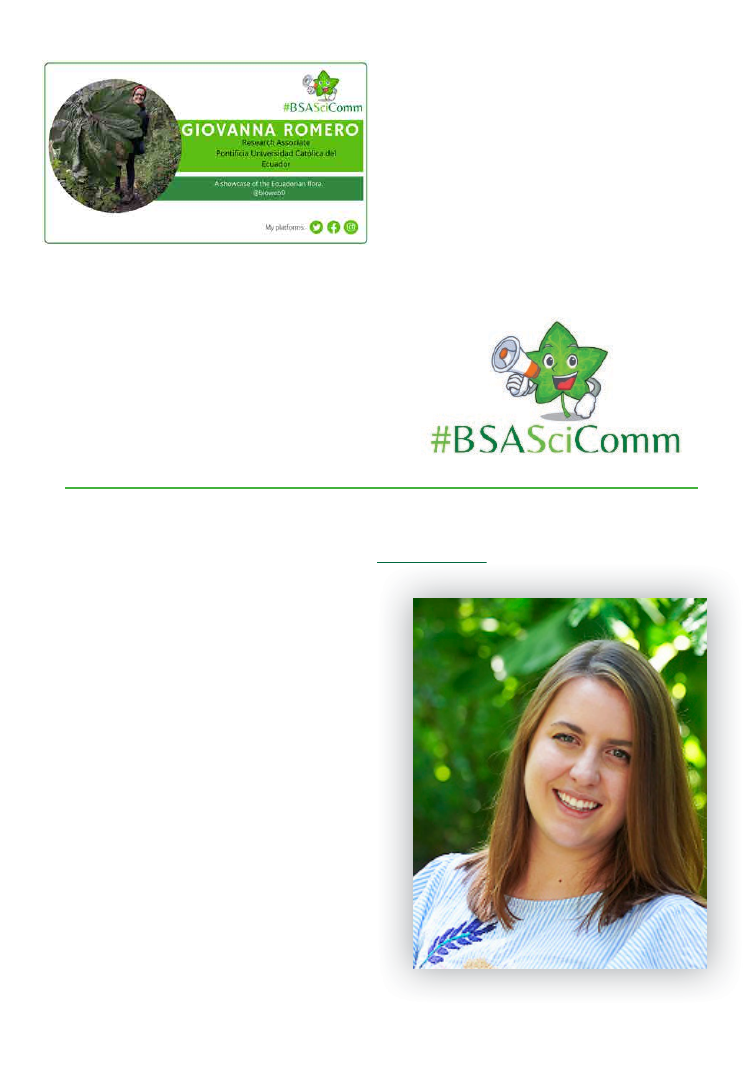
PSB 67(3) 2021
167
SG: We have been active for less than a year,
so not much. We still feel like we are learning
how to improve ourselves each day.
What would you like people to know
about SciComm?
NV: Communicating science brings science,
scientists, and the scientific process to the
world. SciComm is a deliberate, unique
initiative focused on this!
GR: SciComm is a rewarding activity, and it is
a way to engage people to know about plants.
TA: SciComm is a great way to challenge
misinformation and breakdown the
complexities of scientific language making it
useful and accessible to everyone.
SG: It’s fun and rewarding, but doing it well
takes a lot of forethought, planning, and time.
The BSA is pleased to announce the addition
of Tricia Jackson, CPA as the Society’s new
accounting manager. She reports to Executive
Director, Heather Cacaninidin.
Tricia comes to the BSA from public accounting,
where she specialized in audit and assurance
services for non-profit and healthcare clients
in the St. Louis Metropolitan area. She also
has more than 4 years of non-profit experience
working in various accounting roles.
Her other interests include cooking, hiking
through local and state parks, getting lost in
jigsaw puzzles, and hanging out with her two
pet rabbits, Buns and Jolene.
Tricia can be reached at tjackson@botany.org
.
BSA WELCOMES NEW ACCOUNTING MANAGER,
TRICIA JACKSON
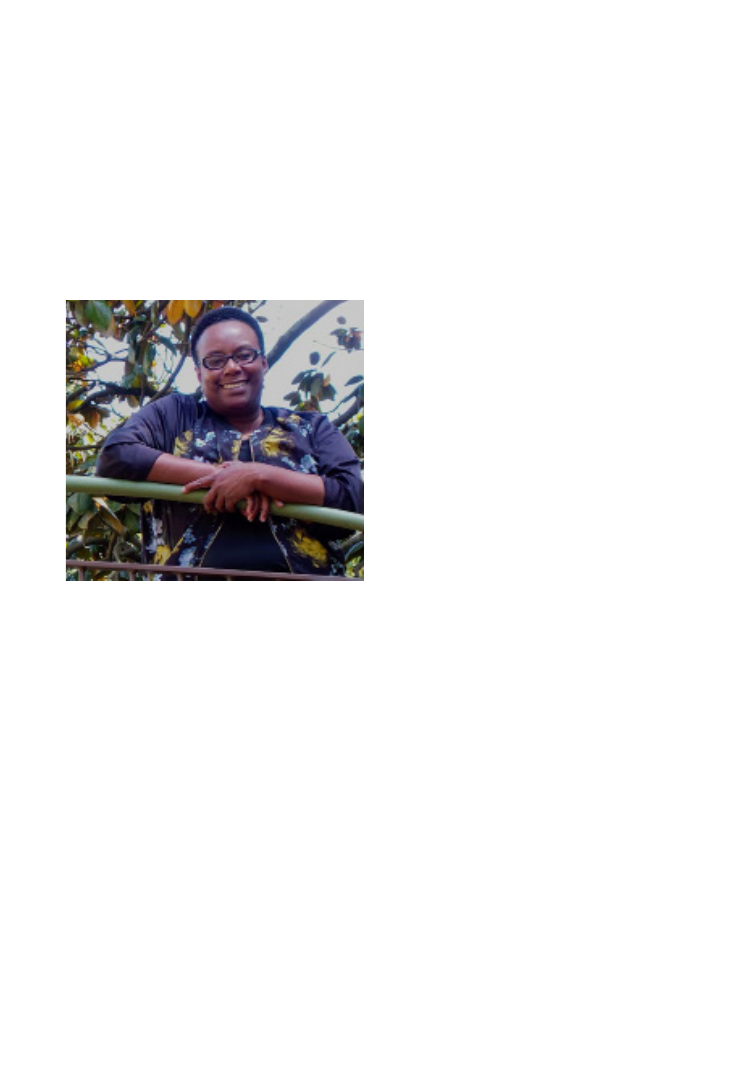
PSB 67(3) 2021
168
BOTANICAL SOCIETY OF AMERICA’S
AWARD WINNERS (PART 2)
CHARLES EDWIN BESSEY TEACHINGAWARD
(BSA in association with the Teaching Section and Education Committee)
Dr. Montgomery is an outstanding scientist
and one of the foremost ambassadors
of Botany today. Not only has she made
significant and lasting contributions to
our understanding of determinants of
cyanobacterial cell shape, signaling, and light
dependent Physiology but she has also burst
onto the scene as a public intellectual and
authority on plant science and mentoring.
With a huge Twitter following, she engages
and challenges us through sharing her science
and research on pedagogy through social
media, podcasts, online seminars, and special
lectures both for her scientific colleagues and
for the general public. Beronda is also one of
the co-founders of #BlackBotanistsWeek.
Her extraordinary and innovative approaches
to mentoring and teaching are documented
in a number of peer-reviewed articles
on pedagogy, mentoring and diversity in
STEM. In her work, she links the domains
of plant science and mentoring while
sharing that mentees, like plants, flourish
or struggle based on their environment—
not as a result of any inherent deficiency.
Dr. Montgomery has been described as a
visionary, an outstanding educator, and an
engaging source of inspiration by colleagues
and students alike. Her transformative
leadership encourages and enables others
to become more deeply engaged in teacher-
scholar outreach and training. As one of her
nominators described, “Prof. Montgomery is
a giant walking among us. Her scholarship
around equity-engaged mentorship has
awakened multiple generations of plant
scientists of a pathway to do better. She has
brought acclaim and welcome attention
to plant science, and has forged a unique
melding of her science, her advocacy and her
teaching…. I can think of no one who better
fits the criteria of the Bessey Award or who is
more deserving of public recognition for her
work on behalf of all of us.”
DR. BERONDA MONTGOMERY
MICHIGAN STATE UNIVERSITY

PSB 67(3) 2021
169
BSA CORRESPONDING MEMBERS AWARD
Corresponding members are distinguished senior scientists who have made outstanding contribu-
tions to plant science and who live and work outside of the United States of America. Corresponding
members are nominated by the Council, which reviews recommendations and credentials submitted
by members, and elected by the membership at the annual BSA business meeting. Corresponding
members have all the privileges of life-time members.
Dr. Peter Linder Prof. Jianquan Liu Dr. Marie-Stéphanie Samain
THE GRADY L. AND BARBARA D. WEBSTER
STRUCTURAL BOTANY PUBLICATION AWARD
This award was established in 2006 by Dr. Barbara D. Webster, Grady’s wife, and Dr. Susan V.
Webster, his daughter, to honor the life and work of Dr. Grady L. Webster. After Barbara’s passing in
2018, the award was renamed to recognize her contributions to this field of study. The American Soci-
ety of Plant Taxonomists and the Botanical Society of America are pleased to join together in honor-
ing both Grady and Barbara Webster. In odd years, the BSA gives out this award and in even years,
the award is provided by the ASPT.
Kamil E. Frankiewicz, Alexei Oskolski, Łukasz Banasiak, Francisco Fernandes, Jean-
Pierre Reduron, Jorge-Alfredo Reyes-Betancort, Liliana Szczeparska, Mohammed
Alsarraf, Jakub Baczyński, Krzysztof Spalik
Parallel evolution of arborescent carrots (Daucus) in Macaronesia American Journal of
Botany 107(3): 394-412 (March 2020)
AWARDS FOR ESTABLISHED SCIENTISTS
GIVEN BY THE SECTIONS
MARGARET MENZEL AWARD
(GENETICS SECTION)
The Margaret Menzel Award is presented by the Genetics Section for the outstanding paper presented
in the contributed papers sessions of the annual meetings
.
Irene Liao, Duke University, For the presentation: Identifying candidate genes contributing to
nectar trait divergence in the selfing syndrome (Co-authors: Gongyuan Cao, Joanna Rifkin, and
Mark Rausher)
Switzerland
China
Mexico

PSB 67(3) 2021
170
EDGAR T. WHERRY AWARD
(PTERIDOLOGICAL SECTION AND THE AMERICAN FERN SOCIETY)
The Edgar T. Wherry Award is given for the best paper presented during the contributed papers session of
the Pteridological Section. This award is in honor of Dr. Wherry’s many contributions to the floristics and
patterns of evolution in ferns.
Ana Gabriela Martinez, National Autonomous University of Mexico, UNAM. Faculty of Higher
Studies Zaragoza, For the Presentation: Disentangling the systematics of the Elaphoglossum
petiolatum complex (Dryopteridaceae) (Co-Author: Alejandra Vasco)
Honorable Mention
Jacob Watts, University of Cambridge, For the Presentation: Microarthropods Increase Sporo-
phyte Formation and Enhance Fitness of Ferns. (Co-Authors: Aidan Harrington, James Watkins)
David Wickell, Cornell University, For the Presentation: Gene fractionation and differential
expression of homoeologues following whole genome duplication in the tree fern, Alsophila
spinulosa. (Co-Authors: Fay-Wei Li, Li-Yaung Kuo, Xiong Huang, and Quanzi Li)
ISABEL COOKSON AWARD
(PALEOBOTANICAL SECTION)
Established in 1976, the Isabel Cookson Award recognizes the best student paper presented in the
Paleobotanical Section.
Michael D’Antonio, Stanford University, For the Presentation: “Sigillaria from the Wuda
Tuff: the implications of new species and internal anatomy for lepidodendrid life history
reconstruction.” (Co-Authors: Kevin C. Boyce, Wei-Ming Zhou, and Jun Wang)
KATHERINE ESAU AWARD
(DEVELOPMENTAL AND STRUCTURAL SECTION)
This award was established in 1985 with a gift from Dr. Esau and is augmented by ongoing
contributions from Section members. It is given to the graduate student who presents the
outstanding paper in developmental and structural botany at the annual meeting.
Molly B. Edwards, Harvard University, For the Presentation: A developmental a transcriptional
framework for pollinator-driven evolutionary transitions in petal spur morphology in Aquilegia
(columbine). (Co-Authors: Evangeline S. Ballerini and Elena M. Kramer)

PSB 67(3) 2021
171
PHYSIOLOGICAL SECTION LI-COR PRIZES
Best Student Oral Presentation
Haley Branch, University of British Columbia, For the Presentation: Historical differences in
climate between populations alter responses to severe stress. (Co-Authors: Dylan R. Moxley
and Amy L. Angert)
Best Student Poster
Myriam “Mimi” Serrano, San Francisco State University, For the Presentation: Tracking
Leaf Trait Differentiation of Newly Diverging Subspecies of Chenopodium oahuense on the
Hawaiian Islands. (Co-Authors: Jason Cantley and Kevin A. Simonin)
PHYSIOLOGICAL SECTION
STUDENT PRESENTATION AND POSTER AWARDS
Best Student Oral Presentation
Jianfei Shao, University of Guelph, For the Presentation: Root trait plasticity in response to
contrasting phosphorus environments and its consequences for plant performance. (Co-
Author: Hafiz Maherali)
Best Student Poster
Gillian Gomer, University of Central Florida, For the Presentation: Consequences of Stress-
Induced Trait Plasticity in Cultivated Helianthus. (Co-Authors: Chase Mason and Eric
Goolsby)
MAYNARD MOSELEY AWARD
(DEVELOPMENTAL & STRUCTURAL AND PALEOBOTANICAL SECTIONS)
The Maynard F. Moseley Award was established in 1995 to honor a career of dedicated teaching, scholarship,
and service to the furtherance of the botanical sciences. Dr. Moseley, known to his students as “Dr. Mo”, died
Jan. 16, 2003 in Santa Barbara, CA, where he had been a professor since 1949. He was widely recognized
for his enthusiasm for and dedication to teaching and his students, as well as for his research using floral
and wood anatomy to understand the systematics and evolution of angiosperm taxa, especially waterlilies.
(PSB, Spring, 2003). The award is given to the best student paper, presented in either the Paleobotanical
or Developmental and Structural sessions, that advances our understanding of plant structure in an
evolutionary context.
Harold Suarez Baron, University of Antioquia, For the Presentation: Developmental and
genetic mechanisms underlying trichome formation in the Aristolochia (Aristolochiaceae:
Piperales) perianth. (Co-Authors: Favio González, Soraya Pelaz, Juan Fernando Alzate, Barbara
Ambrose, and Natalia Pabon Mora)

PSB 67(3) 2021
172
ECOLOGICAL SECTION STUDENT TRAVEL AWARDS
Mimi Serrano, San Francisco State University, Advisor: Dr. Kevin Simonin, For the
Presentation: Tracking Leaf Trait Differentiation of Newly Diverging Subspecies of Chenopodium
oahuense on the Hawaiian Islands
Laura Super, University of British Columbia, Advisor: Dr. Robert Guy, For the Presentation: The
impact of simulated climate change and nitrogen deposition on conifer phytobiomes and associated
vegetation (Co-author: Dr. Robert Guy)
Yingtong Wu, University of Missouri - St. Louis, Advisor: Dr. Robert E. Ricklefs, For the
Presentation: What Limits Species Ranges? Investigating the Effects of Biotic and Abiotic Factors on
Oaks (Quercus spp.) through Experiments and Field Survey (Co-author: Dr. Robert E. Ricklefs)
ECONOMIC BOTANY SECTION
STUDENT TRAVEL AWARDS
Best Student Ethnobotany Poster
Kaylan Reddy, Stellenbosch University, For the Poster: Sceletium Secrets - Exploring the
phytochemical and metabolomic diversity in the Sceletium genus. (Co-Authors: Gary Ivan
Stafford and Nokwanda Makunga)
Best Student Crops and Wild Relatives Poster
Juan Diego Rojas-Gutierrez, Purdue University, For the Poster: Genome-wide association
analysis of freezing tolerance in soft red winter wheat. (Co-Authors: Gwonjin Lee and
Christopher Oakley)
PHYTOCHEMICAL SECTION
PRESENTATION AWARDS
Liz Mahood, Cornell University, For the Presentation: Leveraging Integrative Omics Analyses
for Stress-Responsive Metabolic Pathway Elucidation in Brachypodium. (Co-Authors: Lars
Kruse, Alexandra Bennett, Armando Bravo, Maryam Ishka, Chinmaey Kelkar, Yulin Jiang,
Maria Harrison, Olean Vatamaniuk, and Gaurav Moghe)
Honorable Mention
Thiti Suttiyut, Purdue University, For the Presentation: Investigating the biochemical
evolution of the shikonin pathway in red gromwell (Lithospermum erythrorhizon). (Co-
Authors: Robert Auber, Manoj Ghaste, Jennifer Wisecaver, and Joshua Widhalm)
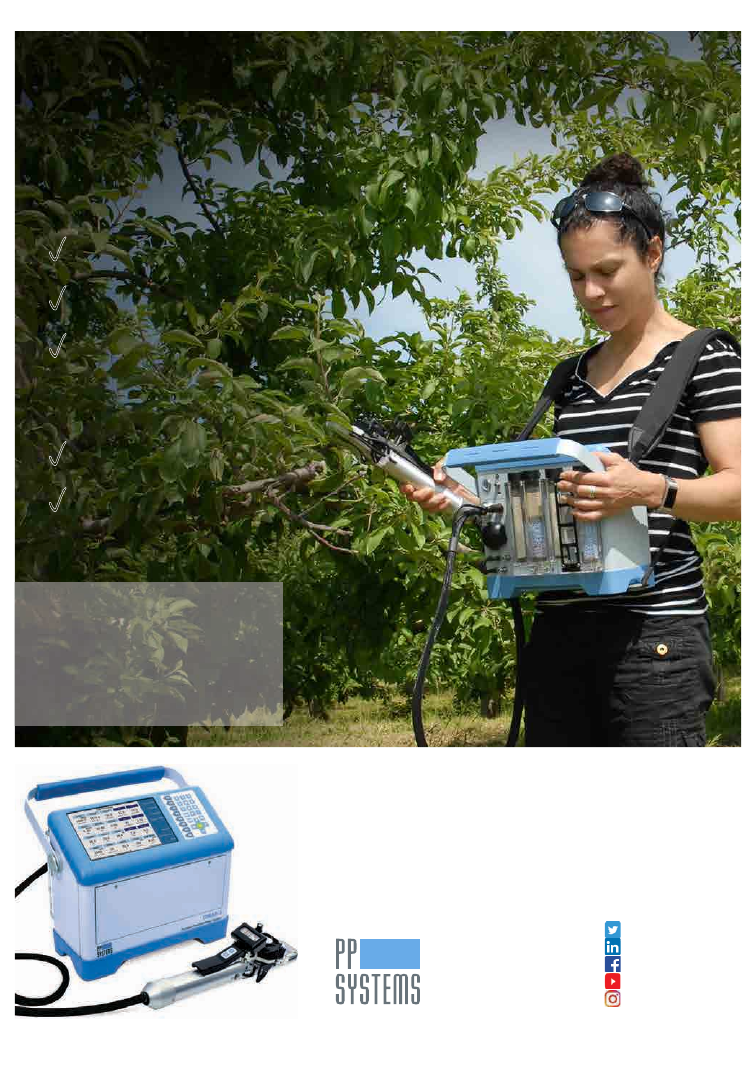
PSB 67(3) 2021
173
110 Haverhill Road, Suite 301
|
Amesbury, MA 01913 U.S.A.
|
+1 978.834.0505
|
sales@ppsystems.com
|
ppsystems.com
Elevate your research with the fastest,
most accurate portable leaf gas exchange
system available.
Measurements in seconds
Lightweight & compact
Simultaneous photosynthesis
& chlorophyll fluorescence
measurement
Ultrafast A/C
i
curves
Small system volume
advantage
•
Photosynthesis
•
Chlorophyll Fluorescence
•
Soil Respiration
•
Canopy Assimilation
•
Insect Respiration
@pp_systems
company/pp-systems
ppsystems.intl
ppsystemsinc
ppsystemsinc
CIRAS-3 Portable Photosynthesis System
Redefining the high-level research experience worldwide.

174
SPECIAL FEATURES
By David J. Asai
Senior Director, Science
Education
Howard Hughes Medical
Institute
[Editor’s Note: David Asai spoke at Botany 2021 for the
Belonging in Botany Lecture, Perspectives on DEI.]
The children’s story The Little Red Hen
(Dodge, 1874) is a metaphor for inertia. In
her efforts to be a change agent, the Little
Red Hen collided with the barriers protecting
the barnyard’s center of power. In this essay,
I present some thoughts on race, culture
change, and responsibility, and conclude with
my version of the tale of the Little Red Hen.
“RACE MATTERS”
(WEST, 1993)
Race matters to all of us, regardless of our
skin color or whether we are a victim of overt
discrimination. Race and racism are deeply
rooted in our national identity. Racism is not
a problem only for persons of color; it is an
American problem.
The Little Red Hen
and Culture Change
From our nation’s beginning, the racialization
of people has been used by the white center
of power to define who belongs and who does
not—who may immigrate, become a citizen,
vote, own property, and whom a person may
marry (Lepore, 2018). The term “white center
of power” is not about the skin color of those
who are in power or those who are on the
outside looking in. Instead, the “white center
of power” refers to a social structure created
by and for persons—almost all male—who
descended from white northern European
immigrants. Their perspectives became the
norms of our society, our economy, our
educational system, and our science.
SCIENCE IS COMPLICIT
The racialization of people and how it
has become weaponized is inextricably
rooted in science. The leading scientists of
their time wrongly claimed that there are
genetically distinct human races that evolved
independently (see, e.g., Gould, 1981). This
idea, in turn, allowed for the racialized
ranking of humans in terms of intelligence,
industriousness, ingenuity, sexuality, and
criminal behavior. The imprimatur of science
was the authoritative cover for colonization,
enslavement, and sterilization. The cells of
Henrietta Lacks, the men of Tuskegee, the

PSB 67(3) 2021
175
DNA of the Havasupai, the telescopes atop
Mauna Kea…. these are all reminders that
science is complicit in perpetuating and
reinforcing racism. Science helped create the
present culture of racialization and exclusion,
and so science has the responsibility of
replacing the old culture with a new one that
is centered on equity and inclusion.
TALK IS CHEAP
A characteristic of a white-centered system
is that it is unprepared and unwilling to
deeply examine race and racism. In the last
few years, and especially after the video-
recorded murder of George Floyd in May of
2020, America has, once again, dipped its toe
into the ocean of systemic racism. We have
marched in the streets, planted yard signs,
and toppled statues. Academic buildings
have been renamed, and carefully worded
statements claiming allyship with Black Lives
Matter have been published. But these are
the easy things, the superficial things. Much
harder is to change our culture—to walk our
talk.
Even as we boldly declare that now is the
time for a racial reckoning, too many liberals
and defenders of free speech are afraid to
even whisper the words “critical race theory,”
which recognizes that racism is systemic
and embedded in our policies and rules, our
practices and behaviors (see, e.g., George,
2021). The normalization of the white center
of power results in policies and rules that
naturally exclude Black and Brown people. As
Ezra Klein paraphrased Ibram Kendi (Klein,
2021), “Racists don’t make racist policies.
Racist policies make racists.”
When we use “scientific rigor” as the rationale
for our lack of diversity… when, in our
teaching and textbooks, we tell only the stories
of the white “founding fathers” of science…
when, in our recruiting of students and hiring
of faculty, we rely on a person’s pedigree as
a proxy for worthiness… when we focus on
individual prizes instead of encouraging
interdisciplinary collaboration… when we
do these and other things, we perpetuate the
white center of power.
PEERS
In science, we often refer to a person of color as
a “URM.” But that’s not right (e.g., Bensimon,
2016; Williams, 2021). The “M” word has two
definitions, neither of them appropriate. One,
“minority” is numerical. But persons of color
are not the numerical minority; in fact, 85%
of the world’s population are persons of non-
European ethnicities. The second definition of
“minority” is a pejorative—defining persons
as lesser, diminished, and subordinate.
The “UR” part of “URM” stands for
underrepresented, but underrepresentation is
the symptom and not the cause. The cause is
that the culture of science has systematically
excluded persons of color. Instead of “URM,”
I use “PEER,” which stands for Persons
Excluded from science because of their
Ethnicity or Race (Asai, 2020). PEERs in
science include Blacks/African Americans,
Latinx/Hispanic, and persons belonging to
populations indigenous to the United States
and its territories.
The system fails to keep PEERs in STEM
even though PEERs are well represented at
the start of the academic pathway. Today,

PSB 67 (3) 2021
176
PEERs are 32% of the U.S. population, 37%
of undergraduates, 21% of STEM bachelor’s
degrees, 12% of STEM PhDs, and 6% of
tenured faculty in STEM (NCSES, 2021).
The disproportionate shedding of PEERs
from STEM is not due to their lack of interest.
In fact, PEERs are over-represented among
students entering college intending to study
STEM. Nor is the disproportionate loss of
PEERs due simply to their lack of preparation.
In studies that control for important factors—
including high school math, family interest in
higher education, and family income—PEERs
leave STEM at much greater rates than non-
PEERs (Riegle-Crumb, 2019).
Among students entering college, the interest
in studying STEM is the same for PEERs and
non-PEERs. But the persistence in STEM by
each group is vastly different. PEERs intending
to major in STEM earn the bachelor’s degree
at only half the rate of non-PEERs, and earn
the PhD at only one-fourth the rate of non-
PEERs. More alarming is the fact that these
disparities in persistence have not changed in
at least three decades (Asai, 2020).
“FIX THE PEER” IS NOT
SUFFICIENT
In those three decades, gazillions of dollars
have been spent on a myriad of programs
aimed at increasing racial and ethnic diversity
in science. These interventions include, for
example, summer bridge programs, programs
to help students transition from community
college to the baccalaureate, remedial courses
and special advising, summer research
experiences, “minority” supplements to
federal research grants, and funds for “cluster
hiring.” Although these programs can benefit
the participants, they are not sufficient to
create systemic and sustained change.
These interventions are examples of a “fix the
PEER” (or “blame the victim”) mindset. The
“fix the PEER” mindset has these hallmarks:
• PEERs are treated as a commodity. The
system rewards us for collecting PEERs—
having more PEERs helps us win train-
ing grants and looks good when we are
undergoing departmental or university
review and accreditation. Too often,
PEERs are invisible except when it’s time
to illustrate brochures and websites.
• Interventions are aimed at helping the
PEER fit in… to assimilate into a scien-
tific culture that is not of their making.
As a result, PEERs and people from other
underrepresented groups are unable to be
their authentic selves when studying and
working in our institutions.
• And PEERs are often expected to bear
the burden of change. There are some
who claim that when Black and Brown
students dress nicely, show up to class on
time, sit in the front row, and ask ques-
tions, then institutional racism disap-
pears. And then there’s the “diversity tax,”
in which a student or faculty member
from an underrepresented group is asked
to serve on every committee—admis-
sions, recruiting, advising, “DEI”—be-
cause we depend on them to do our work
of advancing diversity.

PSB 67(3) 2021
177
CHANGING OUR CUTURE
Instead of fixing the PEERs, we must change
the culture of science and science education.
Culture is not ephemeral—it is structural and
it is manifested by behaviors (West, 1993).
In higher education and science, structures
and behaviors include how we select persons
who may enter science, the curriculum, the
policies and procedures that signal whether a
person belongs in science, and the system that
rewards certain behaviors.
Changing the culture means recognizing
PEERs as peers, rather than as a commodity.
Changing the culture means ensuring that
our structures—our policies, procedures,
curriculum, system of rewards—genuinely
reflect the values and perspectives of all the
participants, rather than expecting PEERs to
assimilate. And changing the culture means
that we who are currently in charge of the
system have the responsibility to change the
system, rather than placing the burden on
PEERs.
As we strive to change the culture, here are
three questions that can guide our work:
1. Who gets in and why? If we are
still relying on standardized tests like
the SAT and GRE, let us ask our-
selves why. These tests do not ac-
curately predict success in college
or graduate school (e.g., Hall et al.,
2017), but they correlate well with
family income and zip code (https://
reports.collegeboard.org/pdf/total-
group-2016.pdf). Success in the pro-
gram is a function of what happens
during the program rather than what
the student scored on a standardized
test before they entered the program.
In recruiting and promotions, let us
not rely too heavily on academic pedi-
gree and “the old boys network.” Before
we begin searching for more persons
of color, we—the search committee
and the hiring department—must first
be able to clearly articulate why diver-
sity is important to our department,
rather than depend on the candidates
to explain to us the value of diversity
(see Sensoy and DiAngelo, 2017).
2. How do we decide who is wor-
thy of staying? Let us first provide
all faculty opportunities and incen-
tives to learn inclusive pedagogical
and mentoring skills. Then let us cre-
ate reliable and fair methods to assess
the effectiveness and inclusivity of our
teaching and mentoring. And finally,
let us include those assessments in our
rewards system, including promotion
and tenure.
3. What do we celebrate? In our
teaching, let us tell the stories of cur-
rent, living scientists from all back-
grounds, instead of only teaching the
discoveries of the “white founding
fathers.” And in our newsletters, web-
sites, and awards, let us recognize ac-
complishments of all types, not only
for individual achievements but also
for effective collaborations and effec-
tive cross-disciplinary work.
TIME
You don’t need my sermon to know what to
do. As a community, we have plenty of good
ideas, and we have many persons willing
to be change agents who are committed to
implement those ideas. Yet, we remain stuck.

PSB 67 (3) 2021
178
Let’s consider what typically happens. We
go to a meeting or read an essay. We get
fired up. We see all of the ways that we can
get better. We create lists of things to do, and
we debate their relative priorities. We might
even write a “white paper” or publish a list
of recommendations. And then we return to
the realities of our jobs, and we are almost
instantly consumed and subsumed by the
daily hard work of everything else we do. We
might want change, but we just don’t have
the time to do it. The real barrier to genuine
culture change is the lack of time.
We need time to reflect on how the structures
of science and science education uphold the
white center of power, and how we erect
barriers to preserve the center. We need time
to learn the skills of inclusion and practice the
skills of listening, so that we can talk candidly
about race, racism, and cultural privilege. And
we need time to hold ourselves accountable by
taking action, and then assess the effectiveness
of our actions.
To make time for reflection, learning, and
accountability means we also have to not do
some things. And this brings me to my “what
if” dreaming.
What if our department or school were to
suspend all other activities for a few weeks in
the autumn so that faculty, staff, and students
could engage in facilitated reflection and
learning, then collectively decide on one or two
things we want to accomplish in the coming
months. We should set realistic goals that will
lead to bigger outcomes. For example, we might
choose to begin the process by examining the
introductory science curriculum, or dig into
the criteria for faculty promotion and tenure.
In the spring, we would again suspend all
other activities and come together to reflect
on the past year, to assess our progress, and
to hold ourselves accountable. And we would
make this a recurring habit, regularly stepping
away from everything else to focus on equity
and inclusion.
Of course, there are millions of reasons why we
can’t try my idea. But if equity and inclusion
are really institutional values, if we truly want
to become allies to PEERs, if we really aspire
to be anti-racist, then we must find a way to
learn how to walk our talk, to truly change
our culture. Culture change does not happen
because of fancy rhetoric or strategic plans;
it will happen only when we find the time to
change our structures and behaviors. The goal
of diversity through equity is far too important
for us to give up just because it is hard, or
because it is new, or because it makes us
uncomfortable, or because we don’t have time.
Let us all commit to culture change through
reflection, learning, and accountability. Now
is the time to begin.
THE LITTLE RED HEN
REVISITED
One spring day, the Little Red Hen had an
idea. She thought that it would be a great
improvement to the barnyard if they could add
some diversity to their menu. Instead of the
daily pecking at dried corn and munching of
hay, the citizens of the barnyard would benefit
from having some freshly baked bread in their
diet. “What an improvement that would be!”
thought the Little Red Hen. “Bread will enable
some barnyard citizens who cannot easily
digest hay or dried corn to obtain important
nourishment. It will make us all stronger.”
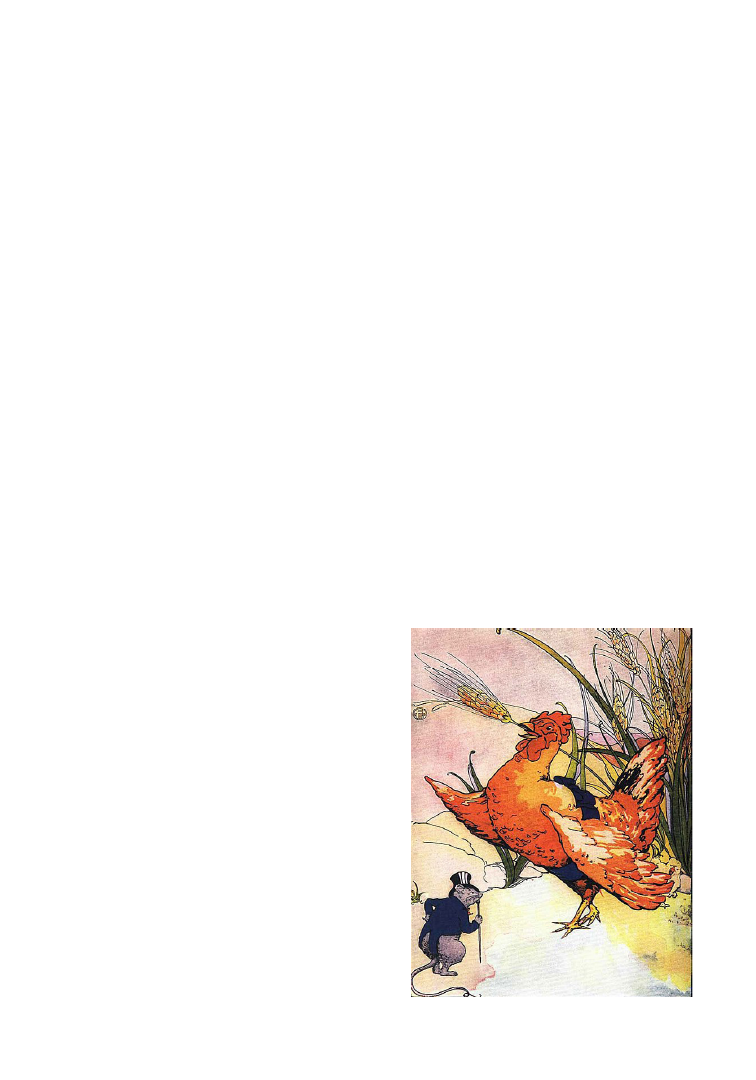
PSB 67(3) 2021
179
So the Little Red Hen asked the citizens of the
barnyard to help her. “Who will help me till
the soil and plant the seed? Who will help me
weed the field and water the soil? Who will
help me harvest the wheat and mill the grain?
And who will help me bake the bread?”
The Little Red Hen asked the barnyard dog
if he could help. “I really admire your spunk
and all, but the barnyard has survived just
fine without baked bread. If it’s not broken,
don’t fix it, I always say. And this doesn’t affect
me anyway because the farmer feeds me dog
food,” he replied.
Next was the barnyard cow, the most senior
citizen of the barnyard, who responded, “I
don’t want to be part of this conversation
because it sounds like you’re being critical
of our current diet, and that makes me
uncomfortable and feel guilty. I don’t want to
be blamed for the fact that we didn’t try this
idea many years ago.”
The barnyard pig was next. “Now then,” he
said. “Miss Hen, you go right ahead and try
out your nice little idea. Of course, I’m busy
with all of my enormous responsibilities here
so I don’t have the time to help—but I know
you’ll do a good job and I’ll be watchin’!”
And finally the Billy Goat, who was the boss
of the barnyard. “To show you how much
I support your work, I’ll arrange for you to
be able to apply for a grant so that you can
purchase some of the farming equipment
you’re going to need.”
Because no one was able to help, the Little
Red Hen went ahead by herself. She learned
how to grow the wheat, mill the grain, and
bake the bread. Of course, along the way, she
made some mistakes but learned from them
and, in the end, just as the Little Red Hen had
predicted, the bread was good and all of the
barnyard enjoyed the new item in their diet.
And so it came to pass that every year the Little
Red Hen went about her tasks—she tilled the
soil and planted the seeds, she weeded the field
and watered the soil, she harvested the wheat
and milled the grain, she baked the bread and
everyone enjoyed eating the bread.
Then one day it happened: the Little Red Hen
decided to retire. And because the dog and
the cow and the pig and the goat and all the
other citizens of the barnyard had not learned
the skills of farming and milling and baking,
because none of them had had the courage
to change, because none of them had had the
time to try new ideas, because none of them
had been willing to share in the responsibility,
the barnyard never again had freshly baked
bread.
THE END.
Source: Wikimedia.org

PSB 67(3) 2021
180
REFERENCES
Asai, D. J. 2020. Race matters. Cell 181: 754-757.
Bensimon, E.M. 2016. The misbegotten URM
as a data point. Center for Urban Education,
University of Southern California. Website:
https://cue.usc.edu/files/2016/01/Bensimon_
The-Misbegotten-URM-as-a-Data-Point.pdf
Dodge, M. M. 1874. The Little Red Hen. St.
Nicholas vol. 1, part 2: 680-681. Scribner.
George, J. 2021. A lesson on Critical Race
Theory. Human Rights Magazine vol. 46,
no. 2. American Bar Association. Website:
https://www.americanbar.org/groups/crsj/
publications/human_rights_magazine_home/
civil-rights-reimagining-policing/a-lesson-
on-critical-race-theory/
Gould, S. J. 1981. The Mismeasure of Man.
W.W. Norton, New York.
Hall, J. D., A. B. O’Connell, and J. G. Cook.
2017. Predictors of student productivity in
biomedical graduate school applications.
PLoS One 12: e0169121.
Klein, E. 2021. Transcript. Ezra Klein inter-
views Ibram Kendi. New York Times, July
16, 2021. Website: https://www.nytimes.
com/2021/07/16/podcasts/transcript-ezra-
klein-interviews-ibram-x-kendi.html.
Lepore, J. 2018. These Truths: A History of
the United States. W.W. Norton, New York.
National Center for Science and Engineering
Statistics (NCSES). 2021. Women, Minori-
ties, and Persons with Disabilities in Science
and Engineering. National Science Foun-
dation. Website: https://ncses.nsf.gov/pubs/
nsf21321/data-tables
Riegle-Crumb, C., B. King, and Y. Irizarry.
2019. Does STEM stand out? Examining
racial/ethnic gaps in persistence across post-
secondary fields. Educational Researcher 48:
133-144.
Sensoy, Ö. and R. DiAngelo. 2017. “We are
all for diversity, but…”: How faculty hiring
committees reproduce whiteness and prac-
tical suggestions for how they can change.
Harvard Educational Review 87: 557-580.
West, C. 1963. Race Matters. Beacon Press,
Boston.
Williams, T. L. 2020. ‘Underrepresented Mi-
nority’ Considered Harmful, Racist Language.
Communications of the ACM. Website: https://
cacm.acm.org/blogs/blog-cacm/245710-un-
derrepresented-minority-considered-harm-
ful-racist-language/fulltext

PSB 67(3) 2021
181
A colleague of mine just sent me the link to
this article from Science, by Natalia Aristizábal
(June 3, 2021): “I bombed the GRE—but I’m
thriving as a Ph.D. student” (https://www.
sciencemag.org/careers/2021/06/i-bombed-
gre-i-m-thriving-phd-student).
I have been arguing for years that the GRE
is discriminatory, and my colleague, who is
the chair of our department, heard my pleas
to eliminate the GRE requirement from
our programs. He organized a committee
to investigate the issue and, unfortunately,
they decided to keep the GRE requirement
with some assurance that it would not be
the defining criteria for admission to our
programs. I have my doubts.
I would like to share my story of how I
circumvented the GRE requirement while
getting into a Ph.D. program at a prestigious
university in upstate NY in 1971. I am
dyslexic and consequently I read very slowly.
I have never done well on standardized tests
because I cannot finish these tests in the
Opinion: It’s Time to Eliminate
Standardized Tests for
Graduate School Admissions
time allotted. I always score way below my
intellectual level. I applied to a Ph.D. program
without submitting my scores—stating that
I had not yet taken the exam. I was accepted
provisionally because I had transferred all
excellent grades from a master’s program at
another school. The conditions were that I
would take the GRE and submit the scores at
a later time. I had no intention of doing that
and each time the advisor of the program
asked for my GRE scores I told him I was
planning to take them. This went on for the
four years I was in my Ph.D. program. Finally,
they stopped asking, especially because I had
excellent grades in the courses I was required to
take and I had passed my oral comprehensive
exams for the Ph.D. I submitted my thesis,
defended by oral presentation, and applied for
and was accepted to a research fellowship at
an esteemed University in the UK. Ironically,
that University did not recognize American
Ph.D.s—they only honored degrees from two
other UK universities—and when I arrived
they awarded me a Master’s degree based on
my Ph.D., so that I could do research and
teach in their programs.
When I returned to the states and obtained
a teaching job at a small liberal arts college
in upstate New York, I always gave students
as much time as required to complete their
exams. If we had to vacate the classroom
before they were done, I would take the
students to my office or my lab to finish their
By Professor Lee B. Kass
Cornell University, Plant
Breeding & Genetics Section
lbk7@cornell.edu;
and
Division of Plant & Soil
Sciences, West Virginia
University
lee.kass@mail.wvu.edu
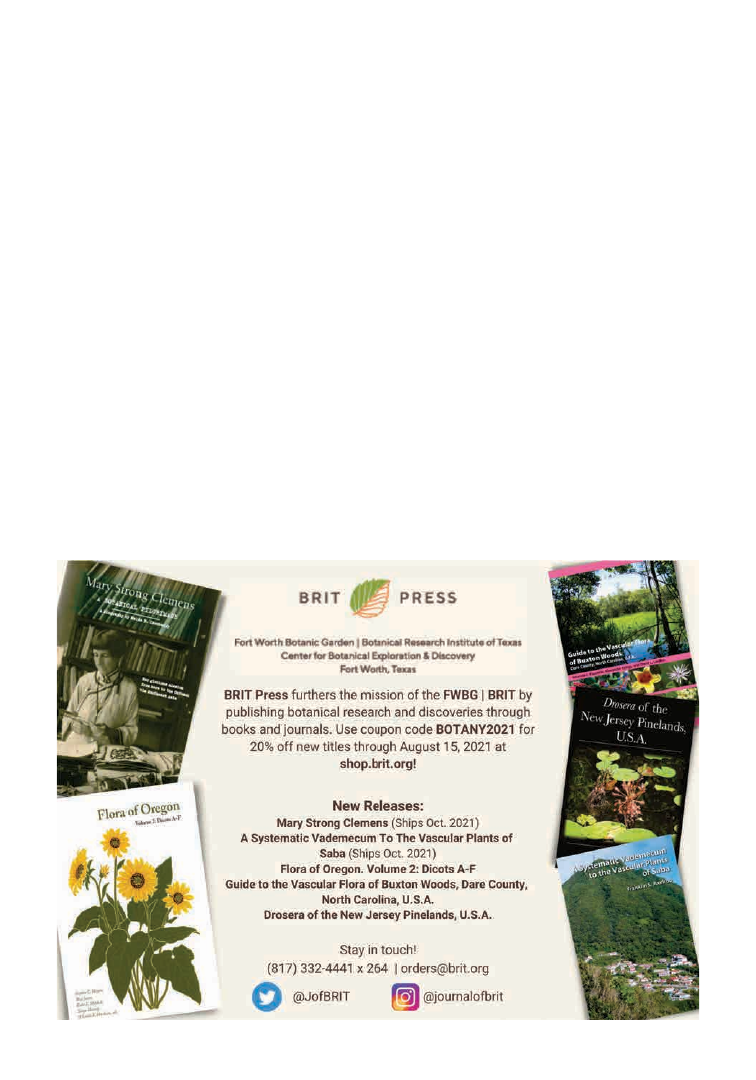
PSB 67(3) 2021
182
tests. I never wanted my students to be placed
in the situation where they did poorly on a
test because they did not have enough time to
finish.
The statement by Natalia Aristizábal’s
professor rang so true for me: “…the GRE is a
better measure of race, ethnicity, and income
than academic ability.” I am the first person
in my family to go on for graduate work. My
parents were first-generation Americans and
only two other members of their immediate
family had gone to college. Neither of my
parents completed high school. I was blessed
to attend an undergraduate college in New
York City that had no tuition in the mid-
1960s but did require excellent high school
grades and the SAT for entry. And at that
time, females needed higher high school
grades than males to be accepted. Of course I
was admitted provisionally at first because my
grades on the SAT were abominable. The cost
of taking these tests placed a financial burden
on me and my family. I also worked full time
while an undergraduate.
Many students who entered Ph.D. programs
were admitted based on excellent GRE scores,
but often these same students dropped out
within the first few years. Possibly because
they knew how to take standardized tests
but had no understanding of how research
requires working hard for long hours, and
sometimes having to restart a project because
a hypothesis did not provide expected results.
I encourage all colleges and universities
to reconsider their requirements for these
discriminator exams and let students prove
themselves by their productivity in courses
and research.

PSB 67 (3) 2021
183
FROM THE
PSB
ARCHIVES
60 years ago
“The interaction between botany and politics is of course exemplified by the well-known support by
the Communist party of [Soviet biologist Trofim] Lysenko’s doctrines. This has severely limited the
plant and animal breeding programs and thus set Soviet agriculture even more behind that of the West
than it was before the revolution. Also scientifically, by stopping the development of genetics, it has
excluded the Soviets from the immense modern development in this field, which has done so much to
enrich other areas of biology and especially biochemistry. As a practical matter, with the huge plantings
of corn they now have in the Ukraine and even north above Moscow, it has denied them the increased
yields due to hybrid corn, estimated to average 30 per cent. It is rumored that the Agricultural Acad-
emy, until recently presided over by Lysenko, is to be abolished, on account of its not having served the
Union effectively. This (if true) might well be only a device for reducing Lysenko’s power.”
--Remarks of retiring BSA President Kenneth V. Thimann: General and Botanical Observations on the
USSR at and before the International Biochemical Congress in August, 1961. PSB 7(3): 1-6.
50 years ago
“He made a good impression, so I invited him to join my party for a week’s exploration of Mt. St. Hel-
ens, a 9,677-foot peak in the Cascade Mountains. The party also included my students R. T. Davison
and C. S. English, Jr. My car also held food, tent, and camping equipment.
Today there is a paved road leaving the Pacific Highway 99 at Castle Rock, and following up the Toutle
River valley to Spirit Lake. We drove in on August 1, 1925, and successfully made the 40-mile trip, but
the road required a skilled driver. The gravel stretches in the valley were not bad, but midway the road
for several miles climbed up one side, then down the other side of a mountain as a plank road. The
planks were laid lengthwise, a single 12-inch, 12-foot plank for each wheel, nailed to cross pieces end
and middle. The cross pieces rested on the forest floor and once had been firm. We found many of the
nails loose or lost, and some tread planks warped up at the end. It was hard driving.
Spirit Lake is a clear, beautiful mountain lake at the north base of Mt. St. Helens. The mountain it-
self is a perfect volcanic cone, inactive at present, but built up by fairly recent eruptions. It is unique
among the Washington volcanoes in having the surface formed by a layer of pumice 20-40 feet
thick. As a result, all drainage sinks through the pumice and flows underground on older solid la-
vas. Hence, the tree line is very low, at about 2,500 feet, and the upper and middle slopes are mostly
bare. The pumice is of rounded balls of all sizes, up to a foot in diameter. Climbing the peak is a
very arduous task, as on a sand hill, one loses half of each stride. Then, one must be alert, keeping
watch upwards, to be ready to dodge every pumice boulder that comes bounding down the slope.”
--Harold St. John on G. Neville Jones. PSB 17(3): 23-24
40 years ago
“Who Will Be Teaching Botany in the 1980’s?
The majority of teachers will be the people in the associate and early full professorial ranks. As tenure
track positions will not be available, the above-categorized people will have to become, as in the early
days of science, true botanists. That is, persons versed in all the basic units of this discipline. In order
to achieve this level of competency, many professors will have to undergo extensive retraining efforts
during the decade to come.
If your institution is fortunate and the enrollment is stable or continuing to grow, the introductory
courses will be taught by temporary professors who will be hired as lecturers or visiting professors with
year-to-year contracts. The danger of this system is that it leads to disillusioned teachers of little help
to building the department.
In specific and unusual situations, the use of adhoc teachers will be used. These people will generally
have other full-time employment, but will be hired on a per-course basis to fill in the area of need.”
--Saigo, Roy. Who Will Be Teaching Botany in the 1980’s? - Survival Of Viable Botany Programs in the
Face of Declining Enrollments. PSB 27(6): 42-43.
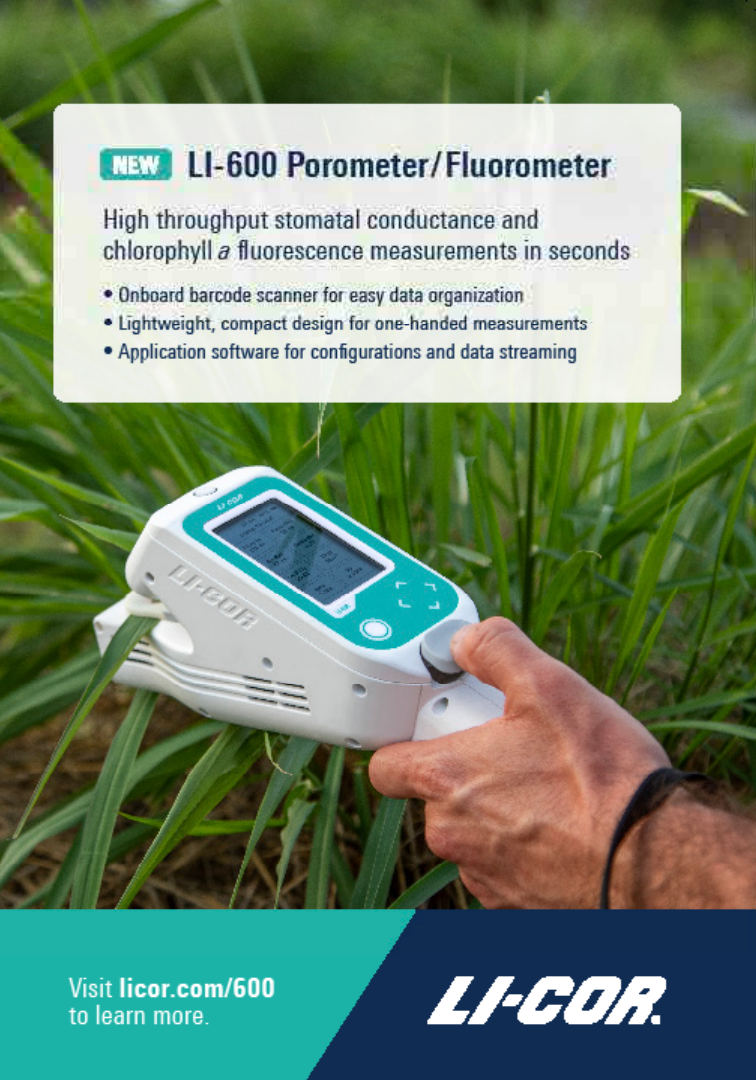
PSB 67(3) 2021
184

185
SCIENCE EDUCATION
By Dr. Catrina Adams,
Education Director
Jennifer Hartley,
Education Programs
Supervisor
The Botanical Society of America is pleased
to announce the addition of Jennifer Boeyink
Hartley to the BSA Education team! Jennifer
serves in the role of Education Programs
Supervisor and reports to Catrina Adams,
Director of Education.
A graduate of Missouri State University,
Jennifer holds a comprehensive B.S. in Biology
and Secondary Education. Growing up in the
suburbs of St. Louis, Missouri, Jennifer spent
as much time as possible in the wooded gullies
around her subdivision. Jennifer taught high
school biology and earth science in Illinois
for several years before taking a sabbatical
when her children were born. While out of
the classroom, Jennifer taught for an in-home
tutoring agency and designed websites for
local nonprofits. In 2009 she took a part-time
position with the Missouri Botanical Garden
(MBG)’s Butterfly House while reactivating
her teaching certification, with plans to
return to the classroom. However, plans
changed when Jennifer was offered a full-time
Welcome to Jennifer A. B. Hartley!
BSA’s new Education Programs Supervisor
instructor position with MBG’s Education
division, and by 2012 she was promoted
to manager of the School Programs team.
Jennifer’s team managed the Garden’s field trip
programming, school-focused initiatives, and
teacher professional development. “I am so
proud of our work,” Jennifer says. “Watching
students and teachers really appreciate plants
for the first time is incredible!”
The classroom lured her back in 2019.
Jennifer left the Garden to help open Kairos
Academies, an experimental new charter
middle school in St. Louis where she served
as the Head of Experiential Learning. She
hadn’t planned to step away again but couldn’t
pass up the opportunity to work with BSA and
PlantingScience. “I had spent years telling
teachers, ‘Have you heard of PlantingScience?
You need to check it out!’ Science teachers
hear so much advice from other educators, but
they want and need to hear more from career
scientists. Programs like PlantingScience give
classrooms access to real-world research they
would have a hard time accessing otherwise.”
Jennifer will be spending the majority of
her time managing the PlantingScience
community and helping with the professional
development and research activities of the
NSF PlantingScience F2 Grant (NSF DRK-12
#2010556). Her experience managing school
programs at the Botanical Garden, designing
curricula, leading professional development,
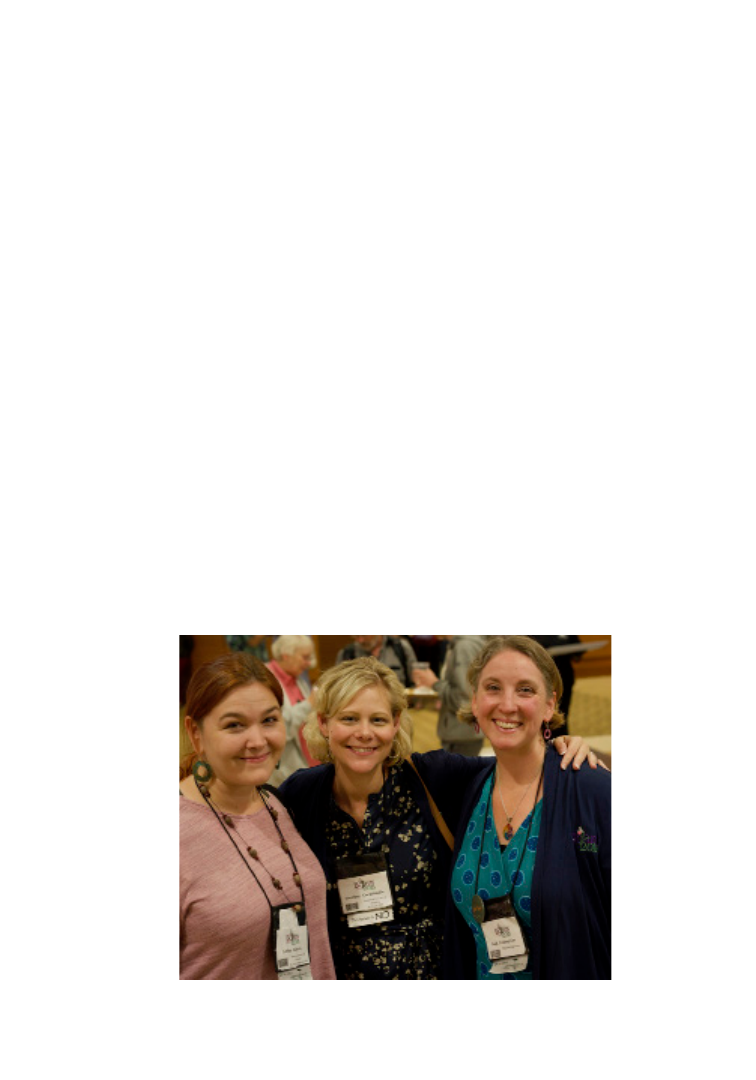
PSB 67(3) 2021
186
and her experiences working in diverse
secondary school classrooms will bring new
ideas for identifying and helping to address
teacher and school administrator challenges
with PlantingScience to make the program
more accessible and impactful.
FAREWELL TO
JODI CREASAP GEE
Jodi Creasap Gee leaves BSA after 6 years
of foundational work building and improving
the PlantingScience 2.0 platform and commu-
nity as part of the NSF Digging Deeper Grant.
We would like to express appreciation for
the work Dr. Jodi Creasap Gee has done in
her role as Education Technology Manager
on behalf of the BSA and PlantingScience
communities. Jodi was hired in 2015 to work
on the BSA’s PlantingScience: Digging Deeper
education research grant (DIG) (NSF DRK-
12 #1502892). She has spent the past 6 years
developing and improving the PlantingScience
website and program, along with helping out
with other Education Technology needs of the
society.
Under Jodi’s management, PlantingScience
has made many necessary updates and
improvements to the website; doubled our
capacity; improved our efficiency at managing
large numbers of student teams, and helped
hundreds of teachers, mentors, and students
work better together in a thriving, active,
online mentoring community. During Jodi’s
time with the BSA, PlantingScience has
worked with almost 300 teachers, over 750
scientist mentors and over 9300 students.
Jodi’s creative troubleshooting and responsive
help to the PlantingScience community have
established a great deal of trust that outcomes
for students will be met by participating, and
that they will get the help they need to have
a good experience. Participating teachers are
so enthusiastic about the program that they
regularly recruit new teachers to participate
The BSA appreciates the work of Jodi Creasap-Gee (right), seen here with Catrina Adams and
BSA Executive Director Heather Cacanindin.

PSB 67 (3) 2021
187
and share information about the program at
local events and conferences. To use just one
quote from many we’ve received from teachers
over the years:
The support I have received so far has
been wonderful, so I’m mainly looking for
continuation of the current support I have
been getting that is responsive to my questions,
works with me to troubleshoot, and is helping
my students get the most possible out of the
experience. - PlantingScience Teacher
Jodi’s background and connections
in plant pathology have strengthened
existing partnerships with the American
Society of Agronomy and the American
Phytopathological Society, including
coordinated development of 3 new
PlantingScience modules by these societies
that have been very popular with teachers:
“Agronomy Feeds the World”, “Plants Get
Sick, Too!”, and “Treemendous Trees.”
For those not involved with PlantingScience,
many have worked with Jodi to troubleshoot
talks and recordings at virtual meetings over
the last few years, have interacted with her
as part of the BSA’s Technology Committee
or Education Committee, or met her during
in-person annual meetings helping with
registration, hosting the PlantingScience
receptions, and recruiting new mentors and
Master Plant Science team members. We
wish her well in her future endeavors, and
appreciate the contributions she’s made to
botany education and outreach during her
time with BSA.
UPDATE ON
PLANTINGSCIENCE AND
MASTER PLANT
SCIENCE TEAM
Teachers are excited to bring PlantingScience
(back) to their classrooms this Fall, and the 13
early-career scientists chosen for this year’s
BSA-sponsored Master Plant Science Team
(MPST) are getting student teams off to a
good start.
The Fall 2021 session of PlantingScience is
now underway, with students coming online
starting in mid-September. Teachers seem
to be particularly eager to get started, and
many have commented on how pleased
they are to have students in their classrooms
again! Twenty-nine teachers have signed
on this season, of which 14 are returning
from previous sessions and 15 are trying out
the program for the first time. Their classes
include a mix of middle- and high-school
students, and even a few undergraduates.
The MPST for this session comprises 31
scientists, of which 13 are new to the program
this year. MPST members are sponsored
by BSA, the American Society of Plant
Biologists, the American Phytopathological
Society, the American Society of Agronomy,
the Canadian Botanical Association, and the
Ecological Society of America. This year’s 13
BSA-sponsored MPST members are: Claudia
Anca Barcu, Israel Borokini, Yanni Chen,
Dani Davis, Kelsey Fisher, Ana Flores,
Sara Johnson, Brooke Kern, Josh Kraft,
Guadalupe Maldonado, Jill Marzolino, Shan
Wong, and Renate Wuersig. Congratulations
on your sponsorship and welcome to the team!

PSB 67 (3) 2021
188
Master Plant Science Team members are
graduate students and postdocs who learn
more about science outreach and online
mentoring and participate behind the scenes
by serving as liaisons between PlantingScience
teachers and their scientist mentors, helping
teachers and new mentors navigate the
experience and helping to keep student team
conversations with their scientist mentors
going strong. Sponsoring societies provide
perks in exchange for service with the MPST.
More information on the MPST and how to
apply for next year’s cohort is available here:
https://plantingscience.org/mentorjoin/
mpstinfo
PLANTINGSCIENCE
MENTORS STILL NEEDED
FOR SPRING 2022 TEAMS
We are looking forward to a particularly active
and conversation-filled session as students
are eager to get back to active learning in
teams with their peers, getting to know their
scientist mentors and experiencing ownership
of developing their own plant investigations
around a big theme in biology. It’s such a rare
and vital chance for students to learn how
interesting plants can be, whether or not they
choose a career involving botany.
If you are interested in working with a student
team online to help them through their plant
science investigations, we’d love to have you
join our mentoring community. Mentoring
takes about an hour per team per week and
can be done from anywhere with an internet
connection. Learn more and register here:
https://plantingscience.org/mentorjoin/
mentorjoinmain
Many thanks to all who have agreed to mentor
teams so far this fall, the students and teachers
really appreciate your generosity to spend
time connecting with them and helping them
through the always challenging process of
designing and carrying out an investigation.
PLANTINGSCIENCE
INCORPORATED IN
SCIENCE OUTREACH
COURSE AT SYRACUSE
UNIVERSITY
Students enrolled in a science outreach
course at Syracuse University had a chance
to experience the PlantingScience platform
as a student and mentor this past spring,
and discussed the program as a model of
a successful outreach program. The course
was taught by Dr. Katie Becklin, who has
been mentoring with PlantingScience since
2008, including serving as a PlantingScience
MPST member and a PlantingScience Fellow
participating in the Digging Deeper research
project. Course goals were for students to be
able to: (1) describe science communication
and education concepts that inform
science outreach practices, (2) describe
how outreach can promote diversity and
inclusion in science, (3) compare and evaluate
strategies for outreach and community
engagement, (4) develop an evidence-based
science outreach plan, and (5) engage with
the public in a dialogue about science.
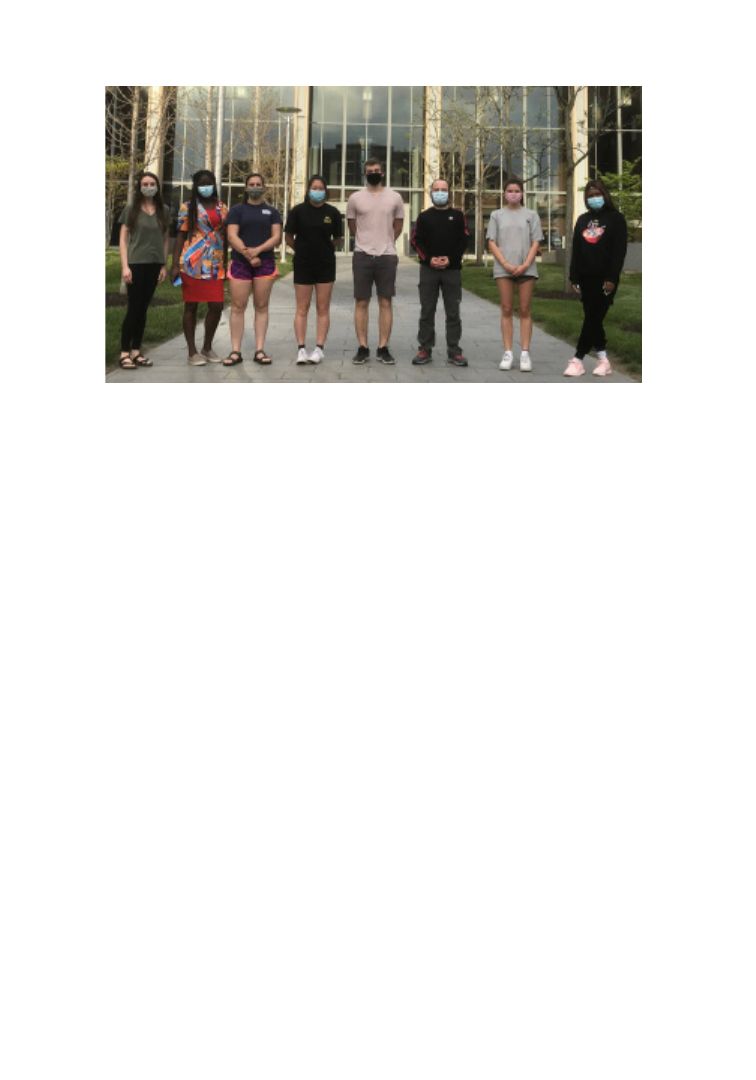
PSB 67 (3) 2021
189
Students in Syracuse University’s Science Outreach Course, Spring 2021
Undergraduates and graduate students
who participated during the course using
the “Wonder of Seeds” seed growth and
germination module described running into
issues shared by most student participants:
Most of us had not interacted with plants
beyond introductory courses.
Initially we had a difficult time designing the
experiment…
Conversations with mentors also revealed
concerns shared with younger participants,
such as:
It has been exactly a week since I started the
project and none of my seeds have germinated
yet!
When asked about what their experiences led
them to believe were the biggest benefits to
students, they shared:
One of the most significant benefits was the
opportunity to have an authentic science
experience.
Describing our own ideas as a team and then
receiving helpful feedback pushed us to think
deeper.
We learned more about our scientist mentor as
a person as well as what they do.
When asked what they experienced while
mentoring, they shared:
We think that the best part of being a mentor
on PlantingScience is witnessing the excitement
a team of students shows when asking original
questions and getting to answer them using
data they collected.
The best collaborations tend to benefit both
partners, and the experience of working with
Dr. Becklin and her Syracuse University course
taught us about some new tools that we are
planning to incorporate into PlantingScience
mentor training materials. For example, the
course began with an activity for scientists to
think about their science “impact identity,”
as outlined by Risien and Storksdieck (2018)
by following a series of prompts to consider
where their scholarship overlaps with societal
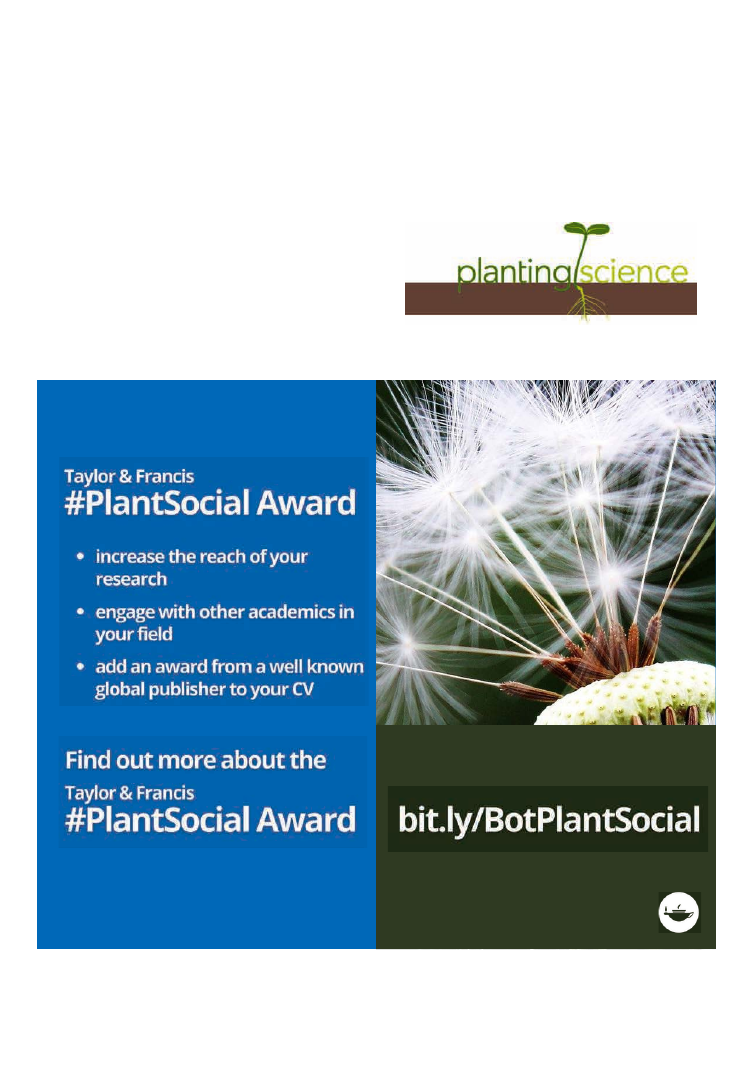
PSB 67 (3) 2021
190
needs, personal preferences, capabilities and
skills and one’s institutional context. We feel
like this is an excellent activity to include in
science mentoring workshops going forward
to set the stage and encourage scientists to
consider whether PlantingScience is a good fit
to meeting their outreach goals. Opportunities
to participate in a PlantingScience-sponsored
mentor training workshop incorporating this
new reflective activity will be coming soon.
REFERENCES
Risien, J. and M. Storksdieck. 2018. Unveiling
impact identities: a path for connecting sci-
ence and society. Integrative and Comparative
Biology 58: 58-66.
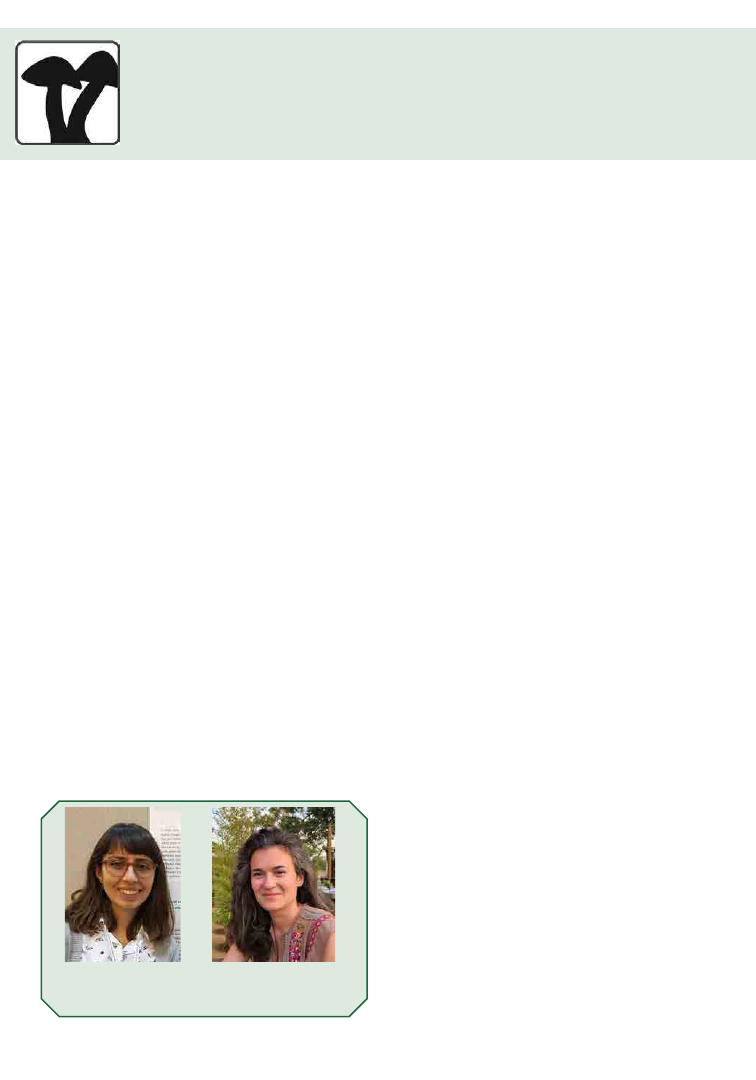
191
STUDENT SECTION
By Imeña Valdes and Ioana Anghel
BSA Student Representatives
We were so glad to see so many of you at
Botany 2021! Our second virtual conference
had an incredible number of students in
attendance with a total of 832 registered
undergrads and grads. That is almost double
the number of students at our last in-person
conference. Students made up 42% of the
total conference attendees. They brought a
lot of enthusiasm and energy, especially at the
student events.
We organized a variety of student events this
year. One of the highlights was the Careers
in Botany Luncheon, where more than 100
students registered to attend. With over 20
professionals sharing lessons on how to set
yourself up for success in the botanical job
market, students had plenty of small group
time to connect personally with our panelists.
(Read more about their experiences at this
networking event below!) Students also
received advice on improving their CVs
and resumes at the CV review sessions, met
other students at the two Student Socials, and
Botany 2021 Review
learned how to connect people with plants at
the SciComm Celebration. We hope you were
able to participate and enjoy these exclusive
student events!
This year, BSA offered registration awards to
25 students and 25 post-docs, and we hope
that has energized more students to participate
and be active in upcoming conferences. The
reduced virtual conference rate and the online
format made Botany accessible to even more
students. We hope that some of these virtual
conference benefits will be continued in the
future. We look forward to seeing many of you
in Alaska and hopefully some of you virtually
next year as well!
To support students throughout the year,
BSA has increased the research award for
undergraduate projects from $200 to $500
starting in Fall 2022. We hope this will support
more impactful projects and allow students
to expand their scope and data collection. In
addition, we launched a new committee to
support students and early career professionals
through the BSA Early Career Professional
Development Committee. This group will
focus on helping students and junior botanists
meet other professionals, find mentors, and
take advantage of various opportunities.
The committee's first project was a GRFP
workshop where mentors helped students
improve their application. Learn more about
this new committee at https://botany.org/
home/governance/early-career-committee.
html.

PSB 67(3) 2021
192
We are excited to engage students to be active
in the BSA community throughout the year!
Reach us by email or Twitter: Imeña
(imenavaldes2020@u.northwestern.edu, @
imenarv) and Ioana (studentrep1@botany.
org, @ioana_anghel).
ADVICE FROM THE
CAREERS IN
BOTANY LUNCHEON
We had an incredible panel of professionals
and a great group of students join us for our
luncheon, so we wanted to know what piece
of advice the professionals would give to all
students to help them succeed and to know
what the students learned. We can’t thank the
participants enough and hope to see some
new and familiar faces next year!
PROFESSIONALS
“
Taking a break between undergraduate
and graduate school to gain work or
research experience in the field you
think you're interested in can be a useful
strategy for maximizing your future
education/training/career!”
Dr. Carla Maldonado
Herbario Nacional de Bolivia, Instituto de
Ecología, Universidad Mayor de San Andrés
“Risking getting out of your comfort
zone is the key to getting ahead.”
Dr. Jessamine Finch
Native Plant Trust
“As an introvert, it was a huge breakthrough
for me when I realized that ‘networking’ can
be as simple as becoming friends with the
people you interact with at school and in
your research. People graduate, move, get
new jobs, and pretty soon you have a diverse
network of people who have pursued
different careers and live all over the world.”
Dr. Vera Velasco
University of Toronto
"You need a supportive personal (parents,
siblings, friends) community as much as
you need an excellent academic community
(supervisors, fellow grad students) to help
you succeed in graduate school.”

PSB 67(3) 2021
193
Jocelyn Pender
Atlantic Canada Conservation Data Centre
“Build a community around you!
Building community means joining
learning groups, communities of practice,
lab groups and attending events in your
field to connect with professionals and
fellow students. This is hard to do online
and through virtual events, but isn't
impossible! For me, my network has been
my greatest asset in my career. Further,
the communities I’m involved with have
provided support and wisdom (e.g.,
student councils, data science learning
groups, women in STEM leadership
groups). Additionally, I mentioned to all
the students I encountered that if they are
considering a career pivot, the data field
is an exciting place to be! The data field is
new, growing and requires very little for
entry, other than a STEM degree.”
“Start today! Start now!”
STUDENTS
Matthew Sheik
George Mason University
“The 2021 Careers in Botany Luncheon
allowed me to connect with Herbarium
curators in order to learn the skills
needed to successfully curate a collection.
These include the following: 1. ability to
secure funding, 2. capability of managing
people, 3. understanding best digitization
practices. I’ll be able to focus on the last
year of Graduate School making sure I
can practice and gain experience in those
three areas to become a more attractive
candidate to one day curate a collection.”
“When writing grants you wanna show
some preliminary data, show that you
have done some of the methods that
you are going to apply, but also try
something new, meld both old and new
knowledge together to achieve a goal.”
David Hainlen
North Dakota State University
“Network Network Network!!"
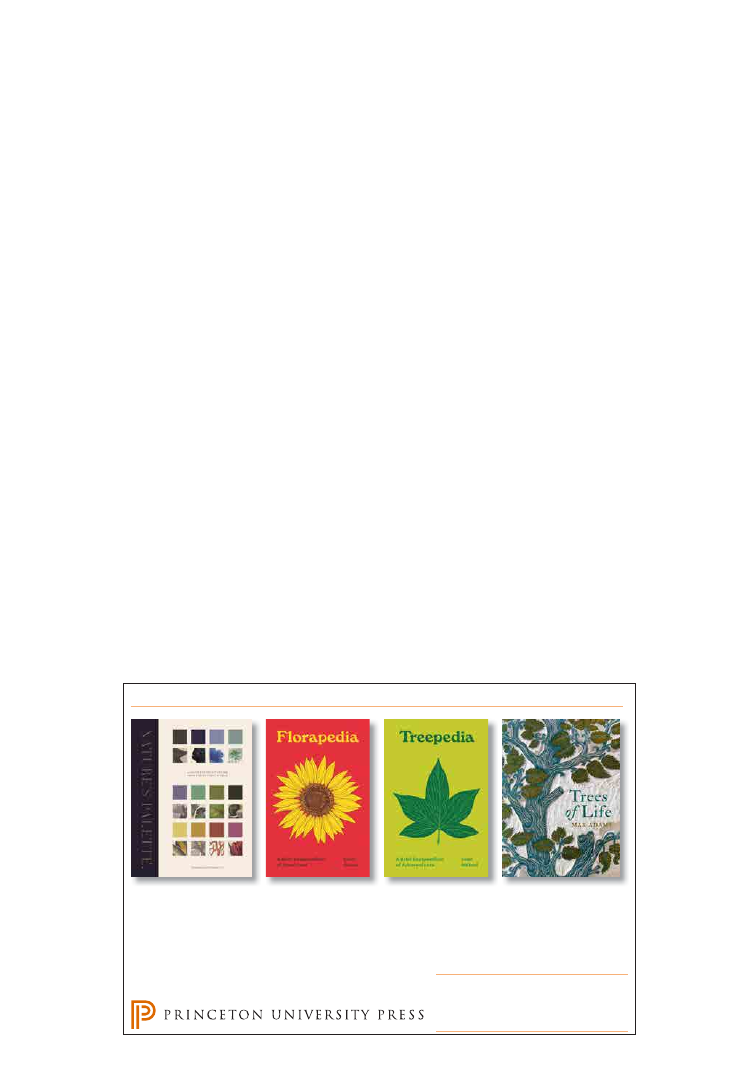
PSB 67(3) 2021
194
PAPERS TO READ FOR
FUTURE LEADERS
As we continue in our careers, we hope to
see the academic culture shift to be healthier
and more inclusive. Below are a few papers
we think you should read if you hope to lead.
We hope to continue to recommend “Papers
to Read for Future Leaders” to BSA Student
members—if you have papers you would like
us to include, please share it with us via this
google form: https://tinyurl.com/y5dp8r4m.
• Asai, D. 2020. Race Matters. Cell 181:
754-757.
• Brown, N. and J. Leigh. 2020. Ableism
in Academia: Theorising experiences of
disabilities and chronic illnesses in higher
education. London: UCL Press. https://
doi.org/10.14324/111.9781787354975.
• Caviglia-Harris, J., K. E. Hodges, B.
Helmuth, et al. 2021. The six dimensions
of collective leadership that advance
sustainability objectives: rethinking
what it means to be an academic leader.
Ecology and Society 26: 9.
• Cronin, M. R., S. H. Alonzo, S. K.
Adamczak, et al. 2021. Anti-racist
interventions to transform ecology,
evolution and conservation biology
departments. Nature Ecology & Evolution
5: 1213–1223.
• Hamilton, P. R., J. A. Hulme, and E. D.
Harrison. 2020. Experiences of higher
education for students with chronic ill-
nesses. Disability & Society DOI:10.1080/
09687599.2021.1907549.
• Poodry, C. A. and Asai, D. 2018. Ques-
tioning Assumptions. CBE - Life Sciences
Education 17: es7, 1-4.
• Simoneschi, D. 2021. We need to improve
the welfare of life science trainees. PNAS
118: e2024143118.
• Tseng, M., R. W. El-Sabaawi, M. B. Kan-
tar, et al. Strategies and support for Black,
Indigenous, and people of colour in
ecology and evolutionary biology. Nature
Ecology & Evolution 4: 1288–1290.
NEW FROM PRINCETON
Nature’s Palette
A Color Reference System from
the Natural World
Patrick Baty
Cloth $39.95
Visit our virtual booth
https://press.princeton.edu/exhibits/botany
Conference discount 30% off on all books
sitewide with coupon code BOT21
Trees of Life
Max Adams
Cloth $29.95
Treepedia
A Brief Compendium
of Arboreal Lore
Joan Maloof
Cloth $16.95
Florapedia
A Brief Compendium
of Floral Lore
Carol Gracie
Cloth $16.95

195
Thank you for your membership support!
BSA memberships run from January-
December of each year, and our renewal
season, which started on October 1, is
when we launched our email renewal
campaign. You can renew via those emails
or renew today at: https://crm.botany.org.
Renewing allows you to update your
membership information, renew your
Sectional Affiliations, donate to awards, the
endowment or sections, and give the gift
of membership to students or colleagues
in developing countries. Not sure if your
membership is due to renew? You can always
email me at aneely@botany.org and I will be
happy to answer any membership questions.
For those of you who do not need to renew,
you can also take this time to make donations
and purchase gift memberships (https://
crm.botany.org). Life or Corresponding
members can email aneely@botany.
org if you would additionally like to join
Sectional Affiliations, or purchase print
copies of the American Journal of Botany.
3-YEAR GIFT
MEMBERSHIP PROGRAM
We are very excited to announce a new
Three-Year Gift Membership Program
for both Student and Developing Nations
memberships. For only $30 you can gift a BSA
membership that will keep the Student or
Developing Nations member connected and
part of the BSA community by giving them
access to award opportunities, conference
discounts, Society publications, publishing
discounts, and the Membership Matters
monthly newsletters for a full three years. The
3-year gift memberships can be purchased at
any time by visiting https://crm.botany.org
or when you renew your membership online.
Student memberships are good for the full
three years even if the member graduates.
One-year gift memberships are also still
available for $10.
Renewal Season Has Started!
By
Amelia Neely
BSA Membership &
Communications
Manager
E-mail: ANeely@
botany.org
MEMBERSHIP NEWS
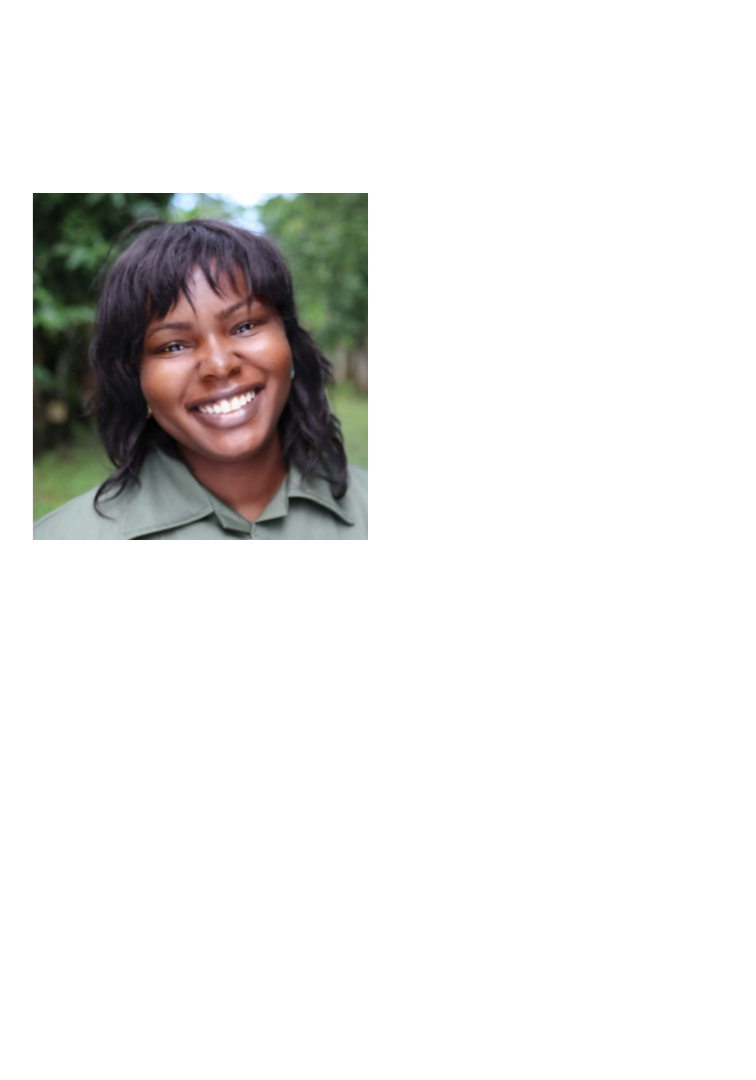
PSB 67(3) 2021
196
INTRODUCING THE
2021-2022 BSA STUDENT
SOCIAL MEDIA LIAISON
TERESSA ALEXANDER
Hello! I am Teressa Alexander. I am currently
pursuing a Ph.D. in the University of the
West Indies, Trinidad. I currently conduct
research on cocoa plants in the International
Cocoa Genebank, Trinidad (ICG,T) which
is one of the world’s largest and most diverse
collections of cocoa germplasm. Because of
future climate projections of drier climate
conditions in the southern Caribbean, my
work focuses on the development of drought
tolerant trees. Through my passion for sharing
science and showcasing the wonders of
plants, I plan to consistently share impactful
plant science content while breaking down
complex scientific language making it useful
and accessible to everyone. I look forward to
not only engaging with the BSA community
of botanists and plant science researchers, but
also plant enthusiasts around the world.
THANK YOU SONAL!
Sonal Gupta joined the BSA Student Social
Media Liaison team in October 2020. During
her one-year term, she was in charge of BSA’s
Facebook and Instagram accounts, and she
created the Spotlight Series with the aim of
highlighting Early Career Scientists. In her
role, Sonal worked with BSA staff, student
representatives, and helped with the popular
SciComm Celebration at Botany 2021 – Virtual!
Sonal is a PhD student in the department
of Ecology and Evolutionary Biology at the
University of Michigan studying genetics
of adaptation in the genus Ipomoea. She
is graduating soon (Fall 2021) and plans
to continue studying the mechanisms of
adaptation in plants at New York University,
where she will be joining as a postdoctoral
researcher. Sonal is also very passionate
about teaching, cooking, and learning new
languages. Thank you for your service to BSA!
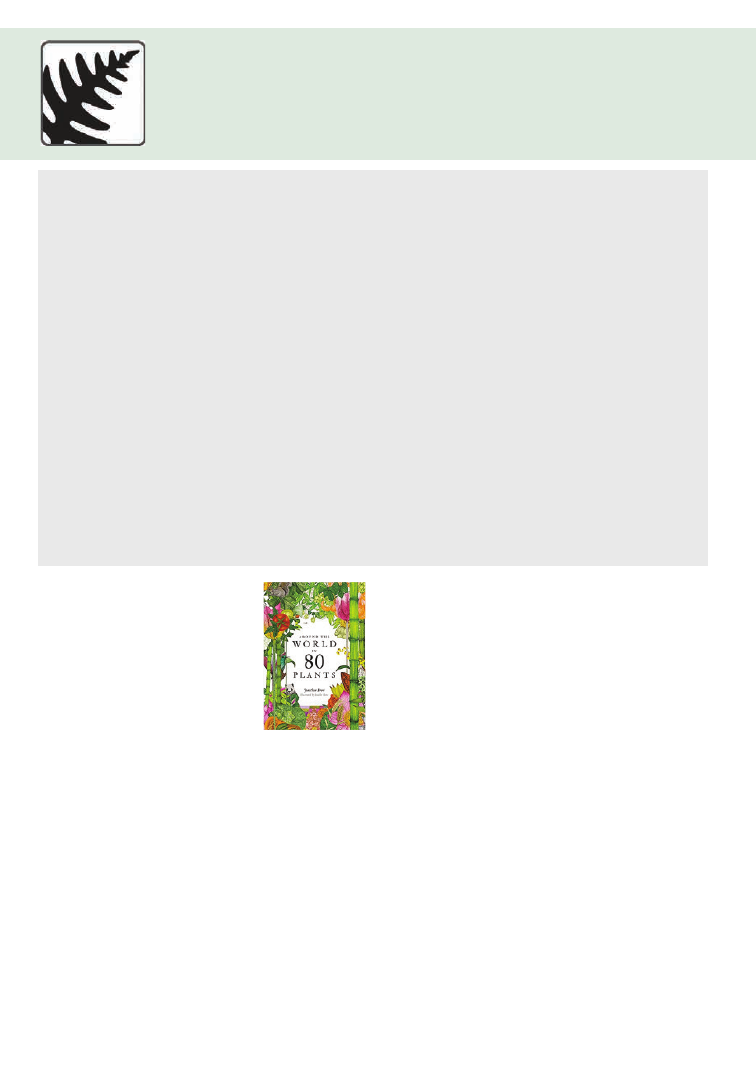
197
• Around the World in 80 Plants
• Broomrapes of Britain & Ireland
• Ethnobotany of the Mountain Regions of Africa
• Extraordinary Orchids
• Field Guide to the Trees of the Gila Region of New Mexico
• Finding the Mother Tree: Discovering the Wisdom of the Forest
• Global Tea Science: Current Status and Future Needs
• Household Economy at Wall Ridge: A Fourteenth-Century Central Plains
Farmstead in the Missouri Valley
• Nevada Mountains: Landforms, Trees, and Vegetation
• Planet Palm
• Rosa: The Story of the Rose
• Temperate Garden Plant Families: The Essential Guide to Identification
and Classification
• The Collectors: Creating Hans Sloane's Extraordinary Herbarium
• The Wardian Case: How a Simple Box Moved Plants and Changed the World
• Will Purdom: Agitator, plant-hunter, forester
BOOK REVIEWS
Around the World in 80
Plants
Jonathan Drori, illustrations by
Lucille Clerc
2021; ISBN 97817862732300
Hardcover $24.99; £20; 216 pp.
Laurence King Publishing Ltd.,
London
Around the World in 80 Plants is a beautifully
illustrated, general interest book that will
readily absorb readers with lively and witty
snapshots of edible, ornamental, medicinal,
toxic, or archetypal plants from every
continent. Jonathan Drori’s career as BBC
journalist and educator equipped him to
prepare a sequel to Around the World in 80
Trees (reviewed in Plant Science Bulletin 66[3]:
255-256) in collaboration with artist Lucille
Clerc. Here is an outstanding opportunity for
booklovers of all ages to engage with botany—
through plant history, chemistry, folklore, and
even etymology—since Drori delves into the
derivation of each plant’s Latin binomial, then
provides practical, everyday examples (e.g.,
Linum L., flax, gives us the term lingerie).
Drori’s Introduction is a forceful advocacy
statement for plants and our planet: Eat less
meat and poultry to take pressure off the
land; diversify the species we eat to avoid
monoculture and overreliance on the three
major cereals that feed the world: wheat, rice,
and maize; and protect crop wild relatives.
Arranged geographically by continent, the
book opens with the author’s native England,
focusing on nettle, featuring its stinging
trichomes that protect butterflies from
predators as they forage. Trichomes appear
again in relation to Cannabis L., with its
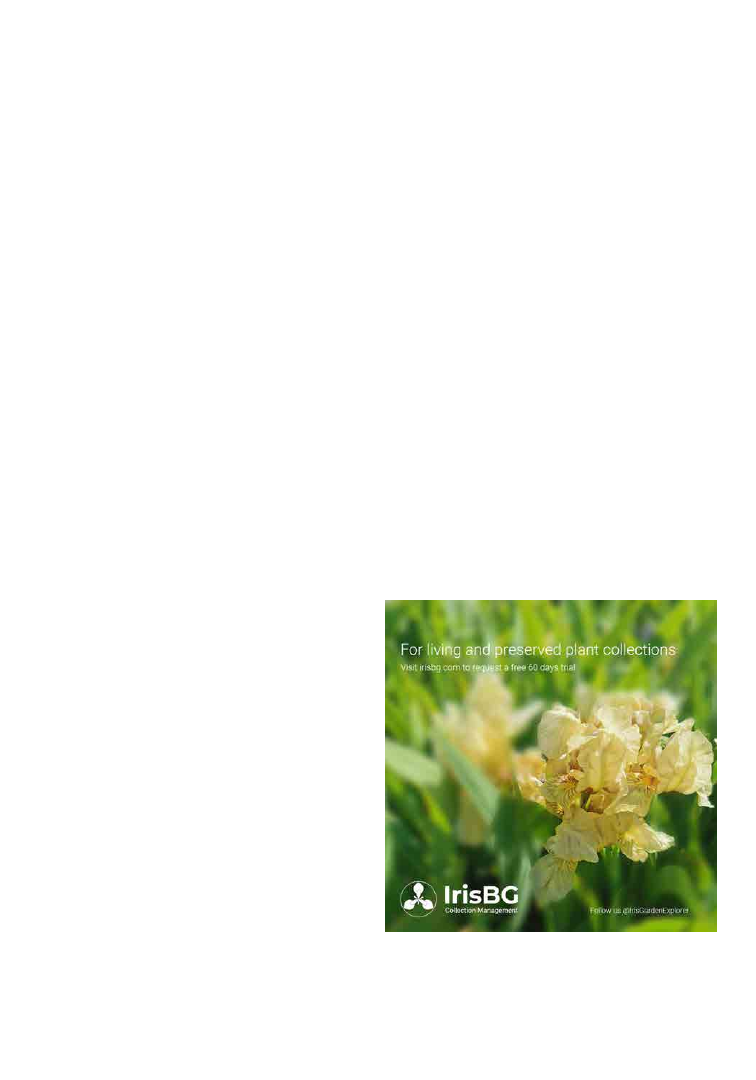
PSB 67(3) 2021
198
capitate stalked trichomes providing the bulk
of the active chemical constituent THC and
other cannabinoids in the resin. Chemical
constituents are also prominent in reading
about rhododendron, which produces a
toxic “mad honey” adverse to humans, but
to which bees are immune. The benefits of
iodine contained in kelp, as well as its valuable
contribution to carbon sequestration, are
balanced against the harm of the arsenic it
holds.
Drori’s delightfully written English commands
our attention, e.g., as regards tulip cultivation
in the Netherlands: “Intensive farming stamps
the land with splendid blocks of colour, but
presents a dining opportunity for insects
and fungi that is held in check only by heroic
application of agricultural chemicals.” Then
again, readers might need a translator to
understand some of Drori’s expressions, e.g.,
writing about mistletoe, “Cocking a snook at
winter.”
Dieffenbachia Schott, appropriately nicknamed
‘dumb cane’ contains a “defensive armoury of
toxins and irritants, special pressurized cells”
containing minuscule needle-like calcium
oxalate crystals called raphides. Chewing
introduces numerous crystals, bringing
intense numbing, oral irritation, excessive
drooling, and localized swelling. “Horrifically,
dieffenbachia was used in North America as a
punishment and method of torture during the
time of slavery.”
Similarly, the report about the castor oil plant,
native to the Horn of Africa, was adopted for
sinister use, force-fed to political opponents:
“By Mussolini’s Fascist thugs, it became an
instrument of humiliating and sometimes
fatal torture.” Drori describes mangoes “as
members of a notoriously well-defended
family that includes the malignant poison ivy
and cashews, whose nuts possess such caustic
fortifications that it is a marvel that anyone
discovered they’re edible.”
Drori’s deft and concise writing conceals the
fact that each succinct chapter required many
hours of research in Kew’s Library to obtain
and then to distill the key facts he selected
to introduce. Clerc’s meticulous, imaginative
detailed drawings enhance the text. Physically,
the book’s pages are of heavy, durable paper
stock; the book is well bound and stitched and
sturdy, to withstand being thumbed through
often. This volume could make a superb
textbook supplement for biology classes,
to introduce students to the treasures and
mysteries that plant biology encompasses.
REFERENCES
Drori, J. 2020. Around the World in 80 Trees. Hachette,
London.
–Dorothea Bedigian, Research Associate,
Missouri Botanical Garden, St. Louis,
Missouri, USA

PSB 67(3) 2021
199
Broomrapes of Britain &
Ireland. Botanical Soci-
ety of Britain and Ireland.
Handbook 22.
By Chris Thorogood and Fred
Rumsey
2021. ISBN: 9780901158598
Paperback, £17.50; 152 pp.
Botanical Society of Britain
and Ireland, Durham, United
Kingdom.
This book has a special appeal to me
because of frustration working with native
British broomrapes while studying weedy
broomrapes during a post-doc at the Weed
Research Organization in Oxford long ago. For
a botanist from Virginia, it was exciting seeing
numerous populations of broomrapes in the
countryside but challenging determining
them. This was especially true for Orobanche
minor and its many look-alikes. This book
would have met that challenge.
Both authors have extensive experience with
the genus (and its segregate, Phelipanche) and
the family as a whole and share this through
lucid text and a wonderful array of well-
reproduced color images of all species as well
as the incomparable drawings of Thorogood.
In broomrapes, features of the corolla are
important for species determination—
diagnostic characters very difficult to
determine from exsiccatae.
Extensive field work with each species in
Britain and Ireland (and much of Europe) as
well as herbarium research are the bases for
details presented in line drawings.
The book begins with an introduction
to the family Orobanchaceae and a lucid
discussion of the complex life cycle of
broomrapes as well as a section on other
non-photosynthetic plants confused with
broomrapes—plants like dodders (species of
Cuscuta in the Convolvulaceae); pine drops
(species of Hypopitys of the Ericaceae); and
achlorophyllous orchids (species in the genera
Neottia and Corallorhiza). This is followed by
terse but informative information on ecology.
I was surprised at how many broomrapes are
endangered in Britain and Ireland. Particularly
helpful is the “Identification” section, which
provides the user with the criteria for
distinguishing species. A short section on
taxonomic history is especially germane for
a genus tormented by fragmentation through
splitting but now receiving attention through
careful field studies coupled with molecular
studies. Yet the authors note—with British
understatement—that until further studies
occur, “taxonomy in the genus is likely to
remain in a state of some flux.”
The bulk of the book is species accounts
following the format of the Botanical Society
of Britain and Ireland’s (BSBI) handbooks. In
addition to conservation status, description,
and key characters, there is information on the
hosts, color photographs of plants and their
habitats, as well as exceptional line drawings
for each of the 14 species. The requisite BSBI
maps with grids are included for each of the
species, subspecies, and varieties. The parasite
distribution is helpfully mapped along with
the distribution of the hosts.
Orobanche minor receives special attention
because of difficulty, as noted earlier, separating
it from distinct but similar appearing species.
No doubt Broomrapes of Britain and Ireland
will be used to correct determinations in
herbaria.
The four sub-specific taxa of O. minor are
treated in detail. This will be of potential value
to weed scientists dealing with this widely
spread parasite reported from North America
and Australia and perhaps elsewhere where

PSB 67(3) 2021
200
crop and forage plants are damaged. Do some
of the invasions of this parasitic weed involve
distinct varieties?
The only other genus of achlorophyllous
members of the family in Britain and Ireland,
Lathraea (with two species), is included. A
helpful glossary and references cited conclude
what will undoubtedly be the “go to” reference
for anyone interested in these beautiful and
fascinating plants. As the back cover states:
“It is hoped that this book will stimulate
interest in broomrapes broadly, and promote
their much-needed conservation focus in the
region.” It will accomplish that for users in
Britain and Ireland and regions far beyond.
[Note: This review was also published (in a
slightly altered format) in
Haustorium, the
newsletter of the International Parasitic Plant
Society.]
—
Lytton John Musselman, Blackwater Ecolog-
ic Preserve, Old Dominion University, Norfolk,
Virginia 23529-0266
Ethnobotany of the Moun-
tain Regions of Africa
Rainer W. Bussmann, Ed.
2021; ISBN: 978-3030383855
Hardcover, $699.99, 571.99 €; book
with online access, $1099.99;
1125 pp.
Springer Nature, Switzerland
Ethnobotany of the Mountain Regions of Africa
is the newest addition to Springer’s series,
Ethnobotany of Mountain Regions, edited
by R.W. Bussmann and Narel Y. Paniagua-
Zambrana. This compendium, published in
two volumes not available separately, opens
with an introduction to the mountainous
vegetation and ecology of Africa, followed by
a second overview that focuses specifically on
the mountain vegetation and ecology of East
Africa. These and all successive chapters are
written by Bussmann, Paniagua-Zambrana,
and Grace N. Njoroge. Each author has a
proven publication record in ethnobotany.
The remainder of this account consists of
a register of 170 species representing the
mountain flora of East Africa. The species
included are familiar, recognizably of the
region, although I was unable to find any
discussion about the rationale for these
selections. I am surprised to find incorporated
some introduced species, e.g., Mexican and
Central American Lantana camara L. and
Indian Azadirachta indica A. Juss., common
in East Africa. Each mini-review contains
supplemental information and photographs
about the usage of relatives of the species
named in the entry’s title, even from other
continents, e.g., Georgia and Pakistan.
The organization of the articles present in
this catalog follows an established format,
unless topics are omitted where insufficient
material is available. Nomenclature, including
botanical synonyms, is followed with Local
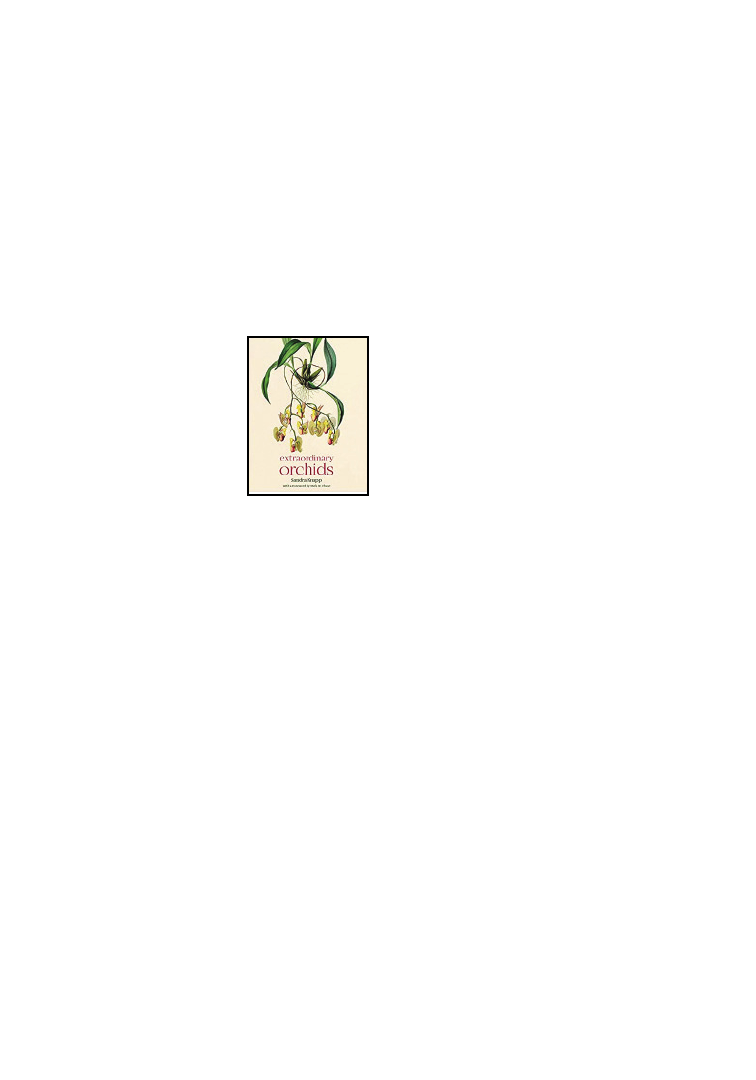
PSB 67(3) 2021
201
Extraordinary Orchids
Sandra Knapp
2021. ISBN 13-978-0-226-77967-
6 Hardcover, ISBN 13-978-0-226-
77970–6 eBook
Cloth: $30.00; Ebook: $29.99;
160 pp.
University of Chicago Press
A very large number of botanically accurate,
artistically beautiful, and generally excellent
illustrations of orchids were accumulated in
Europe from approximately the mid 1750s
until the early 1900s. Most of the best were
produced in the UK (or such is my bias).
German and Austrian paintings are very
accurate and beautiful, but lack personality
(for example, Beer, 1863; Müller, 1904).
Those from France and Belgium lack detail
and are not always beautiful (as, for instance,
Linden, 1885-1906). According to Chinese
orchid paintings expert Prof. Choy sin Hew
(now retired from the National University of
Singapore), the exquisite Chinese painting of
mostly Cymbidium orchids native to China,
which can date back to hundreds or thousands
of years, was/is by artists, not botanical
illustrators.
Illustrations in Britain are preserved in books,
journals, and several archives including those
in the British Museum of Natural History and
Kew Gardens. All are in the public domain
names, Botany and ecology, Phytochemistry,
Local medicinal uses, Local food uses, Local
handicraft and other uses, and References.
Historical linguists might integrate these
assembled local names in their investigations.
Along with the novel ethnobotanical
approach, readers will applaud the benefit of
666 illustrations, with 657 in color.
–Dorothea Bedigian, Research Associate,
Missouri Botanical Garden, St. Louis,
Missouri, USA
due to their age, even if from time to time,
miscreants (individuals and/or institutions)
try, or have tried, to claim ownership (I ran
into two instances of this kind and ignored
them) for reasons of ego, control impulse,
and/or profit. Over the years I used a few of
these illustrations in some of my writings (for
example, Arditti and Abdul Ghani, 2000),
but it never occurred to me that some/many
of these excellent illustrations can be used to
illustrate an entire book. A previous book,
illustrated with old paintings (Stewart and
Stearn, 1993), is devoted to the work of a
single artist and his biography: the excellent
Franz Bauer (1758-1849), a German who was
employed by the Royal Botanic Gardens, Kew.
It does not address many aspects of orchids.
And, there are few single-volume collections
of old prints, but these are not books with text
and themes.
The author of this book had the good idea I
did not have and used a superb selection of
excellent old illustrations produced in the UK
and elsewhere to illustrate her book on orchids.
Many of the old illustrations are of gaudy,
colorful, and large flowers, which are beautiful,
noisy (so to speak), and attract attention much
in the same way as semi-dressed models (male
or female) in an advertisement. Using them
would have produced an attractive book to
look at without the good information, class,
and dignity of this volume.
Fortunately, the author selected tasteful,
mostly beautiful, botanically accurate, and
scientifically instructive illustrations. She also
threw in a few gaudy ones to make it interesting,
but even these would stand out among
the paintings in illustrated classics like the
Orchid Album (Warner, Williams, Williams,
and Gower, 1882-1897), immense (531 ×
726 mm), The Orchidaceae of Mexico and
Guatemala (Bateman, 1843), and Monograph

PSB 67(3) 2021
202
of Odontoglossum (Bateman, 1874). The
result is a classy, instructive, informative, and
beautiful book, which is a pleasure to behold
and read. The text is detailed, clear, accurate,
and even entertaining. Orchids are presented,
described, and demystified very well and made
interesting. The author’s words complement
and compliment the illustrations very well.
A unique and attractive feature are the figure
captions. They are not the usual dry captions
so common in books and papers (including
my own), which do no more than describe
what is in the figures. All are well written,
and most contain information, which makes
them interesting to read and add to the book,
making it both beautiful and good.
I did find several items that need attention and
one missed opportunity.
• On page 12, “most, if not all, epiphytic
orchids use a special form of photosyn-
thesis called crassulacean acid metabo-
lism (CAM)” is problematic for several
reasons. First, “use” is teleological and
anthropomorphic. Perhaps the word is
acceptable in a popular-semi-scientific
book like this one, but it would have
been better to avoid it. Second, “most,
if not all, epiphytic orchids” is inaccu-
rate. Only thick-leaved orchids fix car-
bon via CAM. Many epiphytic orchids
are thick leaved, but certainly “not all.”
And third, CAM is not “a special form.”
It is one of the three common carbon
fixation pathways and found in all suc-
culents regardless of family. The other
two, C3 and C4, are limited to non-
succulents.
• Ant gardens within orchid roots are
described accurately on page 13. How-
ever, the description fails to mention
that they occur mostly in “trash bas-
kets,” which are root masses in some
orchids, as for example Coryanthes
(tropical America) and Ansellia (tropi-
cal Africa).
• The illustration from Gessner’s (1516-
1565) Opera Botanica (Gessner, 1771)
on page 98 is described accurately as
being probably (“probably” is neces-
sary here because there are orchid il-
lustrations in some incanababulae, not
all of which have been examined care-
fully; according to Prof. Hew seeds are
not shown in ancient Chinese orchid
paintings) the first to include images
of seeds. However, it fails to mention
that the painting of Epipactis palustris
on the same page may well be the first
illustration of resupinating orchid flow-
ers. To be fair, one must have worked
on resupination as I have and study the
painting very carefully to detect evi-
dence of bud and floral torsion in Gess-
ner’s painting.
• I own several of the great illustrated or-
chid books and series from the 1800s.
The paper (sadly not acid free) on
which the illustrations were printed
and/or painted is heavy and of high
quality for the time, but somewhat
crude and neither glossy or even semi-
glossy, nor matte. The pigments used
at the time differ from those used in
present-day printing. As a result, the
illustrations stand out on the old book
pages and are sharp. They almost look
alive. These qualities are easy to notice
even when digitized versions of illus-
trations from old books are displayed
on computer monitors. When these il-
lustrations are reproduced with current
inks on modern paper (particularly
glossy or semi glossy), something is
lost. The illustrations do not stand out

PSB 67(3) 2021
203
as well, are not as sharp as the originals,
and do not seem alive. This is what hap-
pens almost always when old illustra-
tions are reproduced in recent books
or journals including the old painting I
used (Arditti and Abdul Ghani, 2000).
It also happened in this case. Paper
and inks are selected by publishers and
printers, not authors. Therefore, this is
not the author’s responsibility here as it
was not mine.
Are these items major problems and do they
detract from the book? No! Perhaps only the
statement about CAM will be noticed by some
readers. And a personal preference of mine
rather than a problem: Not all illustrations
include artists’ names. It would have been
good to include artists’ names and sources of
illustrations in every caption rather than in a
separate illustrations index in the back of the
book.
This book is easily one of the most beautiful
and best (perhaps the best) popular/semi-
scientific orchid books I have had the pleasure
of reading and enjoying. An extensive
bibliography and a good index enrich it. It
is a triple-purpose book: excellent and very
affordable as: (1) a popular/semi-scientific
work on orchids to have, (2) a very attractive
coffee table volume, and (3) a beautiful gift for
anyone who is interested in plants in general
and orchids in particular.
REFERENCES
Arditti, J., and A. K. Abdul Ghani. 2000. Numerical
and physical properties of orchid seeds and their bio-
logical implications. New Phytologist 145: 367-421.
Bateman, J. 1843. The Orchidaceae of Mexico and
Guatemala. J. Ridgeway & Sons. London.
Bateman, J. 1874. A Monograph of Odontoglossum. L.
Reeve & Co. London.
Beer, J. G. 1853. Beiträge zur mophologie und biolo-
gie der familie der orchideen. Verlag vor Carl Gerold’s
Sohn.
Gessner, C. 1771. Opera Botanica. M. Seligman,
Nuremberg.
Linden, L., and E. Rodigas. 1885-1906. Lindenia F.
Meyer-van Loo. Gand.
Müller, W., and F. Kränzlin. 1904. Abbildungen der in
Deutschland und der angrenzenden Gebieten Orchi-
deen-Arten. R. Friedländer & Sohn. Berlin.
Stewart, J., and W. T. Stearn. 1993. The orchid paint-
ings of Franz Bauer. Timber Press, Portland.
Warner, R., B. S. Williams, H. Williams, and W.H.
Gower. 1882-1897. The Orchid Album, Vols. 1-11.
B.S. Williams. London.
—Joseph Arditti, Professor of Biology Emeri-
tus, Department of Developmental and Cell
Biology, University of California, Irvine, USA

PSB 67(3) 2021
204
Field Guide to the Trees
of the Gila Region of New
Mexico
By Richard Stephen Felger,
James Thomas Verrier, Kelly
Kindscher, and Xavier Raj Herbst
Khera
2021; ISBN: 978-0-8263-6237-7
(soft cover), 978-0-8263-6238-4
(e-book) - $24.95; 272 pp.
University of New Mexico Press, Albuquerque, NM
As a botanist relatively new to the state of New
Mexico, eager to learn everything I can about
the flora, I was pleased to come across the Field
Guide to the Trees of the Gila Region of New
Mexico. This book has all the botanical detail
I look for in a field guide, enhanced with an
aesthetically appealing layout and abundant
photographs.
Often poetic, this guide is also a
joy to read. For instance, in their explanation
of the taxonomy and data used for species
accounts, the authors note that taxonomies
are dynamic and that “science moves on,
even botany, so we must expect change.
New findings generate new taxonomies and
differences of opinion, sometimes allowing
for more than one reality in classification.
Plant taxonomy is the poetry of botany.”
The book begins by introducing the area
of interest: the Gila region of southwestern
New Mexico, USA. The authors remind us
of the historical significance of this area for
conservation. In 1924, following from the
work of Aldo Leopold, the U.S. Forest Service
assigned over 300,000 acres of land to the Gila
Wilderness—the first specifically designated
wilderness area in the world. This wilderness
area is in the center of what is now the greater
Gila National Forest. The Gila National Forest
and adjacent areas encompass the region
covered in this field guide. Ecologically
diverse, the Gila includes riparian habitats,
Chihuahuan desert, grasslands, pinon-
juniper-oak woodland, pine forest, and
mixed-conifer forest. The complex geology
and topography range in elevation from 4000
to 11,000 feet.
This diversity is epitomized by the 76 tree
species representing 22 families that are
included and nicely summarized in the Table
1 checklist. Trees in this guide are broadly
defined as freestanding plants (so excluding
vines) that are at least 5 m tall with a well-
formed trunk. Therefore, the authors include
species not typically thought of as trees, such
as Yucca elata and Fouquieria splendens. They
also include 15 species that are non-native but
occur within the Gila.
Each of the four authors has spent significant
time in the Gila, and their passion for the flora,
especially these tree species, is apparent. Their
accumulated knowledge of the region from
field experiences, along with published reports
and herbarium records, form the foundation
of species accounts. Species identifications
have been carefully checked with collections
from multiple herbaria, and generally two or
more vouchers are cited for each taxon.
The majority of the book is comprised of
the field guide, which is divided into three
main sections: the two major vascular plant
groups (gymnosperms and angiosperms)
and cultivated species. Within each section,
the authors lead you to family identification
through a dichotomous key. Then each
family is organized alphabetically following
the Angiosperm Phylogeny Group IV
classification. If multiple genera within a
family occur in the Gila, a dichotomous key
is provided again. Finally, for each species,
characteristics important for identification
are described, as well as their current
known distribution. Other information
such as provenance, etymology of scientific
names, common names, and economic or

PSB 67(3) 2021
205
ethnobotanical information (when available)
are provided. The guide concludes with a
list summarizing the Gila tree genera and
families, an extensive literature cited, and an
index for quick searching.
Probably the most notably useful aspect of
this particular guide are the comprehensive
photos. For each species, there is a figure
comprised of multiple high-quality images
that capture key characteristics. These
included things like male and female cones,
close-ups of flowers and fruits, and full views
of the trees with a human standing next to
the trunk for scale. Each image panel in the
figure is well-labeled with the characteristic of
interest and date and general location where
the photo was taken. The trained botanist
will appreciate the dichotomous keys (this
was very intuitive for me to follow). However,
these detailed photographs and organization
by major groups (conifers then angiosperms)
should additionally appeal to an average hiker
or natural history enthusiast.
With a total of 256 pages, the book itself is
under an inch thick and easily fits into a day
pack for ease of use in the field. The book is a
bit on the heavier side, but this is largely due
to the higher quality of paper and binding
which appear to be able to withstand solid use
(this will be tested in the following summers).
I think this guide will be especially useful as a
resource for students learning the flora of New
Mexico. I look forward to using this book with
my field courses in the years to come.
—Hannah E. Marx, Ph.D., University of New
Mexico, Albuquerque, NM, USA
Finding the Mother Tree:
Discovering the Wisdom
of the Forest
By Suzanne Simard
2021. ISBN 9780525656098
hardcover; $28.95; 348pp.
Alfred A. Knopf, New York.
Simard’s autobiographical narrative, like her
science, is successful in making connections
at many levels. Simard, Professor of Forest
and Conservation Sciences at the University
of British Columbia (UBC), was born into
logging in the Monashee Mountains of
south-central British Columbia on land
hewn from the forest by her Québécois great-
grandparents. The second chapter provides a
photo-illustrated description of her family’s
traditional hand-fall lumbering practices,
along with the first of many French phrases
and exclamations salted throughout the text,
which makes it a fun read. Family is important
throughout the book and her family history
is a window on the history of logging in the
Pacific Northwest. It provides context to her
later recognition of former skid-trails through
the woods, which provided unintended
habitat for subsequent natural regeneration.
The chapter also provides the back-story
to her opening pages that describe her
experience as “the first woman to work for the
logging company”—a summer college intern
charged to assess replanted seedlings on a
clear cut plantation and later tasked to mark
the boundaries for the next clear cut. Here
was the inroad to her chosen profession, but
she knew that something was not right. “My
childhood was shouting at me: The forest is an
integrated whole.”
Serendipitous observations lead to many of
the discoveries Simard describes throughout
the book. While cycling to watch her cowboy
brother bull ride in a neighboring town, she

PSB 67(3) 2021
206
describes her discovery of fungal threads
associated with Ponderosa pine roots as
she dug a small hole to bury the apple core
from her lunch. She began to teach herself
mushroom identification and discovered the
small, but growing, academic literature on
mycorrhizal fungi. “But why would the fungus
give up its water to the tree roots?” became
the first of a series of questions that continue
to guide Simard’s research. Post-graduation
(UBC degree in Forestry) she received an
entry-level position in the Provincial Forest
Service and her first opportunity to design a
scientific research project—an experiment
to determine the optimum concentration
of Roundup™ to prepare a clear-cut site for
seedling replanting. In the chapter “Killing
Soil,” she details her experimental design and
thoroughly describes its implementation, a
strategy she repeats throughout the book as
she introduces new technologies, procedures,
and expanded experimental designs required
to test successive iterations of questions
building on new discoveries. Written in a
way that is both logical and understandable
for a general audience, her writing is also a
blueprint for young scientists to follow in
developing their own inquiries. It quickly
becomes clear that not only was Simard
confronting the challenge of being a woman
working in a stereotypical man’s job, but her
research results could only be interpreted
as counter to the established practices and
codified regulations governing the Provincial
timber industry! Nevertheless, her supervisor
encouraged her to pursue an advanced degree
to gain credibility. As a student at Oregon
State University, she rigorously demonstrated
that succession and forest interactions were
not just about competition, but also involved
cooperation between species. Her Master’s
Thesis demonstrated water and nitrogen
sharing between alder and pines, and her
Doctoral Dissertation, part of which was
published in Nature as the “wood-wide
web,” established two-way carbon sharing
between birch and fir seedlings. This sharing
changed dynamically during the growing
season with the two species switching from
source to sink as the seasons progressed. Yet,
her presentations to the Forest Service and
industry representatives had no impact and
she was derisively chided as “Miss Birch”
(perhaps with “r” a typo).
Her 1997 Nature article prompted both
academic and public interest, and probably
professional jealousy. An off-the-record
comment to a reporter, “Don’t print this, but
between you and me, for all the good the
foresters are doing, they might as well paint
rocks,” essentially sealed her professional
change of career from professional forester to
academic professor. In 2002, no longer with
the Forest Service and with 2- and 4-year-
old daughters, she accepted an assistant
professorship at her alma mater, UBC,
ultimately commuting to and from Nelson,
BC (a 9-hour drive). With programming
assistance from her husband, her “wood-wide
web” was now mapped to include up to 48
distinct trees, one at each node, connected
by networks of multiple mycorrhizal species.
The expanse of the network extended up to 20
m and, near the center, was a single “mother
tree”—what old-time foresters called a “wolf
tree.” Her research questions had now evolved
to: Do trees communicate like neural networks?
Do trees have intelligence? Her public impact
included inspiration for James Cameron’s 2009
film Avatar; the character of Dr. Westerford in
Richard Powers’ 2018 Pulitzer Prize winner,
The Overstory (according to the World Wide
Web); and the closing feature of the 2013 PBS
Nature video “What Plants Talk About.”
In 2012 the conifer forests in western North

PSB 67(3) 2021
207
REFERENCES
Dudley, S. A., and A. L. File. 2007. Kin recognition in
an annual plant. Biology Letters 3: 435-438.
Simard, S. W., D. A. Perry, M. D. Jones, D. D. Myrold,
D. M. Durall, and R. Molina. 1997. Net transfer of car-
bon between tree species with shared ectomycorrhizal
fungi. Nature 388: 579-582.
--Marshall D. Sundberg. Department of
Biological Science, Emporia State University,
Emporia, KS 66044. msundber@emporia.edu
America were being decimated by a natural
pine beetle infestation. The pines, beetle, and a
fungus it carries have co-evolved for millennia
and periodically undergo coordinated boom/
bust cycles. Simard wondered if infested pines
produce defensive compounds, monoterpenes,
to inhibit the beetle? Do infested trees warn
their neighbors? Do trees demonstrate kin
selection, like Susan Dudley’s sea rockets?
Simard and her students were quickly able to
provide answers to all of these questions—yes
they do!
The 2012–2013 period also brought personal
challenges: breast cancer, double mastectomy,
and chemotherapy. Just over a year after
finishing chemo, she brought her daughters,
now 14 and 16, back to her Doctoral research
site at Adams Lake, B.C. Together they collected
long-term results that verified her predictions
21 years earlier. Connected birch and firs
were now twice the size, and healthier, than
the controls whose roots were kept separated.
“…the species [were] wholly interdependent
as my research had been showing me for
decades, wisdom long held by Aboriginal
peoples the world over.” And it is not just
the plants! Nitrogen analyses demonstrated
salmon nitrogen in the rings of cedar and
Sitka spruce from prey carried to the forest
by bears. Her current “Mother Tree Project”
began in 2015 in nine experimental forests
filling an ecological gradient across British
Columbia. Her goal is “to further develop an
emergent philosophy: complexity science” as
an ecological framework for ecosystem studies
and as a forestry tool integrating cooperation
and competition in a holistic approach to
sustainable forest management. Her message
to the reader: “Go find a tree—your tree….
Open your senses…. Vive la forêt!”
Global Tea Science:
Current Status and Future
Needs
By Dr. V. S. Sharma, formerly
UPASI Tea Research Institute of
India, and Dr. M. T. Kumudini Gu-
nasekare, formerly Tea Research
Institute
2018; ISBN-13: 9781786761606
Hardcover: £180.00; 558 pp.
Sri Lanka Burleigh Dodds Science Publishing Limited
Tea, from the Camellia sinensis, is the most
widely consumed beverage in the world, after
water (Sharma and Gunasekare, p. 85). It is
an important economic cash crop affecting
stakeholders, middlemen (viz., blenders, and
traders), and consumers. Tea plantings have
spread from China to the four corners of the
world, from over 2000 years ago to as recently
as the early 20th century in Kenya and Turkey.
The selection criteria for tea quality combines
all of the reconfiguring attributes in which
plant grafting, successional environmental
factors (e.g., the seasons, altitude, rainfall),
and the chemical composition of the tea leaf
allow.
Global Tea Science: Current Status and Future
Needs is divided into five main parts, with its
sub-chapters adding layers to the discussion.
The chapters of Part 1: Tea Breeding and

PSB 67(3) 2021
208
Germplasm are divided to introduce and
to discuss the diversity of the C. sinensis
(L.) through its beginnings in rural China
to your teapot today. Tea, and the flowering
beauties known as camellias, are included
in the family of flowering plants, trees, and
shrubs of Theaceae. The major cultivated
tea plant comprises two varieties: C. sinensis
var. sinensis (small leaf) and C. sinensis var.
assamica (Masters) Kitamura (large leaf);
there are cousin varieties grown commercially.
Consumption is increasing worldwide and
global tea production has almost doubled
(in measured metric tons!) since 2001. The
micronutrients within a cup of tea have
protective health benefits against cancer,
cardiovascular diseases, and obesity.
The chapters of Part 2: Cultivation and
Agronomy focus on good agricultural
practices essential for a plant continuously
harvested and pruned for its yield. The
growth of the C. sinensis originated in
“natural forests characterized by warm and
humid conditions and nutrient-rich soils.”
(Sharma and Gunasekare, p. 53). Today’s tea
farmer (like most farmers) must consider land
selection and preparation, soil conditional
and reconditioning, mulching, manure, and
management of pests, disease, and weed. The
grafting of these Camellia spp. cultivars for
clonal development, the climatic seasons that
affect any plant growth and in particular affect
tea bush growth, all collaterally affect tea leaf
growth, and ultimately the taste of your brew
of your hot cuppa.
Tea is a finicky plant. When one is considering
site selection, it seems that a perfect balance of
all measurable agrarian tactics are put into play
to nurture the little fusspot along into a viable
crop. Extensive soil rehabilitation to eliminate
unwanted vegetation and large rocks, plus
soil nutrient amendment with moisture
conservation, are not insignificant measures.
One has to literally strip the cultivation site
bare, then build it back for fruition. The
cultivar qualities of black teas, esteemed for
their strength, flavor, and appearance, are
part of the subjective sensory assessments
directly related to soil quality. An excellent
summary of chemical properties that reflect
these characteristics include the proportions
of Aroma Groups I and II for tea flavor (think:
taste), volatile flavor for aroma (think: smell),
and caffeine levels in determining briskness. I
will leave the remainder of the biochemistry
to the reader.
The living world is vulnerable to disease at the
various phases of development. Plants are not
held in exception, and of course this includes
our tea. Part 3: Plant Protection guides the
reader/researcher through pathogenicity
attributed to fungi, bacteria, or viruses
affecting all parts of the C. sinensis in all of its
life stages. Included here are also the insect-
borne diseases with a multitude of sucking,
boring, and scavenging pests that shall thrill
any entomologist and worry any botanist.
After wading through a dizzying array of what
could go wrong with tea plant cultivation at
the beginning of the section, we arrive at the
latter part where descriptors of Integrated
Pest Management (IPM) strategies are
engaged. Flexibility of IPMs are key as “...an
IPM strategy developed in one country or
for a particular pest may not be suitable for
adoption in another country or situation”
(Sharma and Gunasekare, p. 302). To aid
in ready research for all of this biological
mayhem, Sharma and Gunasekare provide
comprehensive references of books, book
chapters, and internet-accessible information
that is country-specific in the 47 pages of
reference material, for this section, in toto.

PSB 67(3) 2021
209
The surprising revelation of Part 4: Tea
Chemistry and Phytochemicals is the length
of biochemistry of tea discussed within
the two chapters. These practical building
blocks, in the guise of amino acids, vitamins,
antioxidants, etc., are all quantified, then
revealed for their possible function as a
healthy food in the consecutive two chapters.
Within Chapter 14: The Potential Role for Tea
in Combating Chronic Diseases, green tea
has been shown to be inhibitory in animal-
model research, of the last decade, against
cancer at different organ sites (Sharma and
Gunasekare, p. 431). Epidemiological studies
and mechanistic considerations are given
throughout this chapter with a decade of
recent research behind the overview. Lowered
blood pressure and cholesterol, protection
of some neurodegenerative diseases, and
reduced malignant neoplasms are “...suggested
beneficial health effects of tea consumption in
the prevention of chronic diseases” (Sharma
and Gunasekare, p. 441) based on animal
models.
Part 5: Sustainability consists of three
chapters geared toward preserving the good
stuff without unduly impacting the tea crops’
surrounding environment under changing
climatic conditions. This final section closes
the circle begun with the Chapter 1 discussion
on ensuring the tea woody plant’s genetic
diversity. Implementing organic farming
would protect the environmentally tenuous
tracts and water resources of tea crops in the
hills. Sharma and Gunasekare have assembled
the papers of academics who cover each of
these particulars, and as at the onset of this
volume, conclude the sustainable discussion
country by country of the major producers of
organic tea.
The last chapter, Chapter 18: Supporting
Smallholders in Tea Cultivation, ends with
the David-and-Goliath scenarios too often
seen in agronomy. Tea is no exception with
shrinking cultivation ground giving way
toward more remunerative green grocery
products. “A continual process of farmer
empowerment is also a prerequisite to the
successful improvement of the position of
smallholders in tea agribusiness. In order to
improve farmers’ standards of living and use
farmers’ potential to the full, mind-sets in
the tea industry must change and effective,
fair, trusting and sustainable partnerships be
developed between individuals, groups and
farmers’ institutions with corporate partner
institutions” (Sharma and Gunasekare, p.
529).
An interesting book, in its five parts and
on the whole, the Sharma and Gunasekare
edition of Global Tea Science: Current Status
and Future Needs would suit the library of
any botanical enthusiast, or academic, with
its comprehensive collection of relevant
publications. The humble tea leaf has mighty
roots indeed.
—Karen Penders St. Clair, PhD

PSB 67(3) 2021
210
Household Economy
at Wall Ridge: A Four-
teenth-Century Central
Plains Farmstead in the
Missouri Valley
By Stephen C. Lensink, Joseph
A. Tiffany, and Shirley J.
Schermer [eds]
2020; ISBN: 9781607817734
Hardcover: $70.00; 288 pp.
University of Utah Press
Household Economy at Wall Ridge is a beautiful
book of 14 chapters inclusive of figures,
tables, online resources, and comprehensive
references. It’s one of those books that make
you feel, on initial inspection, that you are in
for something special.
“The Wall Ridge project represents the
first full-scale systematic recovery and
complete identification of environmental
data from a Central Plains lodge, taking
advantage of the site’s high degree of
complexity and completeness of the floral
and faunal assemblages.” (Tiffany, et al., p. 1)
I could end my review with the above sentence
as the remainder of the book is efficiently
described. However, the scope of this
remarkable discovery, and the careful attention
to cataloguing detail that followed, would be
diluted, without the due consideration given
to our editors and of the researchers who were
a precedent to this wonderful archeological
finding.
From its onset, Household Economy at Wall
Ridge is conversational between those who
initially uncovered the Central Plains lodge in
1983, during a survey for a road construction
project, and those who interpreted that early
data with 21st-century technology. The first
five chapters introduce and give context to
the archaeological site, as well as a vetting
of the project methodology and results.
These chapters stand alone, yet intertwine
conversationally as particularities from each
of these first five chapters’ aspects weave the
tale between research teams separated by
time. In each chapter, our editors give due
consideration to the 1984 excavation team
of Michael J. Perry, project archaeologist at
the University of Iowa Office of the State
Archaeologist. Emphasizing that the Perry-
team did not haphazardly approach the site,
Lensink et al. commend:
“We believe the field and laboratory
methods utilized in this project repre-
sent some of the most disciplined and
scientifically rigorous ever applied to
a Glenwood phase site. While they are
now considered conventional methods
in modern archaeological practice,
these methods were cutting edge at the
time of the field work in 1984. Our only
regret is that more time and money were
not available to permit the complete ex-
cavation of the lodge with the same high
degree of spatial control used on the
portion so explored.” (p. 23)
The 21st-century investigators of our editors,
Lensink, Tiffany, and Schermer, followed
suit with their careful analysis and research.
There were additional efforts in the decades
that followed Perry to re-examine, or recreate
maps of drainage systems, topography, early
stratigraphic illustrations, and distribution
of phase sites to complete the picture of
settlement patterns, food resources, and
cultural interactions. It is here that our
editors pick up the mantle to pool all of this
information into one comprehensive book.
This, the compilation of the work conducted
and reconnected over the course of decades,
is the objective of Household Economy at

PSB 67(3) 2021
211
Wall Ridge. The excavation results—viz., the
chapters on the ceramics, assortment of stone
tools and fragments, smoking pipes, bone
or shell tools, spoons, scrapers, or beads—
are fascinating in their own right. There are
also comprehensive chapters on zoological
remains, the lodge’s life told in the history of
these remnants and housekeeping bits, and
the collective interpretations (and summary)
by the editors, with additional colleagues,
for the work they elucidated in the previous
chapters.
For the purpose of our botanical
considerations, I would like to turn the reader’s
attention to Chapter 10: Botanical Remains
offered by William Green. At the onset, Green
“...provides a more comprehensive report
on plant remains recovered from the site,
incorporating material from the preliminary
report and supplying additional data” (Lensink
et al., p. 102). The analysis, comparisons,
and quantification of all of the botanical
specimens, i.e., seeds, nutshells, grasses, trees,
is staggering for such an ancient site. Included
in the site findings are Carya sp. (hickory),
Fraxinus sp. (ash), Juglans sp. (black walnut or
butternut), Quercus sp. (oak), and Ulmus sp.
(elm) of which was the predominant wood for
construction and fuel by these ancient people.
Almost 1500 pieces and bits of maize account
for the majority of archaeobotanical samples
over any other collected. Included with maize
fragments are the two other legs of the Three
Sisters triagonate: beans and squash. Green
explains that the variety of plants grown in
the home garden of these ancient people
suggests possible four-season homesteading
rather than a nomadic lifestyle. The botanical
chapter offers cohesion of the other chapters to
one another because of this perennial lifestyle
evidenced with the botanica remnants. The
numerous tables and charts comparing small-
seed assemblages, ubiquity percentages,
flotation samples, and more, offer hard data
of observations and measurements. Botanical
Remains is an interesting chapter of forensic
botany, local ancient flora, and year-round
cultivation study restoring new life to the
forgotten.
The depth of information in this, or any of the
Household Economy at Wall Ridge chapters,
is singularly that of a yawning well, then the
breadth of a lake one inch deep. Certainly,
more laudable than I may outline here for
you. With the last point in mind, I would
encourage anyone interested in history,
science, or mathematics to consider adding
Household Economy at Wall Ridge to your
personal or professional library. The editors
have given such personal, credible, attention
to the details of the Wall Ridge project that
students of any age would benefit from its
tutelage.
—Karen Penders St. Clair, PhD
Nevada Mountains: Land-
forms, Trees, and
Vegetation
David A. Charlet
2019; ISBN: 978-1-60781-727-7
$75.00 (Hardcover); 432 pp.
University of Utah Press, Salt
Lake City, UT
Nearly the entire state of Nevada lies with
the geological province of the Basin and
Range, which has been subjected to geological
extensional processes in an east-to-west
direction resulting in block faulting that has
produced a series of mountain ranges and
valley basins that generally trend north to
south. Nevada Mountains is summary of all
the large and small mountain ranges found
in Nevada, which the author documents in

PSB 67(3) 2021
212
this book as being 319 in total, along with 373
valleys. The author has done an impressive
job in compiling this encyclopedia of Nevada’s
mountains, and the fieldwork that supports
the work was certainly a monumental
undertaking.
The work is loosely organized as a large
scientific paper with an introduction that
includes a brief summary of the history of
Nevada and the associated cartography and
studies of physiography. The methods section
discusses geographic names and provides
details on the author’s development of base
maps and the interpretation of primary
physiographic features. The results provide a
summary of the statistics of his work for the
major categories of mountains, valleys, fan
piedmonts, and other major features and a
very nice set of maps of enlarged sections of
the state with each mountain range identified
by number that corresponds to its number
and description. The enlarged section maps
(ESMs) are very well done and are numbered
as Figures I.11 - I.23. The area each ESM
covers within the state of Nevada is provided
on Reference Map Figure I.24.
Unfortunately, there are problems with the
figure numbers for these ESMs. The first
being that the figure caption for each ESM
is one number less than the corresponding
area shown on Reference Map Figure I.24,
thus I.11 actually corresponds to I.12, I.12
corresponds to I.13, and so on up through the
Figure labeled I.20 (Ref. map number I.21). A
second problem is that the map identified as
Figure I.21 has no corresponding map on the
Reference Map and does not fit in the series
as it is a map of northeastern California and
northwestern Nevada, illustrating the extent
of pluvial lakes during the Pleistocene, and
appears to be a different enlargement of a
section of Figure 1.9 and would fit better near it.
A third puzzling feature of the Reference Map
Figure I.24 and the associated enlargements
of sections is the numbering system used,
which starts in the northwest corner (Fig.
I-12) moves east (I-13, then I-14), then drops
to southeast (I-15), back up to the central-east
(I-16), then back to extreme southern Nevada
(I-17), back to center of the state (I-18), etc.
It is very confusing to keep the order in mind
and to know what the adjacent ESM is to the
one that the reader may be viewing.
A final point of inconsistency in these figures
and the Reference Map is that the figures
are referred to as, e.g., I.12, I.13, I.14, etc. in
the captions, whereas on the Reference Map
each ESM is listed as I - 12, I - 13, I -14, etc. A
minor problem, but it adds to the confusion.
These ESMs are the centerpiece of the book
and critical to locate mountain ranges, their
identification numbers, and descriptions in
the remainder of the book. It is surprising
there are so many problems with these very
important maps. Finally, Figure I.25 shows
the location of historic settlements in small
green pentagons, which the author discusses
within a given mountain range; however,
there is no way to identify what specific green
point corresponds to a settlement discussed
in the mountain range narrative. This map
would be enhanced if these green pentagons
were included on the ESMs and labeled in
some manner.
A larger section on Nevada vegetation follows
a brief conclusion, and this section distills
and summarizes the extensive vegetation
analysis conducted by the author during more
than 30 years of field work. The vegetation
is primarily classified by a relatively coarse
system of life zones that the author developed
and describes and allows the author to
describe the vegetation in each mountain
range in a brief, descriptive and organized

PSB 67(3) 2021
213
fashion. Supporting figures for this section
are in Figure IIA.2 (Rank Order of Flowering
Tree Species) and Figure IIA.4 (Rank Order
of Conifer Species), which as presented are
interesting but would be more informative if
the species corresponding to each histogram
bar was identified by species or a code tied to
the species listings in Appendices D and E,
which correspond to the figures, respectively.
A nice compendium of large color photos
(Figures II.1 to II.7) illustrate the authors life
zones.
The core of the book is comprised of the
descriptions of each of the 319 named mountain
ranges, which occupies 147 pages of the text.
The descriptions have a consistent format and
narrative, with the first paragraph describing
the mountain range location, physiography,
and geology; the second paragraph presents a
description of cultural features that emphasize
the period since colonization; and the third
and remaining paragraphs describe the
vegetation using the author’s life zones and
species selected for discussion by the author,
which emphasize trees and shrubs. At the end
is a listing of the years the author visited the
individual mountain range, which in many
cases is amazing.
Following the section on mountain ranges are
three large appendices that allow the reader
to search for mountain ranges and find their
description. They list the county, counties, or
state(s) the feature is found in which is helpful,
although even more helpful would have been
a cross reference to the ESMs found at the
beginning of the book so they could be more
readily found there as well.
The primary problem with the book is the
confusing labeling between the ESM figure
captions and their identification on the
Reference Map. This can be readily corrected
in a subsequent edition but cause the reader
confusion in this edition. A nice addition or
correction would be to print a new large paper
map that could be folded and unfolded that
would be used in conjunction with the book.
This map could have the full state on one
side and selected ESMs on the reverse. The
hardbound book appears to be well made, but
unfortunately some of the pages of the ESMs
came loose during my review of the book.
Overall, this an excellent book for a person
looking for an atlas and encyclopedic
treatment of the Nevada mountain ranges
with an interest in vegetation. For anyone
interested in Nevada biology, geology, or
geography, or who enjoys traveling and hiking
within the state, it is fascinating to peruse and
read about the individual mountain ranges
and see their similarities and differences to
other ranges. This book is also an excellent
introduction to vegetation of the Great Basin
in Nevada, with the understanding that these
life zones are quite coarse.
—Richard Lis, California Department of Fish
and Wildlife, Redding, CA

PSB 67(3) 2021
214
Planet Palm. How Palm
Oil Became an Ingredi-
ent in Everything—and
Endangered the World
Jocelyn C. Zuckerman
2021; ISBN: 978-1-62097-523-7
Hardcover, $27.99; ebook
1787383784; 272 pp.
The New Press, Portland, OR
Rising global demand for vegetable oil as
biofuel and for product innovations during
recent decades has led to a dramatic increase
in land area cultivated with West African
oil palm, Elaeis guineensis Jacq. Especially
in Southeast Asia, the oil palm boom has
contributed to economic growth but has
also led to undesirable environmental
effects, contributing to tropical deforestation
and loss in biodiversity and ecosystem
functions. Financial returns to the majority,
smallholder growers, have been meager, while
multinational corporations have profited in
billions.
Journalist Jocelyn Zuckerman, former deputy
editor of Gourmet, articles editor of OnEarth,
and executive editor of Modern Farmer has
dipped deep into institutional archives to
augment her investigative fieldwork about
oil palm cultivation in Africa, Asia, and
Latin America. A serious journalist with
healthy skepticism, Zuckerman researched
and interprets oil palm through an ecological
and historical lens, delving into complex
details dating back to colonialism, fleshing
out the scandals described briefly by Gray
(2018, previously reviewed in PSB). This is a
provocative, pioneering account of the history
of oil palm production, with accompanying
ecological destruction by the African oil palm
industry to the environment, and to impaired
human health worldwide. Harvesting and
processing the bunches of shiny red fruit is
linked to massive greenhouse gas emissions;
forced labor, poor sanitation, and human
rights abuses are common on plantations,
especially in countries where repressive
regimes thrive.
Over the past few decades, oil palm has seeped
into every corner of our lives. Worldwide, oil
palm production has nearly doubled in just the
last decade: in some form it occurs in roughly
half the products on U.S. grocery shelves. The
oil palm rush has been built on stolen land and
slave labor, erasing cultures and devastating
the landscapes of Southeast Asia such that
iconic orangutans, helmeted hornbills, and
many of the world’s most biodiverse forests
now face extinction. Fires clearing the forest
for plantations discharge carbon emissions
that surpass those of industrialized nations.
The concern is that governments facing
deficits “…will be tempted to cut the budgets
of enforcement agencies and license new
investment projects that could lead to more
forest loss” (Fountain 2021, quoting Frances
Seymour, World Resources Institute). Rivers
have become so contaminated that their waters
are no longer potable; the local population
that relied on river fish are food insecure, now
relying on processed food; the only fish hardy
enough to survive is ‘el avión,’ or “cylindrical
and solid, like an armored military aircraft”
(photo, p. 177)—inedible, bony, whiskered.
Part 1 reports on the oil palm trade’s
colonial beginnings, with British imperialists
George Goldie and William Lever marching
arrogantly into Africa in the 19th century
and monopolizing the oil palm business.
Both exploited African labor while pushing
indigenous traders out of their own markets.
African oil palm was one among other natural
resources that provoked the scramble for
Africa by European colonizers through the late
19th century. Zuckerman provides evidence
that the British soap-making company Lever

PSB 67(3) 2021
215
Brothers (now part of Unilever) used slave
labor to harvest oil palm on the 1.8 million
acres it controlled in the Belgian Congo.
Part 2 holds the core of Zuckerman’s exposé,
as she relates a disturbing catalogue of
contemporary evils associated with the oil
palm trade, including the exploitative practices
of today’s multinational corporations,
sequentially documented methodically
by Qaim et al. (2020). Plantation workers
in Honduras are subjected to hazardous
chemicals, with no protective gear, for
appallingly low wages; electrocutions and
other workplace accidents are common,
and workers meet violent retribution when
they try to organize unions. She reports its
biological damage as well as the adverse health
effects of oil palm by its use in cheap, high-
calorie foods: “It’s common to blame sugar
for the world’s weight problems, but in the
last half-century, refined vegetable oils have
added far more calories to the global diet than
has any other food group.” Zuckerman links
the cultivation and production of oil palm to
“the combined twenty-first-century crises of
obesity, malnutrition, and climate change.”
Health impacts of oil palm—epidemics of
obesity and heart disease in parts of the
developing world, where it is increasingly
used to produce inexpensive snacks—are dire;
when processed at high temperatures, it can
even cause cancer.
An ingredient in everything from toothpaste
to non-dairy creamer, bread, instant noodles,
cookies, ice cream, chocolate, detergent,
lipstick and lotion, oil palm now accounts for a
third of the world’s vegetable oil consumption.
Many products that use oil palm aren’t
clearly labeled. Oil palm and its derivatives
can appear under many names, including:
Vegetable Oil, Vegetable Fat, Palm Kernel,
Palm Kernel Oil, Palm Fruit Oil, Palmate,
Palmitate, Palmolein, Glyceryl stearate,
Stearic Acid, Elaeis Guineensis, Palmitic Acid,
Palm Stearin, Palmitoyl Oxostearamide,
Palmitoyl Tetrapeptide-3, Sodium Laureth
Sulfate, Sodium Lauryl Sulfate, Sodium
Kernelate, Sodium Palm Kernelate, Cetyl
palmitate, Sodium Lauryl Lactylate/Sulphate,
Hydrated Palm Glycerides, Ethyl Palmitate,
Octyl Palmitate, and Palmityl Alcohol (World
Wildlife Fund, n.d.).
Zuckerman’s documentation is outstanding
for the most part, but occasionally she, as
other writers do, repeats and misrepresents
unverified data as fact (e.g., on page 8:
“Archaeological findings suggest that the
Egyptians were trading palm oil as early as
3000 BC”; her Notes cite a secondary source,
but aving spent hours pursuing that citation,
it led only to another secondary source
[Raymond, 1961]). According to esteemed
archaeobotanist Dorian Fuller, “No I have
never come across evidence for this, and
think is it very unlikely. Although wild oil
palm use in Ghana goes back to middle/
early Holocene, evidence for cultivation or
at least management of forests to increase oil
palms, probably starts around 2000–1500 BC
only. There is NO evidence for trade between
western Africa and the Nile that early.
Although Egyptians did trade out into the
desert in the Old Kingdom, it is not entirely
clear where they were headed; it seems very
unlikely that they were in contact with any
region further than Lake Chad. By far most
of their trade was Eastern Mediterranean,
Red Sea, and with Nubia/Sudan via the Nile.”
It is frustrating to search for Literature Cited
buried in 45 pages of Notes, and those lack
full references.
Zuckerman’s prose is engaging, and
her advocacy is superb. I recommend
wholeheartedly this general interest book

PSB 67(3) 2021
216
about a crop that has become an environmental,
public health, and humanitarian disaster.
Closing with the author’s own cautionary
words from the Epilogue: “If we have any
hope of feeding 9 billion people by 2050, we
must stop planting land with commodities
destined for animals’ stomachs and fuel tanks
and instead cultivate crops meant for humans,
in particular nutritious options like healthy
grains, fruits, vegetables, and legumes.”
REFERENCES
Fountain, H. 2021. Covid slowed the world, yet defor-
estation sped up. The New York Times March 31, p A11.
Gray, F. 2018. Palm. Reaktion Books, Ltd., London.
Qaim, M., K. T. Sibhatu, H. Siregar, and I. Grass. 2020.
Environmental, economic, and social consequences of
the oil palm boom. Annual Review of Resource Eco-
nomics 12: 321-344.
Raymond, W. D. 1961. The Oil Palm Industry. Tropical
Science 3: 69-89.
World Wildlife Fund. n.d. Website: https://www.world-
wildlife.org/pages/which-everyday-products-contain-
palm-oil.
–Dorothea Bedigian, Research Associate,
Missouri Botanical Garden, St. Louis,
Missouri, USA
Rosa: The Story of the
Rose
Peter E. Kukielski with Charles
Phillips
2021; ISBN: 9780300251111
Hardcover, $30, £22.00;
256 pp.
Yale University Press,
New Haven CT
The perennially popular ornamental Rosa
L. acquired a new volume that praises its
virtues, considering its impact in world
societies and religious practices throughout
history, enhanced with 143 color illustrations.
Kukielski curated the New York Botanical
Garden’s rose garden, between 2006 and 2014.
His passion is palpable. The authors depict
Rosa as exceptional: no other flower has the
same magnetism or significance. A symbol of
beauty, affection, sovereignty, and celebration,
roses appear literally and symbolically in
art, fashion, perfume, ornaments, literature,
poetry, song, mythology, politics, medicine,
and cuisine.
Classification and nomenclature of roses open
this story. Against the authors’ suggestion
of Anatolia as its source, Iwata et al. (2000)
indicate the foothills of central Asia; Kiani
et al. (2010a, b), using RAPDs and SSRs,
reported that the germplasm of R. damascena
Mill. in Iran is more diverse than that found in
Bulgaria or Turkey. Accordingly, R. damascena
in these countries was probably obtained from
Iran; given the high diversity found for this
species in Iran, the latter seems a major center
of diversity for the species.
Extraction of its prized oil used carrier oils,
and later, distillation. Quoting the authors:
“Rose oil was made by immersing rose petals
in oils such as almond, sesame, and olive”; “For
roses, sesame oil was used because of its thicker
qualities that held the fragrance.” “Thicker
qualities” notwithstanding, overlooked is

PSB 67(3) 2021
217
summer comes, it fades and is gone.”
The mediaeval Catholicos Grigoris of
Aghtamar (15th century) analyzed the poetics
of love symbolized by the rose and nightingale,
borrowing from the Persian:
When the nightingale persists in her
demand for a single red rose, the rose tree
says that there is one way that could be
arranged. The nightingale would have to
pierce her heart on one of the rose tree’s
thorns and sing all night by moonlight
while the blood flowed out of her body
and into the tree.
Since rosewater and water features are
showcased in Rosa, the Armenian water
festival Vardavar [Վարդավառ] (Raffi,
1916; Taqizadeh, 1940; Villa and Matossian,
1982; Rose, 2011; Najarian, 2012; Antonyan
and Siekierski, 2013; Abrahamyan, 2014;
Ohanyan, 2014; Catlin, 2018), must be
mentioned. Vardavar is a joyous summer
ritual observance that occurs 98 days after
Easter, which in the Christian calendar
became designated as Transfiguration. While
Christian, this ritual has pagan antecedents
related to the cult of fertility goddess Astghik
(Assyria and Babylon: Ishtar; Greece: Artemis,
Aphrodite; Rome: Diana, Anahit). Armenians
have retained the popular festival tradition
of sprinkling, even pelting, one another with
water and rose petals;
in some places, they
release white doves, in remembrance of Noah
after the Flood.
Accustomed as I am to academic writing,
it is disappointing that so many topics were
touched on lightly, without attribution. There
is also geographic disarray that is jarring:
under the section heading “Persian Poetry
and Roses,” the Kama Sutra appears in the
final paragraph. The two-page chapter titled
“The Delights of Turkey” jumbles cuneiform
tablets, Boeotia (a region in central Greece),
the enfleurage extraction method, whereby
rose petals are spread over trays coated with
a layer of fat, or upon a bed of sesame seeds
that become saturated with rose essential oils
by diffusion. Depleted petals are replaced
repeatedly with fresh ones; those augmented
sesame seeds are crushed with mortar and
pestle to obtain high-quality concentrates,
forming rose absolute (Bedigian, 2011, p. 9).
Despite the authors’ global scope, examples
from Armenia are conspicuously absent.
The Armenian term
վարդ
(vard) is a
Northwestern Iranian loan word (Beekes,
2010), cognate with the Iranian root *vrda-:
“The word is certainly borrowed from the
East… Arm[enian] vard ‘rose’ from OIran.
*urda.”
Roses feature prominently in Armenian
culture, religious practice, poetry, and song,
since antiquity. Armenian Legends and Poems
(Boyajian, 1916) contains dozens of references
to rose—literal and metaphorical—in essay,
lullaby, poem, and riddle. The famed bard and
poet Sayat Nova [Sayatyan (1712–1795)] wrote
the following lament, which I felt firsthand a
month ago when a vandal climbed up a steep
bank to clip our roses, just as they had begun
flowering this year:
“I made a garden, others plucked the
rose.
Theirs was the sweetness, mine the
thorny close.”
It was customary in early days—still retained
in some places—for a man to test the girl
he wishes to marry with a riddle (Boyajian,
1916, p. 117). Her correct answer sealed the
deal. Among riddles used on these occasions:
“What rose is it that opens in the winter and in
due time fades and is gone?” Answer: “Snow
is the rose that opens in the winter; when

PSB 67(3) 2021
218
and Cyrenaica (eastern coastal Libya), leading
to choppiness that is difficult to follow.
Another serious problem is that the authors
provided no explanation of the methods used
to elicit and edit their data. This book may be
appreciated by casual readers, but scholars
wishing for sources with more substance
should study Başer et al. (2012), upon which
the authors relied heavily; also, Devi et al.
(2015), Hamedi et al. (2013), Horwood (2018),
Mahboubi (2016), Pifer (2020), Sardari et al.
(2019) and Widrlechner (1981). Although
published sources about roses are plentiful,
the Bibliography (two pages) is brief.
Well-bound, Rosa should hold up to heavy use
as a general interest library book. The value
of this book lies in its capacity to encourage
the browser of popular books to engage with
science. Via the vehicle of the venerated rose,
readers can venture into the world of plant
biology through the doorway that ethnobotany
opens, bringing together traditional and
scientific knowledge to promote plant-based
content in the humanities.
REFERENCES
Abrahamyan H. 2014. The Vardavar celebration among
Armenians. PhD dissertation, Institute of Archaeology
and Ethnography, National Academy of Science, Yere-
van. [In Armenian].
Antonyan, Y., and K. Siekierski. 2013. A neopagan
movement in Armenia: The children of Ara. In: K.
Aitamurto, S. Simpson (Eds). Modern Pagan and Na-
tive Faith Movements in Central and Eastern Europe.
Acumen Publ. Ltd, Durham UK and Bristol CT. pp.
266-282.
Başer, K. H. C., A. Altintaș, and M. Kürkçüoglu. 2012.
Turkish rose. A review of the history, ethnobotany, and
modern uses of rose petals, rose oil, rose water, and
other rose products. Herbalgram 96: 40-53.
Bedigian, D. 2011. Introduction. History of the culti-
vation and use of sesame. In Bedigian D, Ed. Sesame:
the genus Sesamum. Medicinal and Aromatic Plants -
Industrial Profiles series. CRC Press, Taylor & Francis
Group, Boca Raton, FL. pp. 1-31.
Beekes, R. 2010. Etymological Dictionary of Greek.
Online Etymological Dictionary https://www.etymon-
line.com/word/rose Brill, Leiden, Netherlands.
Boyajian, Z. C., compiler. 1916. Armenian Legends
and Poems. E.P. Dutton & Co., NY.
Catlin, R. 2018. The point of Armenia’s splashy holiday
is getting wet. Smithsonian Magazine July 3 https://
www.smithsonianmag.com/smithsonian-institution/
when-point-splashy-holiday-getting-wet-180969520/
Devi, M. P., S. Chakrabarty, S. K. Ghosh, and N.
Bhowmick. 2015. Essential oil: Its economic aspect,
extraction, importance, uses, hazards and quality. In:
AB Sharangi, S. Datta, Eds. Value Addition of Horti-
cultural Crops: Recent Trends 269 and Future Direc-
tions. pp. 269-278.
Grigoris of Aghtamar. 15
th
c. Concerning the rose and
the nightingale. In: Z. C. Boyajian, compiler, 1916. Ar-
menian Legends and Poems. E.P. Dutton & Co., NY.
pp. 79-83.
Horwood, C. 2018. Rose. Reaktion Books, London.
Iwata, H., T. Kato, and S. Ohno. 2000. Triparental ori-
gin of Damask roses. Gene 259: 53-59.
Kiani, M., Z. Zamani, A. Khalighi, R. Fatahi, and D. H.
Byrne. 2010a. Microsatellite analysis of Iranian Dam-
ask rose (Rosa damascena Mill.) germplasm. Plant
Breeding 129: 551-557.
Kiani, M., Z. Zamani, A. Khalighi, R. Fatahi, and D. H.
Byrne. 2010b. A unique germplasm of Damask roses in
Iran. Acta Horticulturae 870: 131-136.
Mahboubi, M. 2016. Rosa damascena as holy ancient
herb with novel applications. Journal of Traditional
and Complementary Medicine 6: 10-16.
Najarian, T. 2012. Armenian Traditions: Vartavar.
https://tamarnajarian.wordpress.com/2012/07/15/ar-
menian-traditions-vartavar/
Mahboubi, M. 2016. Rosa damascena as holy ancient
herb with novel applications. Journal of Traditional
and Complementary Medicine 6: 10-16.
Ohanyan, H. 2015. Water as a symbol of spiritual
rebirth in the Armenian Apostolic Orthodox Holy
Church. M.S. thesis. Patriarch Athenagoras Orthodox
Institute, Graduate Theological Union, University of
California Berkeley, Burbank CA.
Pifer, M. 2020. The Rose of Muḥammad, the fragrance
of Christ: Liminal poetics in medieval Anatolia. Medi-
eval Encounters 26: 285-320.
Raffi, A. 1916. Armenia: Its epics, folk songs, and me-
diaeval poetry. In: Z. C. Boyajian, compiler. Armenian
Legends and Poems. E.P. Dutton & Co., NY. p. 167.
Rose, J. 2011. In praise of the good waters: Continu-

PSB 67(3) 2021
219
ity and purpose in Zoroastrian lay rituals. In: N. Ba-
gherpour-Kashani, T. Stöllner, Eds. Water and Caves
in Ancient Iranian Religion: Aspects of Archaeology,
Cultural History and Religion. pp. 141-155.
Sardari, F. A., G. Mosleh, A. Azadi, A. Mohagheghza-
deh, and P. Badr. 2019. Traditional and recent evidence
on five phytopharmaceuticals from Rosa damascena
Herrm. Research Journal of Pharmacognosy 6: 77-84.
Sayatyan, H. [Sayat Nova, (1712-1795)]. 1916. With-
out thee what are song and dance to me? In: Z. C. Boy-
ajian, compiler. Armenian Legends and Poems. E.P.
Dutton & Co., NY. p. 35.
Taqizadeh, S. H. 1940. Iranian festivals adopted by the
Christians and condemned by the Jews. Bulletin of the
School of Oriental and African Studies, University of
London 10: 632-653.
Villa, S. H., and M. K. Matossian. 1982. Armenian Vil-
lage Life Before 1914. Wayne State University Press,
Detroit MI.
Widrlechner, M. P. 1981. History and utilization of
Rosa damascena. Economic Botany 35: 42-58.
–Dorothea Bedigian, Research Associate,
Missouri Botanical Garden, St. Louis, Missouri
Temperate Garden Plant
Families: The Essential
Guide to Identification and
Classification
Peter Goldblatt and John C. Man-
ning
2019; ISBN: 9781604694987
Hardcover: $45.00; 296 pp.
Portland, OR: Timber Press.
For many botanists, our vocation began as a
fascination with the plants we encountered
in the world around us. “What is this plant?”
we wondered, quickly followed by, “How
is this one different than the next? How are
they similar? Why are they interesting or
useful to humans? What is their broader role
in the natural world?” Those of us whose
interests lie in teaching or mentoring the next
generation of plant enthusiasts not only ask
these questions on our own, but also dedicate
ourselves to teaching our students how to
ask—and answer—them.
For this reason, Goldblatt and Manning’s
Temperate Garden Plant Families can best
be viewed not just as a gardener’s reference,
but as a valuable teaching tool. Reminiscent
of Deborah Madison’s (2013) family-based
cookbook Vegetable Literacy, the Guide
challenges readers to think about their daily
experiences in human-managed landscapes
from a deeper phylogenetic perspective. The
2019 release from Timber Press reviews 157
plant families (of a total of ~450 globally) whose
constituent species are cultivated in temperate
gardens. Well-researched and elegantly
composed two experts—Dr. Goldblatt in
Iridaceae and Dr. Manning in Iridaceae and
Hyacinthaceae—this book will be of obvious
use to horticulturists and gardeners with a
scholarly bent. But just as importantly, it will
also serve as an essential resource to teachers
of plant biology seeking to ground students’
developing ad hoc plant identification skills
within a greater evolutionary and ecological
context.
As a teaching tool, Temperate Garden Plant
Families is clearly and intuitively organized.
The bulk of the text corresponds to an A-Z
guide to the 92 plant families singled out
by Goldblatt and Manning for detailed
description. Each entry includes the focal
family’s common name(s); counts or estimates
of the genera and species contained therein;
information about the family’s geographic
range, vegetative form, flowers, and fruits; and
a narrative section providing natural history
and horticultural information. Selected
genera are also highlighted for large families.
An additional 35 families are presented
as addenda within the A-Z segment. For
instance, the peonies (Paeonia spp.) were
long considered part of the buttercup family,
Ranunculaceae, but have subsequently been
reclassified based on molecular evidence as
a monogeneric family in the Saxifragales.

PSB 67(3) 2021
220
By describing Paeoniaceae briefly at the end
of the Ranunculaceae entry, rather than that
for Saxifragaceae, Goldblatt and Manning
provide an updated systematic treatment
while honoring the previous placement of
the peonies. Such thoughtful touches make it
easy for intermediate or advanced botanists to
locate even relatively obscure groups of plants
within the A-Z portion of the book, without
alienating novices.
Some additional text blanketing the
alphabetical listing of major temperate
horticultural plant families contributes
helpful context to the encyclopedic A-Z
treatment. The book’s Introduction details the
authors’ motivations and orients a beginning
reader to modern conventions in systematics
(with particular focus on the family through
species level); areas of disagreement or rapid
change in family classification (e.g., the
recent subsumption of the horse chestnuts
[Hippocastanaceae] into the soapberry family
[Sapindaceae]); and to the language used to
describe the morphology of vegetative parts,
inflorescences, flowers, and fruits. The last
section, which provides language necessary
for new botanists to parse many of the A-Z
descriptions (e.g., the flowers of Asparagaceae
are “usually bisexual, sometimes unisexual,
in racemes, spikes, or axillary clusters” [p.
61]), would have benefited, by my lights, from
some expansion and illustration. For instance,
even simple ink illustrations of leaf shapes,
inflorescence patterns, flower structures,
etc. along the lines of those in Harris and
Harris’s Plant Identification Terminology
(1994) would have served as helpful visual
guides complementing the descriptive text.
A glossary following the A-Z section clarifies
some of these terms, but illustrations would
have been, in my opinion, more accessible to
some readers. And finally, the end matter of
the book is rounded out by brief treatment
of 30 families represented in temperate
gardens by only a single genus (e.g., Asimina
[Annonaceae], known in the temperate world
largely as home of the pawpaw, A. triloba) and
not covered in the A-Z section. Generally,
though, it is a strength of this Guide that the
majority of its pages are devoted to a simple and
formulaic structure, with minimal and helpful
material on either end providing context and
additional connections in a way that does not
distract from the main text. I anticipate that
most readers, regardless of background, will
dive right into the A-Z section and will only
appeal to the text preceding or following it as
necessary.
Having enjoyed reading Temperate Garden
Plant Families on my own, I look forward
to including it as a supplementary text in
my teaching of Plant Biology at Swarthmore
College this fall. The Guide will be especially
helpful in encouraging new botanists to
cultivate what MacKenzie and colleagues
(2019) call “plant love”: a deeper relationship
of appreciation for and understanding of
plants using a variety on sensuous and
intellectual modalities. I intend for students to
rely on Goldblatt and Manning’s text as a guide
to the deeper evolutionary patterns behind
the juxtaposed floral similarity and diversity
within the peas (Fabaceae) or the characteristic
aromas of some of the temperate laurels
(Lauraceae). Plant families, which provide
a broad and simple enough superstructure
to enclose the often-overwhelming diversity
of genera species, are the perfect place for
students to start developing plant love. And
the thoughtful, clear, and modern approach
taken by Goldblatt and Manning has resulted
in a useful and gratifying resource for them, as
well as for their instructor.
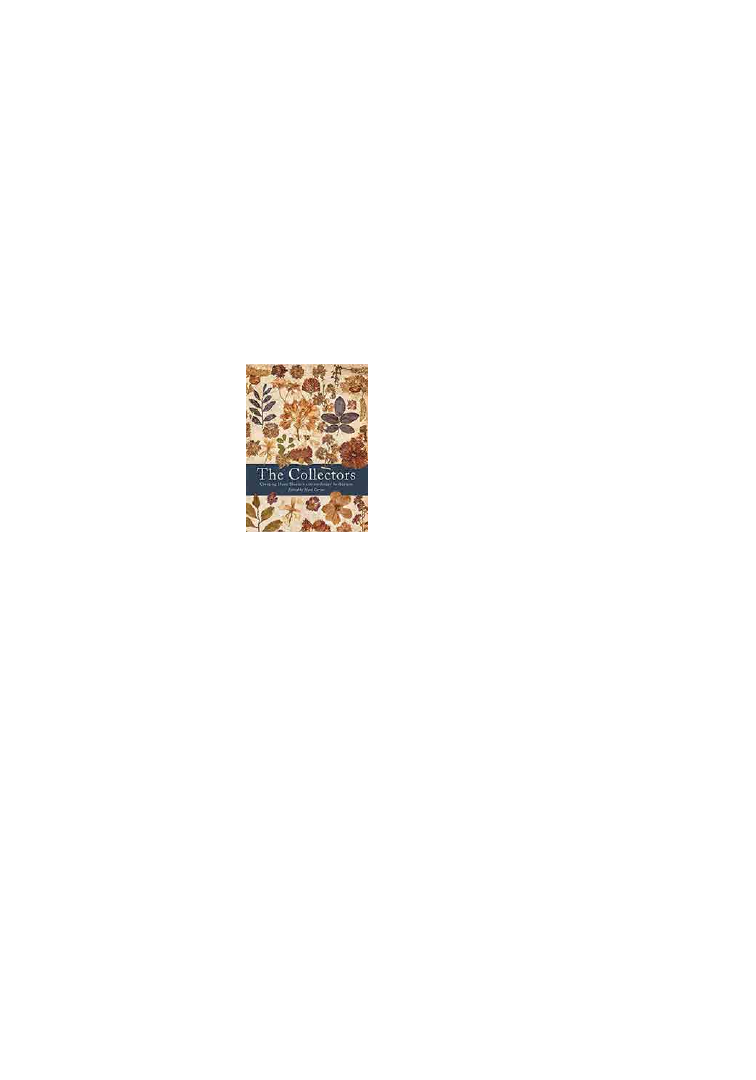
PSB 67(3) 2021
221
REFERENCES
Harris, J. G., and M. W. Harris. 1994. Plant Identifica-
tion Terminology. Spring Lake, UT: Spring Lake Pub-
lishing.
MacKenzie, C. M., S. Kuebbing, R. S. Barak, M. Bletz,
J. Dudney, B. M. McGill, M. A. Nocco, et al. 2019. We
do not want to “cure plant blindness” we want to grow
plant love. Plants, People, Planet 1: 139-141.
Madison, D. 2013. Vegetable Literacy. Berkeley: Ten
Speed Press.
--J. Grossman, PhD, Swarthmore College,
Swarthmore, PA
The Collectors: Creating
Hans Sloane’s Extraordi-
nary Herbarium
Mark Carine (Editor)
2020; ISBN 978-0565094881
Hardcover, $34.75; 192 pp.
Natural History Museum, Lon-
don
In 1687, Sir Hans Sloane went to Jamaica
as the personal physician of the Duke of
Albemarle, its newly appointed governor.
There he began to amass an extraordinary,
vast biological collection that eventually
formed the basis of the British Museum.
In 1881, Sloane’s botanical collections were
transferred to the newly established Natural
History Museum. Twenty-four contributors to
The Collectors help readers to understand how
Sloane (1660–1759) and his contemporaries
collected, organized, and classified the world,
providing readers with a visual view of the
colonial footprint upon plant taxonomy. The
Sloane Herbarium is, in fact, a collection
of collections, representing the rich history
of exploration and discovery that began in
the late 17th century. More than 300 people
contributed to its network as collectors;
more than 70 countries and territories were
included.
Historian James Delbourgo’s pivotal essay
about Sir Hans Sloane, based on expertise
from research for his acclaimed 2017 history
Collecting the World, explores the complex
interconnections between botanical aspects
and their human informants, many of whom
were slaves. Regarding Sloane’s attention
to Theobroma cacao L. the species, and
chocolate as a commodity, Delbourgo states,
“His motivations as a collector in Jamaica
were scientific, medicinal, commercial and
imperialist” (p. 128).
The Sloane Herbarium specimens collected
during his voyage to Jamaica (1687–1689) are
the first plant specimens to be brought back
to England from that region. Those specimens
were used in preparing the illustrations and
text for Sloane’s Voyage to the Islands Madera,
Barbados, Nieves, S. Christophers, and Jamaica.
Delbourgo’s closing words epitomize vastly
complex contrasting forces: “It demonstrates
the scientific productivity of slavery and
imperialism during the long history of the
Columbian Exchange that remade Europe,
the Americas and Africa ecologically and
economically in the early modern era. As
such, it raises fundamental and challenging
questions about whose labour and knowledge
it contains, how it was produced, and how to
confront its legacy today” (p. 133).
Similarly, Kathleen Murphy’s essay about
Edward Bartar remarks on the intersection
of botanical exploration with the British slave
trade. Of interest to taxonomists: “Bartar’s
collecting efforts ultimately did not meet his
English friends’ high expectations” (p. 126).
Included is botanist James Petiver’s complaint,
still often expressed by contemporary
botanists about incomplete vouchers: Some of
Bartar’s specimens contained “only leaves and
[were] wanting either flower or fruit or both”
(p. 127).

PSB 67(3) 2021
222
Studying this book about the Sloane herbarium
has specific appeal to this reader for several
reasons. Sir Hans Sloane and Samuel Browne
both figured prominently in early research
about African origins of sesame cultivation
in the Americas. The British Museum’s Sloane
herbarium holds two voucher specimens of
sesame: Richardson 191, BM; Sloane 192, BM,
the latter named Sesamum ueterum, collected
in Jamaica (Bedigian, 2013, p. 92).
Even more significantly, The Collectors cites
Hortus Malabaricus (p. 172), compiled
by Hendrik van Rheede tot Drakenstein,
whose engraving, originally published by
Burman (1689: 107, Tab. 55), is the earliest
known illustration of Sesamum indicum L.
subsp. malabaricum (Burm.) Bedigian, now
recognized as the progenitor of domesticated
sesame (Bedigian, 1984). That engraving
has been revitalized as Figures 1 and 28,
respectively (Bedigian, 2014, p. 7; 2015, p. 28).
It has been an absolute delight to read this
outstanding series of essays, so well researched
and clearly written by scholars who are
expert botanists and historians of science;
the editing is also superb. Sir Hans Sloane’s
herbarium embodies a priceless history of
plant exploration that remains of considerable
scientific and historical value today. This
elegant, bountifully illustrated volume reveals
the lives of the people who assembled the vast
biological collection, with accounts of their
adventures as they searched. It can be valued
by botanists in all disciplines as a carefully
composed contribution to the history of plant
taxonomy.
REFERENCES
Bedigian, D. 1984. Sesamum indicum L. Crop
origin, diversity, chemistry and ethnobotany.
Ph.D. dissertation, University of Illinois, Ur-
bana-Champaign.
Bedigian, D. 2013. African origins of sesame
cultivation in the Americas. In: R. Voeks, J.
Rashford (Eds). African Ethnobotany in the
Americas. Springer, NY. pp 67-120.
Bedigian, D. 2014. A new combination for the
Indian progenitor of sesame, Sesamum indi-
cum L. (Pedaliaceae). Novon 23: 5-13.
Bedigian, D. 2015. Systematics and evolution
in Sesamum L. (Pedaliaceae), part 1: Evidence
regarding the origin of sesame and its closest
relatives. Webbia 70: 1-42.
Delbourgo, J. 2017. Collecting the World.
Hans Sloane and the Origins of the British
Museum. Harvard University Press, Cam-
bridge, MA.
–Dorothea Bedigian, Research Associate, Mis-
souri Botanical Garden, St. Louis, Missouri,
USA

PSB 67(3) 2021
223
The Wardian Case: How a
Simple Box Moved Plants
and Changed the World
By Luke Keogh
2020. ISBN: 9780226713618
Hardcover, US$35.00; 288 pp.
University of Chicago Press,
Chicago
From the beginning of the
age of discovery, voyagers attempted to ship
exotic plants to their homelands, to return
with some of the botanical wonders they had
encountered. Besides the scarcity of potable
water on ships and the salinity of sea breezes,
plants on deck could be subjected to blazing
sun and violent storms. It is amazing that
despite these problems, many new species
arrived in Europe, often as carefully packed
seeds, cuttings, or seedlings. A significant
advance in the movement of plants came
in 1829 when a British physician named
Nathaniel Ward developed what became the
Wardian case, although he never patented it.
Ward was studying the life cycle of moths. For
observation purposes, he put eggs along with
some soil and leaf debris into a wide-mouthed
glass bottle and covered it with a lid. The
insects flourished, but a fern and a grass plant
also began growing in the moist environment
and lived there for three years.
As Luke Keogh describes in his fascinating
and well-written book on the invention, this
success gave Ward the idea of growing plants
in boxes with glass lids to let sunlight in as a
way to protect delicate species from London
pollution. He also thought a different version of
the case could be used for transporting plants
on long ocean voyages. An avid gardener,
Ward was friendly with the nurseryman,
George Loddiges. Together they filled two
glass-lidded wooden boxes with ferns, mosses,
and grasses, and loaded them onto a ship
bound for Australia. Five months later the
cases arrived at their destination with most of
their contents alive and in good condition. In
the second part of the experiment, the same
boxes, now filled with Australian species,
were shipped back to England. These too
fared well, and word of this success spread
quickly in the horticultural community. Soon
plant hunters for British nurseries such as
Veitch & Sons and botanists such as William
Jackson Hooker at the Royal Botanic Gardens,
Kew were shipping plants at a much faster rate
than in the past, and with better results. After
Nathaniel Wallich, director of the Calcutta
Botanic Garden, sent cases of plants to the
Jardin des Plantes in Paris, French botanists
were soon using them too. Eventually, the
French and Germans employed more cases
than did the British.
There were still problems. On shipboard,
plants did best when cared for by a gardener
or crewman with horticultural expertise. Also,
shorter voyages brought better results, with
the introduction of steamships a real boon.
What all this transport meant was not only the
successful introduction of exotics into Europe
but their movement around the world. Robert
Fortune shipped tea plants from China to
India along with expert Chinese growers who
made sure that the plants thrived in their new
location. As Alistair Watt (2017) reveals in a
book on Fortune’s travels, the collector did not
“steal” tea plants from China, as the story is
often told, but sent them with the cognizance of
Chinese officials. In fact, Fortune left England
with three Wardian cases filled with plants
that he gave as gifts to Chinese nurserymen.
Meanwhile the British also shipped cinchona
seedlings to India from Kew, where they had
been grown from seeds Richard Spruce had
collected in South America. The French and
Dutch sent plants from their colonial gardens
back to their homelands as well as to other

PSB 67(3) 2021
224
colonies. Through such transplantations,
Brazilian rubber trees and Mexican vanilla
orchids came to be grown on Southeast Asian
plantations and 70% of cocoa beans from the
South American cacao tree are now produced
in West Africa.
For many of us, it is in horticulture that the
effect of the Wardian case is most obvious
with plants from around the world flourishing
in our gardens. Yes, many of these species
were moved in the years before the case
became popular, but the pace of introductions
increased dramatically with its use. Needless to
say, the number of invasive species all over the
world also rose accordingly. As Keogh notes,
the Wardian case didn’t just move plants, it
moved ecosystems, since soil contains many
seeds, including those of weeds, along with
fungi and insects—these could all cause
problems in new environments. By the early
20
th
century, such problems were leading to
control of shipments. Fewer cases were used
and those that were had to be sanitized after
each trip; eventually each case was only used
once. Air travel made plant shipments much
faster, and so containers fit for long-term
travel were no longer needed.
Keogh writes that when he began his project,
he attempted to find old Wardian cases at
botanic gardens around the world. He was
surprised at how difficult it was to ferret them
out, and his hunt only turned up 15 of them,
with one, of course, at Kew. By the time his
research was completed, he realized that this
dearth was probably because most of the cases
had been destroyed to prevent contagion. It
is ironic that, reminiscent of their first use in
breeding insects, the last shipments were of
insects rather than plants, in particular insects
like lady bugs used to fight invasive pests.
In addition to transportation, Wardian cases
were 19th-century display pieces. Glass cases,
often edged in metal, held orchids and ferns,
two extremely popular plant groups at the time
and two that required controlled conditions.
Some of these containers fit on tabletops,
others were larger and more elaborate, and
they returned in the 20th century in the form
of terrariums that were a 1970s fad. What the
Wardian case in all its manifestations indicates
is how thirsty humans are for contact with
plants in their infinite variety.
REFERENCES
Watt, A. 2017. Robert Fortune: A Plant Hunter
in the Orient. Kew Publishing, Kew, UK.
—Maura C. Flannery, Professor Emerita, St.
John’s University, NY; Research Associate, A.C.
Moore Herbarium, University of South Caro-
lina, Columbia, USA

PSB 67 (3) 2021
225
Will Purdom: Agitator,
Plant-hunter, Forester
Francois Gordon
2021. ISBN: 978-1-910877-37-1
Hardcover, US$26.00; 252 pp.
Royal Botanic Garden Edin-
burgh, Edinburgh, SCT
Francois Gordon’s biography
of British botanist William “Will” Purdom
(1880-1921) is an enjoyable tale which evokes
the mythos of a classic hero’s journey. The
hero’s journey, describes Joseph Campbell, is
transformative: “We have not even to risk the
adventure alone, for the heroes of all time have
gone before us … And where we had thought
to slay another, we shall slay ourselves. And
where we had thought to travel outward, we
shall come to the center of our own existence”
(Moyers, 1988).
The book is an expertly researched tapestry
of British and American horticultural history,
the tumultuous development story of modern
China, and botanical adventure. His curiosity
piqued by an article and photograph, Gordon
initially concluded that not enough was
known about Will to warrant a full biography.
Several years later, his search of the archives of
the Royal Botanic Gardens at Edinburgh and
Kew, the Arnold Arboretum, and the Royal
Horticultural Society convinced him that
not only could Will’s story be told, but that
its telling would enhance our understanding
of the sociopolitical context that shaped and
ultimately obscured his legacy. Gordon says, “I
hope to put the record straight concerning the
achievements of a man who by sheer ability
and determination overcame the formidable
obstacles which society set in his path and who
left the world a better place for his passage.”
The book is a chronological account of
Will’s short life, focused on his professional
accomplishments but including enough
personal detail to paint a convincing
psychological portrait. By collating scattered
evidence such as correspondence, magazine
articles, photographs, and nursery ledgers,
Gordon reconstructs Will’s timeline and sheds
light on his obscure decision-making process.
Will was the third of seven children born to an
estate gardener in Ambleside and a member of
the first generation to benefit from a contested
decision to provide free public education. He
pursued botanical study early, and, at age 22,
gained admittance to a prestigious two-year
program at Kew Gardens designed to train
gardeners for mid-level positions throughout
the British empire. Will was an exceptionally
talented arboriculturist and quickly rose to the
highest position available to students. However,
his involvement in seeking fair compensation
for Kew laborers deeply embroiled him in the
trade union movement, a role that impacted
the remainder of his career.
The subtitle of the book describes three
professional phases. Will’s success as a
political “agitator” caused him to misperceive
the once-in-a-lifetime nature of an offer to
step into the Asistant Superintendent position
at Boston’s Arnold Arboretum, and he was
never able to regain the planned career track
for a Kew-trained gardener. Here, Gordon
introduces a tension that he found at the
heart of Will’s life: the devastating mismatch
between the botanist’s uncommon talents and
drive and the career options actually available
to him. Luckily, Will was soon recruited as a
plant-hunter; he accepted a two-year contract
offered by the Arnold Arboretum and British
horticultural “titan” James Veitch & Sons “to
investigate botanically unexplored territory”
in northwest China and return with seeds and
photographs.

PSB 67 (3) 2021
226
The remainder of the book primarily details
Will’s time in Shansi, Shensi, and Kansu
Provinces: as a plant-hunter from 1909 to 1912
and as a guide and companion for alpine plant
expert Reginald Farrer from 1914 to 1915.
Gordon’s writing is compelling. We learn that
China was in the throes of modernization,
and frequent uprisings by provincial warlords
made travel there extremely dangerous.
Yet Will moved easily between the British
expatriate community and rural Chinese by
quickly learning Mandarin, hiring local guides,
and befriending everyone he met. Although
his travels were colored by difficulty and
privation, he rarely mentioned these aspects
to his employers. Photographs, taken with a
Sanderson glass-plate camera (54 are included
in the book), show intriguing landscapes,
smiling laborers, and Will surrounded by local
leaders and notable members of the British
Legation.
In spite of collecting 891 specimens
representing 374 species, several new to the
West, and producing dozens of photographs,
Will did not receive a warm reception when
he returned to Britain in 1912. Gordon
attributes this to several factors. Will was
compared to another botanist, Ernest Wilson,
a charismatic gentleman-explorer able to
attract expedition funding and notorious for
over-collecting immense amounts of material.
Wilson collected in one of China’s biodiversity
hotspots, while Will had been sent to a low-
diversity and highly deforested region. Also,
Will’s background, as a member of the landless
class and an activist, might have predisposed
his employers to consider him unworthy of
career advancement. After two years seeking
suitable employment and living with family,
Will received an offer to accompany Farrer
to northwest China. Gordon suggests that the
memory of his liberation from rigid social
constraints while in China and the realization
that he might never attain the career to which
he aspired by staying in Britain motivated him
to seize the opportunity. In true hero fashion,
Will left his homeland to seek his rightful
place.
I will not spoil your reading of this
grand adventure by describing the final
transformation. Readers will find that Gordon
has carefully planted seeds to suggest that
Will himself was cultivating a strategy to
attain in China the mature position that
he was denied elsewhere. For example, the
appendices contain two reports written by
Will on “the afforestation question in China.”
As Divisional Director of the Chinese Forestry
Service from 1916 until his death in 1921,
Will implemented a visionary and sustainable
forestry program that both eased China’s path
to modernization and allowed him to exercise
his capacity for leadership. Francois Gordon’s
first book is a well-written and inspiring
tale of heroic proportions. He succeeds in
“put[ting] the record straight,” conveying the
inseparability between Will and his times,
and uncovering evidence to explain the near
erasure of Will’s story despite several species
and a Forest Park in China bearing his name.
I highly recommend Will Purdom to anyone
seeking a glimpse of the oft-hidden dimension
of botanical exploration.
REFERENCES
Moyers, Bill. 1988. “Episode 1: Joseph Camp-
bell and The Power of Myth - The Hero’s Ad-
venture.” Website: https://billmoyers.com/
content/ep-1-joseph-campbell-and-the-pow-
er-of-myth-the-hero%E2%80%99s-adven-
ture-audio/ [accessed 15 August 2021].
—Andrea G. Kornbluh, Member, Botanical
Society of America
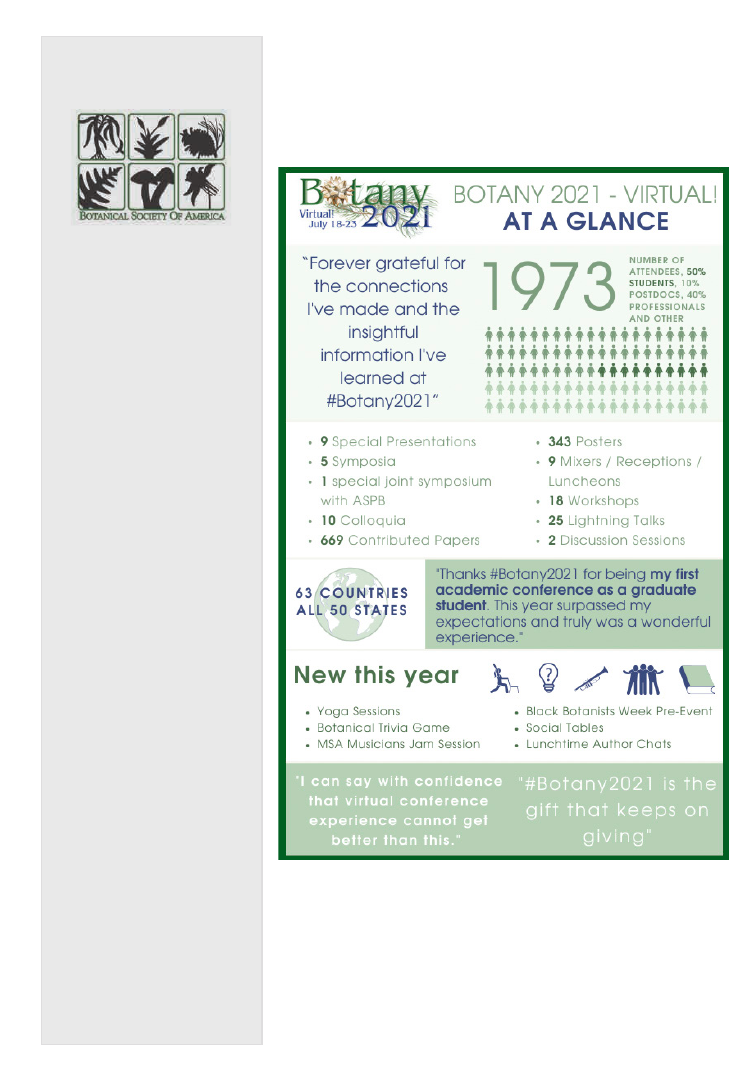
Plant Science Bulletin
The Botanical Society of
America is a membership soci-
ety whose mission is to: pro-
mote botany, the field of basic
science dealing with the study
& inquiry into the form, func-
tion, development, diversity,
reproduction, evolution, & uses
of plants & their interactions
within the biosphere.
ISSN 0032-0919
Published 3 times a year by
Botanical Society of America, Inc.
4475 Castleman Avenue
St. Louis, MO 63166-0299
Periodicals postage is paid at
St. Louis, MO & additional
mailing offices.
POSTMASTER:
Send address changes to:
Botanical Society of America
Business Office
P.O. Box 299
St. Louis, MO 63166-0299
bsa-manager@botany.org
The yearly subscription rate
of $15 is included
in the membership
Address Editorial Matters (only) to:
Mackenzie Taylor, Editor
Department of Biology
Creighton University
2500 California Plaza
Omaha, NE 68178
Phone 402-280-2157
psb@botany.org
Plant Science Bulletin
Fall 2021 Volume 67 Number 3
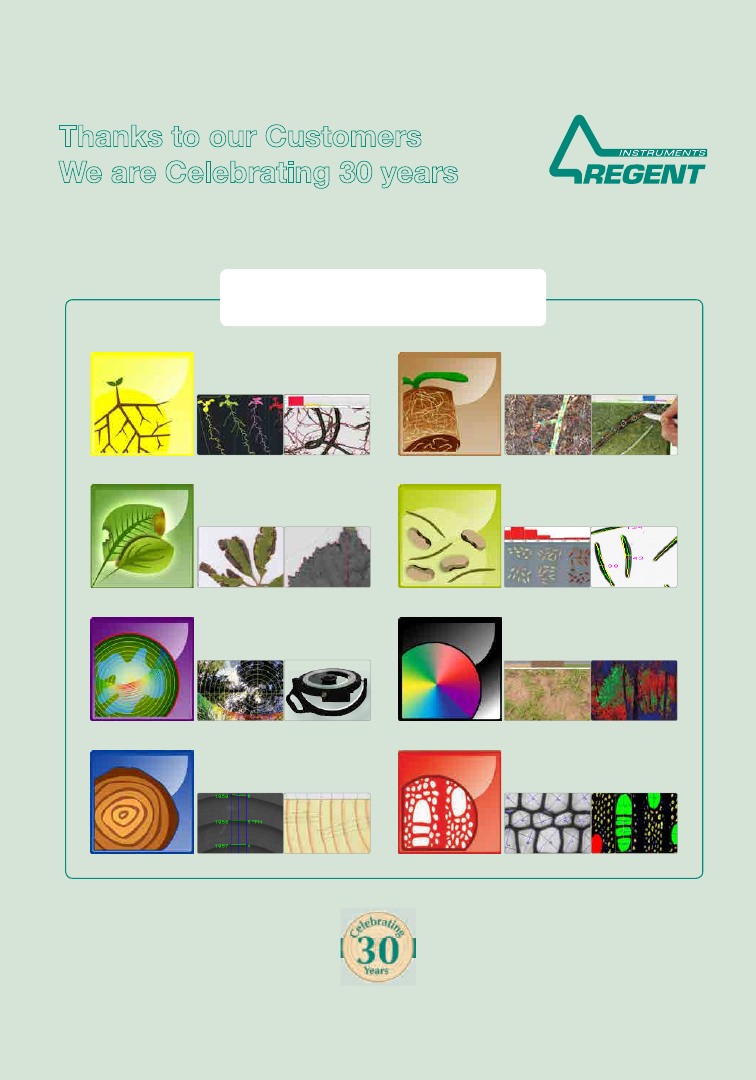
www.regentinstruments.com sales@regentinstruments.com
Thanks to our Customers
We are Celebrating 30 years
in the development and manufacturing of image analysis tools for plant and forest sciences!
WinSCANOPY™
2021
Analyser of Canopy Structure and Solar
Radiation from Hemispherical Images
WinSEEDLE™
2020
Seed and Needle Morphological
Analyser, Counter and Classifier
WinCELL™
2020
Analyser of Wood-Cell Structure
Parameters over Annual Rings
WinRHIZO™
2021
Analyser of Washed Roots and
Arabidopsis Seedlings
WinDENDRO™
2021
Tree-Ring and Wood Density Analyser
Optimised for Optical Scanners
WinRHIZO™ Tron
2020
Interactive Analyser of Images of
Roots Growing in Soil and Rhizotron
WinFOLIA™
2020
Leaf Area Meter, Morphological
Analyser and Damage Quantifier
WinCAM NDVI™
2020
Color Based Area Meter, and NDVI
and Basic Morphological Analyser
Our Eight Product Families
are offered to scientists worldwide